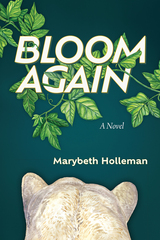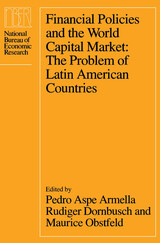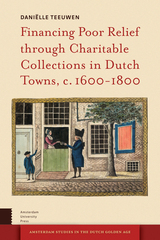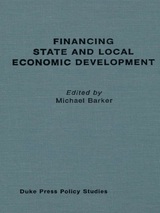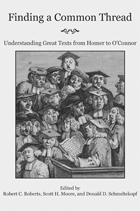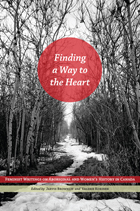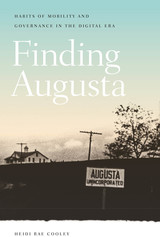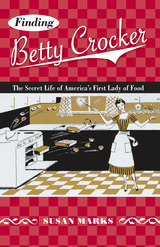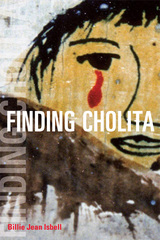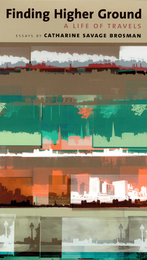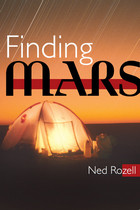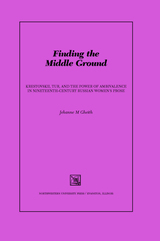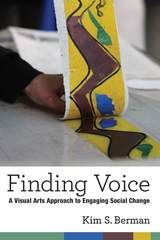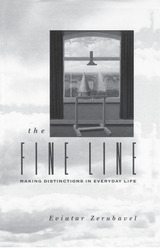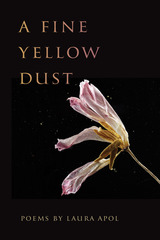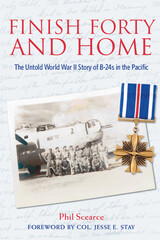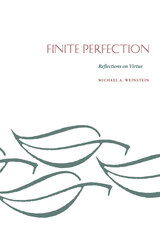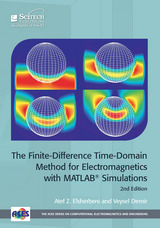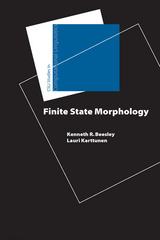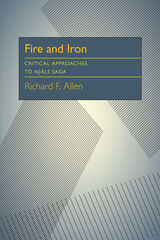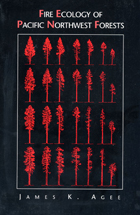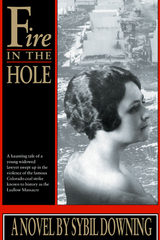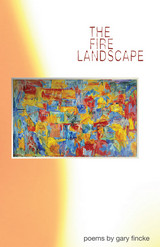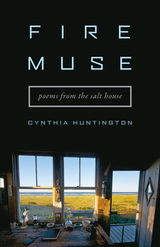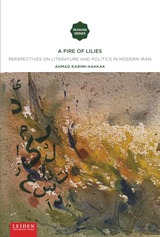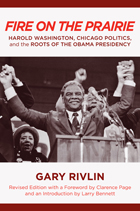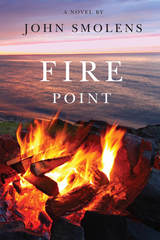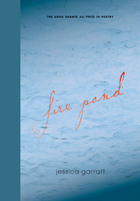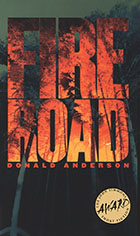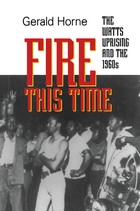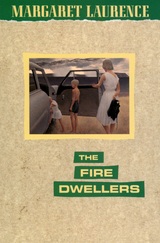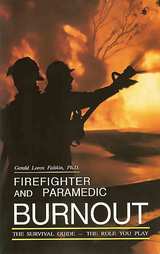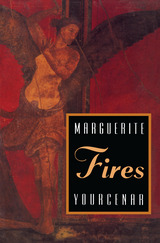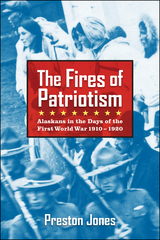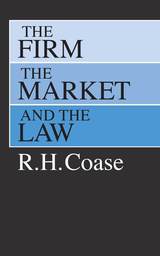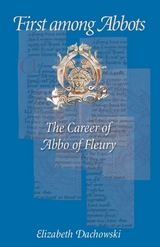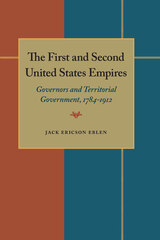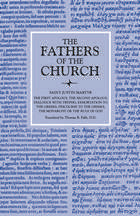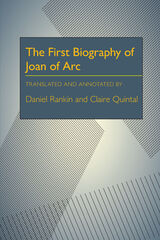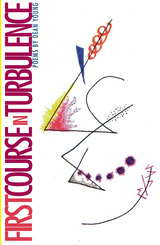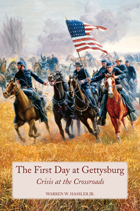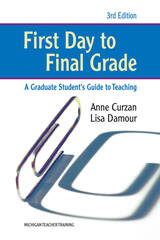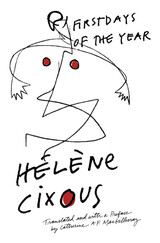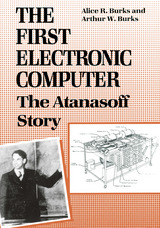Financial Policies and the World Capital Market: The Problem of Latin American Countries
Edited by Pedro Aspe Armella, Rudiger Dornbusch, and Maurice Obstfeld
University of Chicago Press, 1983 The essays brought together in this volume share a common objective: To bring a unifying methodological approach to the analysis of financial problems in developing, open economies. While the primary focus is on contemporary Latin America, the methods employed and the lessons learned are of wider applicability. The papers address the financial integration issue from three different perspectives. In some cases, a country study is the vehicle for an econometric investigation of a particular external linkage. In other cases, an individual country's experience suggests an economic model in which the stylized facts may be analyzed and developed. A third direction is unabashedly theoretical and formulates more general principles which are broadly applicable rather than country-specific.
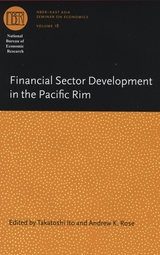 Financial Sector Development in the Pacific Rim
Edited by Takatoshi Ito and Andrew K. Rose
University of Chicago Press, 2009 The reform in Asian financial sectors—especially in banking and stock markets—has been remarkable since the currency crisis of 1997–98. East Asia is now a major player in international finance, providing serious competition to the more traditional financial centers of London and New York. Financial Sector Development in the Pacific Rim provides a rich collection of theoretical and empirical analyses of the growing capital markets in the region.
Bringing together authors from various East Asian and Pacific nations, this volume examines the institutional factors influencing financial innovation, the consequences of financial development, widespread consolidation occurring through mergers and acquisitions, and the implementation of policy reform. Financial Sector Development in the Pacific Rim offers the comparative analysis necessary to answer broad questions about economic development and the future of Asia.
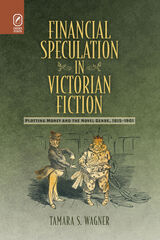 Financial Speculation in Victorian Fiction: Plotting Money and the Novel Genre, 1815–1901
Tamara S. Wagner
Ohio State University Press, 2010 In Financial Speculation in Victorian Fiction: Plotting Money and the Novel Genre, 1815-1901, Tamara S. Wagner explores the ways in which financial speculation was imagined and turned into narratives in Victorian Britain. Since there clearly was much more to literature’s use of the stock market than a mere reflection of contemporary economic crises alone, a much-needed reappraisal of the Victorians’ fascination with extended fiscal plots and metaphors also asks for a close reading of the ways in which this fascination remodeled the novel genre. It was not merely that interchanges between literary productions and the credit economy’s new instruments became self-consciously worked into fiction. Financial uncertainties functioned as an expression of indeterminacy and inscrutability, of an encompassing sense of instability. Bringing together canonical and still rarely discussed texts, this study analyzes the making and adaptation of specific motifs, of variously adapted tropes, extended metaphors, and recurring figures, including their transformation of a series of crises into narratives. Since these crises were often personal and emotional as well as financial, the new plots of speculation described maps of some of the major themes of nineteenth-century literature. These maps led across overlapping categories of literary culture, generating zones of intersection between otherwise markedly different subgenres that ranged from silver-fork fiction to the surprisingly protean versions of the sensation novel’s domestic Gothic. Financial plots fascinatingly operated as the intersecting points in these overlapping developments, compelling a reconsideration of literary form.
 The Financial Support of State Universities: A Study of the Financial Resources of State Universities in Light of the Experience of the Universities of the Old Northwest Territory, with a Suggested Policy for the Future
Richard Rees Price
Harvard University Press This study is, first of all, an historical survey of the development of the financial support of State Universities carved out of the original Northwest Territory—namely, Ohio, Indiana, Illinois, Michigan, Wisconsin, and Minnesota. As a preliminary to this survey some space is devoted to descriptive sketch of the difficult situation in which the universities of the United States found themselves about the year 1920 as a result of the rapid growth of student attendance and the financial problems which consequently confronted boards of trustees. The volume, in short, studies the following problems: Can a State finance indefinitely, and to the utmost limits of growth of its population, free or nearly free college education for as many of its eligible citizens as choose to apply? Can a State be expected ultimately to establish a sort of stable equilibrium of resources and liabilities in matters educational?
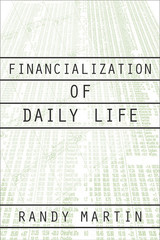 Financialization Of Daily Life
Randy Martin
Temple University Press, 2002 While trillions of dollars came and went in the stock market boom of the 1990s, the image of "every man and woman a CEO" may turn out to be the era's lasting legacy. Business news, once reserved to specialized papers or sections of the larger news of the day, came to the forefront in cable television and in cultural images of how ordinary people, through the internet and other avenues could not only master their financial life, but move money and equity around with the ease of a financial titan. Financialization of Daily Life looks at how this transformation occurred, and how it is just now becoming a significant, and troubling, aspect of our political and cultural life.Randy Martin takes us through all of the aspects of our "financialization." He examines how the shift in economic life arose not only from changes in culture, but also from new policy priorities that emphasize controlling inflation over promoting growth. He offers a close reading of self-help literature that teaches parents how to rear financially literate children and to instruct adults in the fundamentals of fiscal management. He examines just what a society that treats financial investment as a national past time really looks like, and how that society is transforming the world.In a country rocked by scandals in accounting and banking, the identification ordinary citizens make with, and the risk with which they engage in, the stock market calls into question the very basis of our economic system. Randy Martin spells out in clear terms the implications our financial doings—and undoing—have for the way we organize our lives, and, especially, our money.
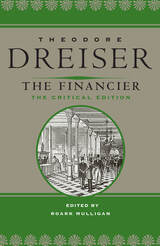 The Financier: The Critical Edition
Theodore Dreiser. Edited by Roark Mulligan
University of Illinois Press, 2010 First published in 1912, Theodore Dreiser's third novel, The Financier, captures the ruthlessness and sparkle of the Gilded Age alongside the charismatic amorality of the power brokers and bankers of the mid-nineteenth century. This volume is the first modern edition of The Financier to draw on the uncorrected page proofs of the original 1912 version, which established Dreiser as a master of the American business novel. The novel was the first volume of Dreiser’s Trilogy of Desire, also known as the Cowperwood Trilogy, which includes The Titan (1914) and The Stoic (1947). Dreiser laboriously researched the business practices and personal exploits of real-life robber baron Charles Yerkes to narrate Frank Algernon Cowperwood's early career in The Financier, which explores the unscrupulous world of finance from the Civil War through the panic incited by the 1871 Chicago fire. In 1927, the monumental novel reappeared in a radically revised version for which Dreiser, notorious for lengthy novels, agreed to cut more than two hundred and seventy pages. This revised version became the most familiar, reprinted by publishers and studied by scholars for decades. For this new edition, Roark Mulligan meticulously reviewed earlier versions of the novel and its publication history, including the last-minute removal of paragraphs, pages, and even whole chapters from the 1912 edition, cuts based mainly on the advice of H. L. Mencken. The restored text better matches Dreiser's original vision for the work. More than three hundred additional pages not available to modern readers--including those cut from the 1927 edition and more than seventy hastily removed from the manuscript just days before publication in 1912--more effectively establish characterization and motivation. Restored passages dedicated to the internal thoughts of major and minor characters bring a softer dimension to a novel primarily celebrated for its realistic attention to the cold external world of finance. Mulligan's historical commentary reveals new insights into Dreiser's creative practices and how his business knowledge shaped The Financier. This supplemental material considers the novel's place within the tradition of American business novels and its reflections on the scandalous business practices of the robber baron era.
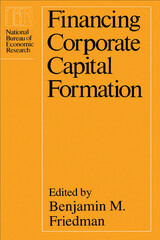 Financing Corporate Capital Formation
Edited by Benjamin M. Friedman
University of Chicago Press, 1986 Six leading economists examine the financing of corporate capital formation in the U.S. economy. In clear and nontechnical terms, their papers provide valuable information for economists and nonspecialists interested in such questions as why interest rates are so high, why corporate debt has accelerated in recent years, and how government debt affects private financial markets.
Addressing these questions, the contributors focus chiefly on three themes: the actual use of debt and equity financing by corporations in recent years; the factors that drive the financial markets' pricing of debt and equity securities; and the relationship between corporations' real investment decisions and their financial decisions. While some of the papers are primarily expository, others break new ground. Extending his previous work, Robert Taggart finds a closer relationship between corporate and government debt than has been supposed. Zvi Bodie, Alex Kane, and Robert McDonald conclude in their study that the volatility of interest rates under the Volcker regime has led to a rise in real interest rates because of investors' demand for a greater risk premium. All of the papers present empirical findings in a useful analytical framework.
For its new findings and for its expert overview of issues central to an understanding of the U.S. economy, Financing Corporate Capital Formation should be of both historical and practical interest to students of economics and practitioners in the corporate and financial community.
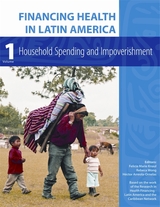 Financing Health in Latin America
Felicia Marie Knaul
Harvard University Press Among the most serious challenges facing health systems in lower and middle income countries is establishing efficient, fair, and sustainable financing mechanisms that offer universal protection. Lack of financial protection forces families to suffer the burden not only of illness but also of economic ruin and impoverishment. In Latin America, financial protection for health continues to be segmented and fragmented; health is mainly financed through out-of-pocket payments.
Financing Health in Latin America presents new and important insight into the crucial issue of financial protection in health systems. The book analyzes the level and determinants of catastrophic health expenditures among households in Argentina, Brazil, Chile, Colombia, Costa Rica, the Dominican Republic, Mexico, and Peru, applying both descriptive and econometric analyses. The results demonstrate that out-of-pocket health spending is pushing large segments of the population into impoverishment and that the poorest and most vulnerable segments of the population are most at risk of financial catastrophe. This work is a product of the collaboration between more than 25 researchers and 18 institutions associated with the Research for Health Financing in Latin America and the Caribbean Network, with support from the International Development Research Centre of Canada.
 Financing Institutions of Higher Education
John Y. Campbell
University of Chicago Press, 2026 An insightful, wide-ranging analysis of the economic hurdles facing America’s higher education system. The US higher education sector faces numerous economic challenges, including the stagnating number of college-age domestic students, geographic mismatch between population growth and the location of colleges and universities, financial pressures, including cutbacks in government support, growing student debt burdens, sticker prices that deter prospective applicants, and the risk of low capital market returns on endowment portfolios. This volume analyzes the responses of students, families, and the financial managers of higher education institutions to these challenges. It presents new insights into the substantial disparities in the financial structure of, and the financial challenges facing, different types of institutions. The volume draws together contributions from financial economics, public finance, and industrial organization, as well as the economics of education.
 Financing Local Government in Indonesia: Mis Sea#84
Nick Devas
Ohio University Press, 1989 Considering the size and importance of Indonesia, remarkably little has been published in the West about the society and government of that country. With over 160 million people, it is the fifth most populous country in the world. It is an archipelago of some 13,000 islands, stretching over 5,000 kilometers from from east to west, and contains within it an amazing array of cultures, as well as ethnic, economic, and religious variations.
Not surprisingly in view of the country's great size, vast regional differences, and cultural diversity, local government in Indonesia is on a massive scale. The task of managing and financing a system of local government is a troublesome one; the development needs of different regions are vast and the tasks facing local government are generally far beyond their limited resources. It is the purpose of this book not only to describe the existing system of local government but also to analyze it, identify weaknesses and problems with the present arrangement, and to propose realistic lines of reform. This collection of essays will provide a useful and constructive contribution to the discussion of issues central to the system of local government in Indonesia.
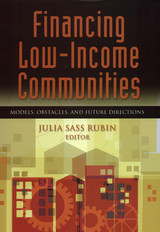 Financing Low Income Communities
Julia Sass Rubin
Russell Sage Foundation, 2007 Access to capital and financial services is crucial for healthy communities. However, many impoverished individuals and neighborhoods are routinely ignored by mainstream financial institutions. This neglect led to the creation of community development financial institutions (CDFIs), which provide low-income communities with financial services and act as a conduit to conventional financial organizations and capital markets. Edited by Julia Sass Rubin, Financing Low-Income Communities brings together leading experts in the field to assess what we know about the challenges of bringing financial services and capital to poor communities, map out future lines of research, and propose policy reforms to make these efforts more effective. The contributors to Financing Low-Income Communities distill research on key topics related to community development finance. Daniel Schneider and Peter Tufano examine the obstacles that make saving and asset accumulation difficult for low-income households—such as the fact that tens of millions of low-income and minority adults don't have a bank account—and consider solutions, like making it easier for low-wage workers to enroll in 401(K) plans. Jeanne Hogarth, Jane Kolodinksy, and Marianne Hilgert review evidence showing that community-based financial education programs can be effective in changing families' saving and budgeting patterns. Lisa Servon proposes strategies for addressing the challenges facing the microenterprise field in the United States. Julia Sass Rubin discusses ways community loan and venture capital funds have adapted in response to the decreased availability of funding, and considers potential sources of new capital, such as state governments and public pension funds. Marva Williams explores the evolution and recent performance of community development banks and credit unions. Kathleen Engel and Patricia McCoy document the proliferation of predatory lenders, who market loans at onerous interest rates to financially vulnerable families and the devastating effects of such lending on communities—from increased crime to falling home values and lower tax revenues. Rachel Bratt reviews the policies and programs used to make rental and owned housing financially accessible. Rob Hollister proposes a framework for evaluating the contributions of community development financial institutions. Despite the many accomplishments of CDFIs over the last four decades, changing political and economic conditions make it imperative that they adapt in order to survive. Financing Low-Income Communities charts out new directions for public and private organizations which aim to end the financial exclusion of marginalized neighborhoods.
 Financing Medicaid: Federalism and the Growth of America's Health Care Safety Net
Shanna Rose
University of Michigan Press, 2013 Conventional wisdom holds that programs for the poor are vulnerable to instability and retrenchment. Medicaid, however, has grown into the nation’s largest intergovernmental grant program, accounting for nearly half of all federal funding to state and local governments. Medicaid’s generous open-ended federal matching grants have given governors a powerful incentive to mobilize on behalf of its maintenance and expansion, using methods ranging from lobbying and negotiation to creative financing mechanisms and waivers to maximize federal financial assistance. Perceiving federal retrenchment efforts as a threat to states’ finances, governors, through the powerful National Governors’ Association, have repeatedly worked together in bipartisan fashion to defend the program against cutbacks. Financing Medicaidengagingly intertwines theory, historical narrative, and case studies, drawing on sources including archival materials from the National Governors’ Association and gubernatorial and presidential libraries, Centers for Medicare and Medicaid Services data, the Congressional Record, and interviews.
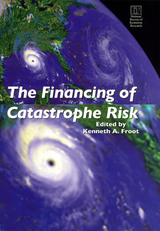 The Financing of Catastrophe Risk
Edited by Kenneth A. Froot
University of Chicago Press, 1999 Is it possible that the insurance and reinsurance industries cannot handle a major catastrophe? Ten years ago, the notion that the overall cost of a single catastrophic event might exceed $10 billion was unthinkable. With ever increasing property-casualty risks and unabated growth in hazard-prone areas, insurers and reinsurers now envision the possibility of disaster losses of $50 to $100 billion in the United States.
Against this backdrop, the capitalization of the insurance and reinsurance industries has become a crucial concern. While it remains unlikely that a single event might entirely bankrupt these industries, a big catastrophe could place firms under severe stress, jeopardizing both policy holders and investors and causing profound ripple effects throughout the U.S. economy.
The Financing of Catastrophe Risk assembles an impressive roster of experts from academia and industry to explore the disturbing yet realistic assumption that a large catastrophic event is inevitable. The essays offer tangible means of both reassessing and raising the level of preparedness throughout the insurance and reinsurance industries.
 The Financing of Politics: Latin American and European Perspectives
Edited by Carlos Malamud and Eduardo Posada-Carbo
University of London Press, 2004 This volume stresses the need for a comparative approach when dealing with the funding of party politics and a major related aspect - corruption. This topic lies at the heart of any realistic discussion of the logic of democratic representation. Corruption, or the perception of corruption, has led to an ever-increasing concern with political financing. In some cases the trend is toward a greater role for the state in financing political parties, in others the reverse is true. In this collection the individual experiences of several Latin American countries (including Chile, Colombia, Mexico, Uruguay, and Venezuela) are examined against the background of Western Europe, with a view to identifying similarities as well as differences. Given the centrality of political parties to liberal democracies, this subject is of great significance.
Contributors include Angel Alvarez (Universidad Central, Venezuela), Kevin Casas Zamora (University of Costa Rica), Fernando Cepeda Ulloa (Universidad de los Andes, Colombia), Pilar del Castillo (Spanish Minister of Education), Justin Fisher (University of Brunel), Manuel Antonio Garreton (University of Chile), Emilio Lama de Espinosa (Real Instituto Espanol Elcano de Relaciones Internacionales y Estrategicas, Madrid, Spain), Juan Molinar Horcasitas (Partido de Accion Nacional, Mexico), Michael Pinto-Duschinsky (University of Brunel), Weronique Pujas (University of Grenoble, France), Martin Rhodes (European University Institute, Florence, Italy), Diego Urbaneja (Universidad Central, Venezuela), and Laurence Whitehead (Nuffield College, University of Oxford, UK).
Financing Poor Relief through Charitable Collections in Dutch Towns, c. 1600-1800
Daniëlle Teeuwen
Amsterdam University Press, 2016 In the Dutch Republic, charitable collections, which formed the financial backbone of many poor relief institutions, were regularly organised by both religious and secular authorities. This book examines both the policies of church boards and town councils in organising these charitable appeals, as well as the general population's giving behaviour. Using archival sources from the towns of Delft, Utrecht, Zwolle, and 's-Hertogenbosch, Daniëlle Teeuwen shows how these authorities deployed organisational and rhetorical tactics-including creating awareness, establishing trust, and exerting pressure-to successfully promote fundraising campaigns. Not only did many relief institutions manage to collect large annual sums, but contributions came from across the socioeconomic spectrum.
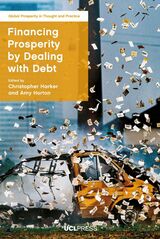 Financing Prosperity by Dealing with Debt
Edited by Christopher Harker and Amy Horton
University College London, 2022 Transdisciplinary approaches to resolving problematic debt.
In an era when many of us depend on debt to survive but struggle with its consequences, Financing Prosperity by Dealing with Debt draws together current thinking on how to solve debt crises and promote prosperity. By profiling existing action by credit unions and community organizations, alongside bold proposals for the future, with contributions from artists, activists, and academics, the book shows how we can rethink the validity and inevitability of many contemporary forms of debt through organizing debt audits, promoting debt cancellation, and expanding member-owned co-operatives. The authors set out legal and political methods for changing the rules of the system to provide debt relief and reshape economies for more inclusive and sustainable flourishing. The book also profiles community-based actions that are changing the role of debt in economic, social, and political life—among them, participatory art projects, radical advice networks, and ways of financing feminist green transition. This volume moves beyond critique to present a wealth of concrete ways to tackle debt and forge the prosperous communities we want for the future, making it relevant to a broad audience of academics, practitioners, activists, and policymakers.
Financing State and Local Economic Development
Michael Barker, ed.
Duke University Press, 1983 The contributors discuss alternative methods of financing state and local economic development, including the role of venture capital in urban development, the role of banking institutions in encouraging the growth of small business, and the place of pension funds in economic growth.
Find Me When You're Ready: Poems
Perry Janes
Northwestern University Press, 2024 A powerful debut and a lyric coming-of-age narrative that interrogates the myths we carry In Find Me When You’re Ready, Perry Janes traces a sweeping journey from Detroit to Los Angeles. As he leaves home and forges toward California, the speaker in these poems considers how we learn and mislearn ideas about manhood, confronts the aftershocks of childhood sexual abuse, and questions the human need for belonging. By embracing the touchstones of youth—movies, lore, graphic novels—these poems assert the speaker’s defiant right to childhood even amid damage. As the collection arcs toward adulthood, the speaker embodies a vision of healing that refuses easy binaries and embraces the joys of intimacy. Across each of its five acts, Perry Janes’s debut collection is driven by an interest troubling our creation myths, asking who built them, why we carry them, and how we might set them aside.
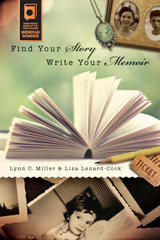 Find Your Story, Write Your Memoir
Lynn C. Miller and Lisa Lenard-Cook
University of Wisconsin Press, 2013 Every person has a story to tell, but few beginners know how to uncover their story's narrative potential. And despite a growing interest among students and creative writers, few guides to the genre of memoirs and creative nonfiction highlight compelling storytelling strategies. Addressing this gap, authors Lynn C. Miller and Lisa Lenard-Cook provide a compact, accessible guide to memoir writing that shows how an aspiring memoir writer can use storytelling tools and tactics borrowed from fiction to weave personal experiences into the shape of a story. Find Your Story, Write Your Memoir offers an overview of the building blocks of memoir writing. Individual chapters focus on key issues and challenges, such as the balance between the remembering narrator and the experiencing narrator, the capacity to honor the subjective voice, the occasion of telling (why does this narrator tell this story now?), creating an organically functional structure for a particular story, and taking the next steps with a written memoir. Drawing on their combined years of experience teaching memoir writing, authoring works of fiction and nonfiction, and working in autobiographical performance, Miller and Lenard-Cook provide a practical guide whose core philosophy is motivated by a key word: story.
Bronze winner, Foreword Book of the Year, Writing Guides
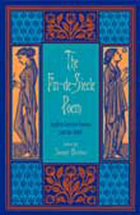 The Fin-de-Siècle Poem: English Literary Culture and the 1890s
Joseph Bristow
Ohio University Press, 2005 Featuring innovative research by emergent and established scholars, The Fin-de-Siècle Poem throws new light on the remarkable diversity of poetry produced at the close of the nineteenth century in England. Opening with a detailed preface that explains why literary historians have frequently underrated fin-de-siècle poetry, the collection shows how a strikingly rich body of lyrical and narrative poems anticipated many of the developments traditionally attributed to Modernism. Each chapter provides insights into the ways in which late-nineteenth-century poets represented their experiences of the city, their attitudes toward sexuality, their responses to empire, and their interest in religious belief. The eleven essays presented by editor Joseph Bristow pay renewed attention to the achievements of writers such as Oscar Wilde, John Davidson, Ernest Dowson, Lionel Johnson, and W. B. Yeats, who dominated the literary scene of the 1890s. This book also explores the lesser-known but equally significant advances made by notable women poets, including Michael Field, Amy Levy, Charlotte Mew, Alice Meynell, A. Mary F. Robinson, and Graham R. Tomson. The Fin-de-Siècle Poem brings together innovative research on poetry that has been typecast as the attenuated Victorianism that was rejected by Modernism. The contributors underscore the remarkable innovations in English poetry of the 1880s and 1890s and show how women poets stood shoulder-to-shoulder with their better-known male contemporaries.
FINDING A CLEAR PATH
JIM MINICK
West Virginia University Press, 2006 Finding a Clear Path intertwines literature, agriculture, and ecology as author Jim Minick takes the reader on many journeys, allowing you to float on a pond, fly with a titmouse, gather ginseng, and grow the lowly potato. The reader visits monarch butterflies and morel mushrooms, encountering beavers, black snakes, and bloodroot along the way. Using his background as a blueberry farmer, gardener and naturalist, Minick explores the Appalachian region and also introduces information that can be appreciated from a scientific point of view, explaining, for example, the ears of an owl, or the problems with the typical Christmas tree. Reading this collection of essays invites you to search for ways to better understand and appreciate this marvelous world, opening paths for journeys of your own.
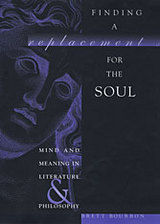 Finding a Replacement for the Soul: Mind and Meaning in Literature and Philosophy
Brett Bourbon
Harvard University Press, 2004 Approaching the study of literature as a unique form of the philosophy of language and mind—as a study of how we produce nonsense and imagine it as sense—this is a book about our human ways of making and losing meaning. Brett Bourbon asserts that our complex and variable relation with language defines a domain of meaning and being that is misconstrued and missed in philosophy, in literary studies, and in our ordinary understanding of what we are and how things make sense. Accordingly, his book seeks to demonstrate how the study of literature gives us the means to understand this relationship.
The book itself is framed by the literary and philosophical challenges presented by Joyce’s Finnegans Wake and Wittgenstein’s Philosophical Investigations. With reference to these books and the problems of interpretation and meaning that they pose, Bourbon makes a case for the fundamental philosophical character of the study of literature, and for its dependence on theories of meaning disguised as theories of mind. Within this context, he provides original accounts of what sentences, fictions, non-fictions, and poems are; produces a new account of the logical form of fiction and of the limits of interpretation that follow from it; and delineates a new and fruitful domain of inquiry in which literature, philosophy, and science intersect.
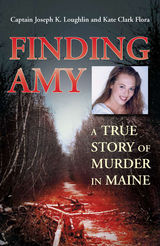 Finding Amy: A True Story of Murder in Maine
Joseph K. Loughlin and Kate Clark Flora
University Press of New England, 2011 Combining the drama of a true crime story with the detail of a police procedural, Finding Amy chronicles the investigation into one of the most shocking murders in recent Maine history. Twenty-five-year-old Amy St. Laurent was attractive, intelligent, and responsible. One October evening, she went out to show a friend from Florida the exciting nightlife of Portland’s Old Port section. She played pool. She danced. And then she disappeared. The police investigation into her murder riveted the state of Maine for months. This inside account of the investigation alternates between Kate Clark Flora’s objective tale of dedicated police work and the dramatic recollections of then-Lieutenant Joseph K. Loughlin, who oversaw the case. From the first call to a Portland detective about a missing woman to the police’s growing certainty that she had been murdered, from the heroic efforts to locate the body to the flight from Maine of their chief suspect, and from the painstaking work of collecting evidence and building a case to the struggles over jurisdictional questions to the twists and turns of the eventual trial, Finding Amy is a dramatic story of brutal murder and exemplary police work.
Finding Augusta: Habits of Mobility and Governance in the Digital Era
Heidi Rae Cooley
Dartmouth College Press, 2014 Winner of the 2015 Anne Friedberg Innovative Scholarship Award from the Society for Cinema and Media Studies Finding Augusta breaks new ground, revising how media studies interpret the relationship between our bodies and technology. This is a challenging exploration of how, for both good and ill, the sudden ubiquity of mobile devices, GPS systems, haptic technologies, and other forms of media alter individuals’ experience of their bodies and shape the social collective. The author succeeds in problematizing the most salient fact of contemporary mobile media technologies, namely, that they have become, like highways and plumbing, an infrastructure that regulates habit. Audacious in its originality, Finding Augusta will be of great interest to art and media scholars alike.
Finding Betty Crocker: The Secret Life of America’s First Lady of Food
Susan Marks
University of Minnesota Press, 2007 While Betty Crocker is often associated with 1950s happy homemaking, she originally belonged to a different generation. Created in 1921 as a “friend to homemakers” for the Washburn Crosby Company (a forerunner to General Mills) in Minneapolis, her purpose was to answer consumer mail. “She” was actually the women of the Home Service Department who signed Betty’s name. Eventually, Betty Crocker’s local radio show on WCCO expanded, and audiences around the nation tuned her in, tried her money-saving recipes, and wrote Betty nearly 5,000 fan letters per day. In Finding Betty Crocker, Susan Marks offers an utterly unique look at the culinary and marketing history of America’s First Lady of Food. Susan Marks is a writer/producer/director with her own production company, Lazy Susan Productions.
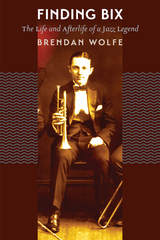 Finding Bix: The Life and Afterlife of a Jazz Legend
Brendan Wolfe
University of Iowa Press, 2017 Bix Beiderbecke was one of the first great legends of jazz. Among the most innovative cornet soloists of the 1920s and the first important white player, he invented the jazz ballad and pointed the way to “cool” jazz. But his recording career lasted just six years; he drank himself to death in 1931—at the age of twenty-eight. It was this meteoric rise and fall, combined with the searing originality of his playing and the mystery of his character—who was Bix? not even his friends or family seemed to know—that inspired subsequent generations to imitate him, worship him, and write about him. It also provoked Brendan Wolfe’s Finding Bix a personal and often surprising attempt to connect music, history, and legend.
A native of Beiderbecke’s hometown of Davenport, Iowa, Wolfe grew up seeing Bix’s iconic portrait on everything from posters to parking garages. He never heard his music, though, until cast to play a bit part in an Italian biopic filmed in Davenport. Then, after writing a newspaper review of a book about Beiderbecke, Wolfe unexpectedly received a letter from the late musician's nephew scolding him for getting a number of facts wrong. This is where Finding Bix begins: in Wolfe's good-faith attempt to get the facts right.
What follows, though, is anything but straightforward, as Wolfe discovers Bix Beiderbecke to be at the heart of furious and ever-timely disputes over addiction, race and the origins of jazz, sex, and the influence of commerce on art. He also uncovers proof that the only newspaper interview Bix gave in his lifetime was a fraud, almost entirely plagiarized from several different sources. In fact, Wolfe comes to realize that the closer he seems to get to Bix, the more the legend retreats.
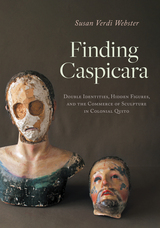 Finding Caspicara: Double Identities, Hidden Figures, and the Commerce of Sculpture in Colonial Quito
Susan Verdi Webster
University of Texas Press, 2024 An examination of sculpture and authorship in eighteenth-century Quito that documents Caspicara as a participant in the innovative artistic production of the city’s workshops and its widespread commerce of polychrome sculptures. Who is Caspicara? Nothing is known of Caspicara’s life, and not a single sculpture has been documented as his work. Yet traditional histories laud him as a prolific Indigenous sculptor in eighteenth-century Quito who created exquisite polychrome figures and became a national artistic icon. Drawing on extensive archival, historical, and object research, Susan Verdi Webster peels away layers of historiographical fabrication to reveal what we do and do not know about Caspicara and his work. Rather than being a solitary master, Caspicara collaborated with other, largely Indigenous artists in Quito’s protoindustrial workshops, manufacturing sculptures now credited to him alone. The high quality of Quito sculptures produced by anonymous artists turned the city into a hub of wide-ranging commerce in religious icons. The art world and post-independence Ecuadorians have lionized the one named sculptor, Caspicara, according to the Western model of the artist-genius, amplifying the market for works bearing his name and creating a national hero on par with European masters. Lost in this process were the artists themselves. Webster returns to their world, detailing their methods and labor and, for the first time, documenting a sculpture made by Caspicara.
Finding Cholita
Billie Jean Isbell
University of Illinois Press, 2008 Finding Cholita is fictionalized ethnography of the Ayacucho region of Peru covering a thirty-year period from the 1970s to today. It is a story of human tragedy resulting from the region's long history of discrimination, class oppression, and then the rise and fall of the communist organization Shining Path. The story's narrator, American anthropologist Dr. Alice Woodsley, attempts to locate her goddaughter, Cholita, who is known to have joined Shining Path and to have murdered her biological father, who fathered her through rape. Searching for Cholita, Woodsley devotes herself to documenting the stories of the countless Andean peasant women who were raped by soldiers, often going beyond witnessing as she helps the women relieve the pain of their sexual horror.
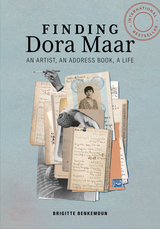 Finding Dora Maar: An Artist, an Address Book, a Life
Brigitte Benkemoun
J. Paul Getty Trust, The, 2020 “[A] spirited and deeply researched project…. [Benkemoun’s] affection for her subject is infectious. This book gives a satisfying treatment to a woman who has been confined for decades to a Cubist’s limited interpretation.” — Joumana Khatib, The New York Times
Merging biography, memoir, and cultural history, this compelling book, a bestseller in France, traces the life of Dora Maar through a serendipitous encounter with the artist’s address book.
In search of a replacement for his lost Hermès agenda, Brigitte Benkemoun’s husband buys a vintage diary on eBay. When it arrives, she opens it and finds inside private notes dating back to 1951—twenty pages of phone numbers and addresses for Balthus, Brassaï, André Breton, Jean Cocteau, Paul Éluard, Leonor Fini, Jacqueline Lamba, and other artistic luminaries of the European avant-garde. After realizing that the address book belonged to Dora Maar—Picasso’s famous “Weeping Woman” and a brilliant artist in her own right—Benkemoun embarks on a two-year voyage of discovery to learn more about this provocative, passionate, and enigmatic woman, and the role that each of these figures played in her life. Longlisted for the prestigious literary award Prix Renaudot, Finding Dora Maar is a fascinating and breathtaking portrait of the artist. This work received support from the French Ministry of Foreign Affairs and the Cultural Services of the French Embassy in the United States through their publishing assistance program.
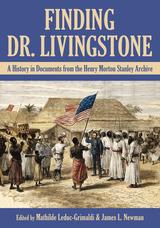 Finding Dr. Livingstone: A History in Documents from the Henry Morton Stanley Archives
Mathilde Leduc-Grimaldi; James L. Newman
Ohio University Press, 2020 This eye-opening perspective on Stanley’s expedition reveals new details about the Victorian explorer and his African crew on the brink of the colonial Scramble for Africa. In 1871, Welsh American journalist Henry M. Stanley traveled to Zanzibar in search of the “missing” Scottish explorer and missionary David Livingstone. A year later, Stanley emerged to announce that he had “found” and met with Livingstone on Lake Tanganyika. His alleged utterance there, “Dr. Livingstone, I presume,” was one of the most famous phrases of the nineteenth century, and Stanley’s book, How I Found Livingstone, became an international bestseller. In this fascinating volume Mathilde Leduc-Grimaldi and James L. Newman transcribe and annotate the entirety of Stanley’s documentation, making available for the first time in print a broader narrative of Stanley’s journey that includes never-before-seen primary source documents—worker contracts, vernacular plant names, maps, ruminations on life, lines of poetry, bills of lading—all scribbled in his field notebooks. Finding Dr. Livingstone is a crucial resource for those interested in exploration and colonization in the Victorian era, the scientific knowledge of the time, and the peoples and conditions of Tanzania prior to its colonization by Germany.
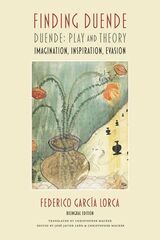 Finding Duende: Duende: Play and Theory | Imagination, Inspiration, Evasion
Federico García Lorca
Swan Isle Press, 2023 A new translation of Federico García Lorca’s captivating lecture on duende.
For years, Federico García Lorca’s lecture on duende has been a source of insight for writers and performers, including Ted Hughes, Nick Cave, Patti Smith, and Amanda Gorman.
Duende: Play and Theory not only provides a path into Lorca’s poetics and the arts of Spain; it is one of the strangest, most compelling accounts of inspiration ever offered by a poet. Contrasting the demon called duende with the Angel and the Muse, Lorca describes a mysterious telluric, diabolical current, an irreducible “it,” that can draw the best from both performer and audience.
This new translation by Christopher Maurer, based on a thoroughly revised edition of the Spanish original of 1933, also included in this volume, offers a more accurate and fully annotated version of the lecture, with an introduction by eminent philologist José Javier León. Drawing on a deep knowledge of flamenco, and correcting decades of discussion about duende and its supposed origins in Spanish folklore and popular speech, León shows to what extent the concept of duende—understood as the imp of artistic inspiration—was the playful, yet deadly serious, invention of Lorca himself.
Lorca’s bravura performance of duende is foreshadowed here with a bilingual version—the most complete ever—of his other major text on inspiration, “Imagination, Inspiration, Evasion,” in which he calls for greater freedom in poetry as if searching for duende and its “constant baptism of newly created things.”
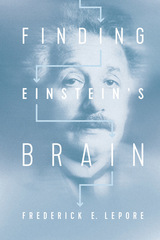 Finding Einstein's Brain
Lepore, Frederick E
Rutgers University Press, 2018 Albert Einstein remains the quintessential icon of modern genius. Like Newton and many others, his seminal work in physics includes the General Theory of Relativity, the Absolute Nature of Light, and perhaps the most famous equation of all time: E=mc2.
Following his death in 1955, Einstein’s brain was removed and preserved, but has never been fully or systematically studied. In fact, the sections are not even all in one place, and some are mysteriously unaccounted for! In this compelling tale, Frederick E. Lepore delves into the strange, elusive afterlife of Einstein’s brain, the controversy surrounding its use, and what its study represents for brain and/or intelligence studies.
Carefully reacting to the skepticism of 21st century neuroscience, Lepore more broadly examines the philosophical, medical, and scientific implications of brain-examination. Is the brain simply a computer? If so, how close are we to artificially creating a human brain? Could scientists create a second Einstein? This “biography of a brain” attempts to answer these questions, exploring what made Einstein’s brain anatomy exceptional, and how “found” photographs--discovered more than a half a century after his death--may begin to uncover the nature of genius.
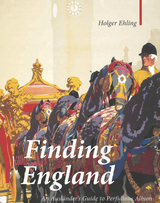 Finding England: An Auslander's Guide to Perfidious Albion
Holger Ehling
Haus Publishing, 2013 It is easy to find England on a map—it is part of that conspicuous thing in the North Sea, just off the French coast, and to the left of Denmark and Norway. It gets trickier once you are there: not even the English are keen to explain what England really is. Why do the English eat what they eat? Why do they do what they do? And why does the world think that England and Englishness is something to aspire to, something to adore? Holger Ehling takes us on a journey to iconic places, from London to Jarrow, from Stonehenge to Chipping Norton, from Shakespeare's Globe to the marvels of Blackpool, pondering along the way about history and everyday life and about what it is that makes these places and these people so quintessentially English and, therefore, different. We will meet royals and beggars, con-artists and real artists, heroes and villains, English roses and the legacy of the Empire Windrush. And perhaps, just perhaps—we will find England.
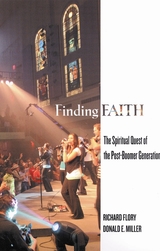 Finding Faith: The Spiritual Quest of the Post-Boomer Generation
Flory, Richard
Rutgers University Press, 2008 Despite the masses still lining up to enter mega-churches with warehouse-like architecture, casually dressed clergy, and pop Christian music, the "Post-Boomer" generation-those ranging in age from twenty to forty-is having second thoughts. In this perceptive look at the evolving face of Christianity in contemporary culture, sociologists Richard Flory and Donald E. Miller argue that we are on the verge of another potential revolution in how Christians worship and associate with one another.
Just as the formative experiences of Baby Boomers were colored by such things as the war in Vietnam, the 1960s, and a dramatic increase in their opportunities for individual expression, so Post-Boomers have grown up in less structured households with working (often divorced) parents. These childhood experiences leave them craving authentic spiritual experience, rather than entertainment, and also cause them to question institutions. Flory and Miller develop a typology that captures four current approaches to the Christian faith and argue that this generation represents a new religious orientation of "expressive communalism," in which they seek spiritual experience and fulfillment in community and through various expressive forms of spirituality, both private and public.
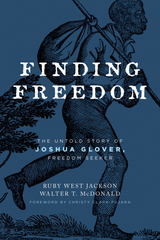 Finding Freedom: The Untold Story of Joshua Glover, Freedom Seeker
Ruby West Jackson
Wisconsin Historical Society Press, 2022 First published in 2007, the groundbreaking book Finding Freedom provided the first narrative account of the life of Joshua Glover, the freedom seeker who was famously broken out of jail by thousands of Wisconsin abolitionists in 1854. This paperback edition reframes Glover’s story with a new foreword from historian Christy Clark-Pujara. Employing original research, authors Ruby West Jackson and Walter T. McDonald chronicle Glover's days as an enslaved person in St. Louis, his violent capture and escape in Milwaukee, his journey on the Underground Railroad, and his thirty-three years of freedom in rural Canada. While the catalytic “Glover incident” captured national attention—pitting the state of Wisconsin against the Supreme Court and adding fuel to the pre–Civil War fire—the primary focus is on the ordinary citizens, both Black and white, with whom Joshua Glover interacted. A bittersweet story of bravery and compassion, Finding Freedom provides the first full picture of the man for whom so many fought and around whom so much history was made.
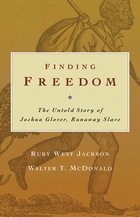 Finding Freedom: The Untold Story of Joshua Glover, Runaway Slave
Walter T. McDonald
Wisconsin Historical Society Press, 2007
"Shall a man be dragged back to Slavery from our Free Soil, without an open trial of his right to Liberty?" —Handbill circulated in Milwaukee on March 11, 1854
In Finding Freedom, Ruby West Jackson and Walter T. McDonald provide readers with the first narrative account of the life of Joshua Glover, the runaway slave who was famously broken out of jail by thousands of Wisconsin abolitionists in 1854. Employing original research, the authors chronicle Glover's days as a slave in St. Louis, his violent capture and thrilling escape in Milwaukee, his journey on the Underground Railroad, and his 33 years of freedom in rural Canada.
While Jackson and McDonald demonstrate how the catalytic "Glover incident" captured national attention—pitting the proud state of Wisconsin against the Supreme Court and adding fuel to the pre-Civil War fire—their primary focus is on the ordinary citizens, both black and white, with whom Joshua Glover interacted. A bittersweet story of bravery and compassion, Finding Freedom provides the first full picture of the man for whom so many fought, and around whom so much history was made.
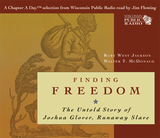 Finding Freedom: The Untold Story of Joshua Glover, Runaway Slave
Walter T. McDonald
Wisconsin Historical Society Press, 2012
"Shall a man be dragged back to Slavery from our Free Soil, without an open trial of his right to Liberty?" —Handbill circulated in Milwaukee on March 11, 1854
In Finding Freedom, Ruby West Jackson and Walter T. McDonald provide readers with the first narrative account of the life of Joshua Glover, the runaway slave who was famously broken out of jail by thousands of Wisconsin abolitionists in 1854. Employing original research, the authors chronicle Glover's days as a slave in St. Louis, his violent capture and thrilling escape in Milwaukee, his journey on the Underground Railroad, and his 33 years of freedom in rural Canada.
While Jackson and McDonald demonstrate how the catalytic "Glover incident" captured national attention—pitting the proud state of Wisconsin against the Supreme Court and adding fuel to the pre-Civil War fire—their primary focus is on the ordinary citizens, both black and white, with whom Joshua Glover interacted. A bittersweet story of bravery and compassion, Finding Freedom provides the first full picture of the man for whom so many fought, and around whom so much history was made.
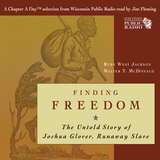 Finding Freedom: The Untold Story of Joshua Glover, Runaway Slave
Walter T. McDonald
Wisconsin Historical Society Press, 2012
"Shall a man be dragged back to Slavery from our Free Soil, without an open trial of his right to Liberty?" —Handbill circulated in Milwaukee on March 11, 1854
In Finding Freedom, Ruby West Jackson and Walter T. McDonald provide readers with the first narrative account of the life of Joshua Glover, the runaway slave who was famously broken out of jail by thousands of Wisconsin abolitionists in 1854. Employing original research, the authors chronicle Glover's days as a slave in St. Louis, his violent capture and thrilling escape in Milwaukee, his journey on the Underground Railroad, and his 33 years of freedom in rural Canada.
While Jackson and McDonald demonstrate how the catalytic "Glover incident" captured national attention—pitting the proud state of Wisconsin against the Supreme Court and adding fuel to the pre-Civil War fire—their primary focus is on the ordinary citizens, both black and white, with whom Joshua Glover interacted. A bittersweet story of bravery and compassion, Finding Freedom provides the first full picture of the man for whom so many fought, and around whom so much history was made.
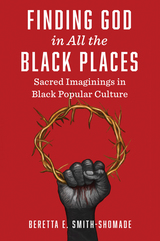 Finding God in All the Black Places: Sacred Imaginings in Black Popular Culture
Beretta E. Smith-Shomade
Rutgers University Press, 2025 This book is also freely available online as an open-access digital edition: https://manifold.ecds.emory.edu/projects/finding-god-in-all-the-black-places (https://dhjhkxawhe8q4.cloudfront.net/rup-wp-v2/wp-content/uploads/2025/01/28132142/9781978839809.pdf) In Finding God in All the Black Places, Beretta E. Smith-Shomade contends that Black spirituality and Black church religiosity are the critical crux of Black popular culture. She argues that cultural, community, and social support live within the Black church and that spirit, art, and progress are deeply entwined and seal this connection. Including the work of artists such as Mary J. Blige, D’Angelo, Erykah Badu, Prince, Spike Lee, and Oprah Winfrey, the book examines contemporary Black television, film, music and digital culture to demonstrate the role, impact, and dominance of spirituality and religion in Black popular culture. Smith-Shomade believes that acknowledging and comprehending the foundations of Black spirituality and Black church religiosity within Black popular culture provide a way for viewers, listeners, and users not only to endure but also to revitalize.
Finding Higher Ground: A Life Of Travels
Catharine Savage Brosman
University of Nevada Press, 2003 Essayist Catharine Savage Brosman explores the relationship of human beings to their environment, traveling from American deserts to dense European urban settings. Whether sipping wine in a Parisian café, partying with the jet set in Aspen, or contemplating the arid desert West that she loves, Brosman inhabits these settings, and many others, with a sense of adventure and discovery. To read these essays is to enjoy the company of a lively, thoughtful, original mind. Brosman’s "higher ground" is that place we all seek, where we can find and express our own best selves.
 Finding Ireland: A Poet's Explorations of Irish Literature and Culture
Richard Tillinghast
University of Notre Dame Press, 2008
Richard Tillinghast, a celebrated American poet and critic, lived for a year in Ireland in the early 1990s and then returned each year until he became a resident in 2005. From an insider/outsider perspective, he writes vividly and evocatively about the land and people of his adopted home, its culture, its literature, and its long, complex history.
Tillinghast orients the reader to Ireland as it is today. Following its entry into the European Union, Ireland changed radically from an impoverished, provincial, former British colony to a country where a farmer takes his wife on skiing holidays in Switzerland and is proud of his wine cellar, to one now home to immigrants from Europe, Africa, and Asia. For many Americans—Irish Americans in particular—Ireland is a mythic and timeless land; from his unique vantage point, Tillinghast debunks a good many stereotypes that prevent our seeing Ireland for what it was, as well as what it has become.
Most of Finding Ireland is devoted to thoughtful readings of the works of Irish writers and playwrights, including W. B. Yeats, Seamus Heaney, Oscar Wilde, and Brian Friel, as well as lesser-known names that deserve a wider readership. Tillinghast also considers the significant contributions of Anglo-Irish authors—John Millington Synge, Elizabeth Bowen, George Moore, Violet Martin and Edith Somerville, William Trevor, and Derek Mahon—with excursions into Irish architecture, music, and garden design.
In contemporary Ireland, Tillinghast finds a dynamic society that has stepped out of the shadows of its troubled past to embrace an inclusive, outward-looking interpretation of its history. Intimate in tone, entertaining, and always accessible, Finding Irelandcaptures an expatriate’s enthusiasm for his new country and its evolving identity.
“This is the book to give anyone going to Ireland for the first—or the twentieth—time. Tillinghast tells us where traditional music is best heard, and how to look at Gandon’s Custom House and the Rock of Cashel. He is well informed about Irish history and the realities of twenty-first century Ireland. But he also recognizes that there is, as Yeats reminds us, ‘an Ireland/The poets have imagined, terrible and gay.’ Finding Ireland offers a sensitive introduction to that other Ireland in a series of meditations on Irish writers and the places they evoke for us, abiding presences even in today’s bustling republic of high-rises and industrial parks.” —Robert Tracy, Emeritus Professor of English and Celtic Studies, University of California, Berkeley
“In Finding Ireland, Richard Tillinghast gives us the essays of a ‘man of letters’ as he surveys a given cultural scene. There is something about them that tacitly reaffirms the idea of an informed traveler, seeking not so much earth-shaking epiphanies, but one who can register nuance and rhythms, one who can see how things are unfolding within the other culture. What holds this all together is Richard Tillinghast’s voice, his imagination, modes of perception, and his long intimacy with literary art in general, and Irish writing in particular, and then add to that the delight we can take in his own curiosity, and how he uses it almost as if on our behalf. That voice is what we trust, and that voice is what we learn from. His book adds immensely to our conversation about Irish culture and society.” —Frederick Marchant, Suffolk University
“Tillinghast offers an affectionate, questioning exploration of Ireland’s literary inheritance and a poet’s keen sense of the places which have inspired the country’s writers. He is alert, too, to the continuities and changes which characterize current experience.” —Terence Brown, Trinity College, Dublin
“Finding Ireland: A Poet's Explorations of Irish literature and Cultureoffers a welcome gathering of perceptive pieces by the poet-critic Richard Tillinghast. An American who has lived on and off in Ireland, Tillinghast brings a refreshingly clear-eyed perspective to his subjects. Whether riffing on the aftermath of the Celtic Tiger, Nobel laureates like Yeats and Heaney, or Irish traditional music and gardens, he writes with grace, aplomb, and unflagging insight. A joy to read.” —George Bornstein, C. A. Patrides Professor of Literature, University of Michigan
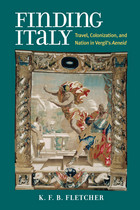 Finding Italy: Travel, Nation, and Colonization in Vergil's Aeneid
K. F. B. Fletcher
University of Michigan Press, 2014 Finding Italy explores the journey of the Romans’ ancestor Aeneas and his fellow Trojans from their old home, Troy, to their new country, Italy, narrated in Vergil’s epic poem Aeneid. K. F. B. Fletcher argues that a main narrative theme is patriotism, specifically the problem of how one comes to love one’s new country. The various directions Aeneas receives throughout the first half of the poem are meant to create this love, explaining both to Aeneas and to Vergil’s readers how they should respond to the new, unified Italy synonymous with Rome. These directions come from the gods, or from people close to Aeneas who have divine connections, and they all serve to instill an emotional connection to the land, creating a mental image of Italy that tells him far more about his destination than merely its location, and ultimately making him fall in love with Italy enough to fight for it soon after his arrival. The poem thus dramatizes the birth of nationalism, as Italy is only a concept to Aeneas throughout his trip; these directions do not describe Italy as it is at the time of Aeneas’ journey, but as an ideal to be realized by Aeneas and his descendants, reaching its final, perfect form under Augustus Caesar. Finding Italy provides a very detailed reading of the directions Aeneas receives by situating them within their relevant contexts: ancient geography, Greek colonization narratives, prophecy, and ancient views of wandering. Vergil draws on all of these concepts to craft instructions that create in Aeneas an attachment to Italy before he ever arrives, a process that dramatizes a key emotional problem in the late first century BCE in the wake of the Social and Civil Wars: how to balance the love of one's modest birthplace with the love of Rome, the larger city that now encompasses it.
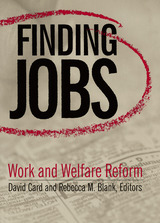 Finding Jobs: Work and Welfare Reform
David Card
Russell Sage Foundation, 2000 Do plummeting welfare caseloads and rising employment prove that welfare reform policies have succeeded, or is this success due primarily to the job explosion created by today's robust economy? With roughly one to two million people expected to leave welfare in the coming decades, uncertainty about their long-term prospects troubles many social scientists. Finding Jobs offers a thorough examination of the low-skill labor market and its capacity to sustain this rising tide of workers, many of whom are single mothers with limited education. Each chapter examines specific trends in the labor market to ask such questions as: How secure are these low-skill jobs, particularly in the event of a recession? What can these workers expect in terms of wage growth and career advancement opportunities? How will a surge in the workforce affect opportunities for those already employed in low-skill jobs? Finding Jobs offers both good and bad news about work and welfare reform. Although the research presented in this book demonstrates that it is possible to find jobs for people who have traditionally relied on public assistance, it also offers cautionary evidence that today's strong economy may mask enduring underlying problems. Finding Jobs shows that the low-wage labor market is particularly vulnerable to economic downswings and that lower skilled workers enjoy less job stability. Several chapters illustrate why financial incentives, such as the Earned Income Tax Credit (EITC), are as essential to encouraging workforce participation as job search programs. Other chapters show the importance of including provisions for health insurance, and of increasing subsidies for child care to assist the large population of working single mothers affected by welfare reform. Finding Jobs also examines the potential costs of new welfare restrictions. It looks at how states can improve their flexibility in imposing time limits on families receiving welfare, and calls into question the cutbacks in eligibility for immigrants, who traditionally have relied less on public assistance than their native-born counterparts. Finding Jobs is an informative and wide-ranging inquiry into the issues raised by welfare reform. Based on comprehensive new data, this volume offers valuable guidance to policymakers looking to design policies that will increase work, raise incomes, and lower poverty in changing economic conditions.
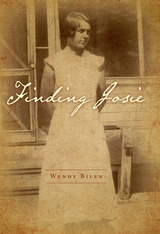 Finding Josie
Wendy Bilen
Wisconsin Historical Society Press, 2008 With a focus squarely on the Midwest, Wendy Bilen pieces together the history of her grandmother, Josie Broadhead, born in 1911 and raised on the North Dakota prairie. Josie married a Wisconsin farmer and moved to a large dairy farm outside La Crosse; along the way she began taking in people in need of a home: ". . . beggars and drunks and children of drunks, mentally ill children and children with mentally ill parents. Brothers and cousins and sisters and in-laws and strangers." By taking on these challenges that no one else wanted, Josie left an almost mythical legacy. Years after Josie's death, Bilen embarks on a journey to unearth Josie's story and quickly realizes that the search is about her, too. As she discovers her grandmother's complicated nature ("a woman proud and humble, loving and unaffectionate, strict and visionary, joyful and troubled, a woman held together by contradictions like an arch and its capstone"), she learns much about herself and her own choices. And as she breathes life into Josie and her family, friends, and neighbors, the author evokes a powerful sense of place of small towns and farms, of prairie, of Josie's home, all of which feel both fresh and satisfyingly familiar. Much more than mere memoir or family history, this dual story about Bilen's journey illuminates the surprising ways our lives intersect with our ancestors'. An extraordinary story about a seemingly ordinary woman, Finding Josie will inspire readers to explore their own family history in their own way.
Finding Mars
Ned Rozell
University of Alaska Press, 2011 Finding Mars is an interwoven tale of science, travel, and adventure, as science writer Ned Rozell accompanies permafrost researcher—and inveterate wanderer—Kenji Yoshikawa on a 750-mile trek by snowmobile through the Alaska wilderness. Along the way, Rozell learns about Yoshikawa’s fascinating life, from his boyhood in Tokyo to the youthful wanderlust that led him to push a wheeled cart across the Sahara, ski to the South Pole, and take a sailboat into the frozen reaches of the Arctic Ocean, spending a winter frozen in the ice near Barrow. It’s an always on-the-move account of a man driven not just by the desire to fill in the blank spots on a map, but also to learn everything he can about them—and a ringing testament to the power of science, enthusiasm, and individual inspiration.
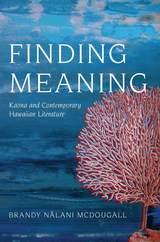 Finding Meaning: Kaona and Contemporary Hawaiian Literature
Brandy Nalani McDougall
University of Arizona Press, 2016 Winner of the Native American Literature Symposium's Beatrice Medicine Award for Published Monograph
In this first extensive study of contemporary Hawaiian literature, Brandy Nalani McDougall examines a vibrant selection of fiction, poetry, and drama by emerging and established Hawaiian authors, including Haunani-Kay Trask, John Dominis Holt, Imaikalani Kalahele, and Victoria Nalani Kneubuhl. At the center of the analysis is a hallmark of Hawaiian aesthetics—kaona, the intellectual practice of hiding and finding meaning that encompasses the allegorical, the symbolic, the allusive, and the figurative.
With a poet’s attention to detail, McDougall interprets examples of kaona, guiding readers through olelo no'eau (proverbs), mo‘olelo (literature and histories), and mooku'auhau (genealogies) alongside their contemporary literary descendants, unveiling complex layers of Hawaiian identity, culture, history, politics, and ecology.
Throughout, McDougall asserts that “kaona connectivity” not only carries bright possibilities for connecting the present to the past, but it may also ignite a decolonial future. Ultimately, Finding Meaning affirms the tremendous power of Indigenous stories and genealogies to give activism and decolonization movements lasting meaning.
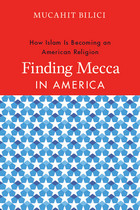 Finding Mecca in America: How Islam Is Becoming an American Religion
Mucahit Bilici
University of Chicago Press, 2012 The events of 9/11 had a profound impact on American society, but they had an even more lasting effect on Muslims living in the United States. Once practically invisible, they suddenly found themselves overexposed. By describing how Islam in America began as a strange cultural object and is gradually sinking into familiarity, Finding Mecca in America illuminates the growing relationship between Islam and American culture as Muslims find a homeland in America. Rich in ethnographic detail, the book is an up-close account of how Islam takes its American shape. In this book, Mucahit Bilici traces American Muslims’ progress from outsiders to natives and from immigrants to citizens. Drawing on the philosophies of Simmel and Heidegger, Bilici develops a novel sociological approach and offers insights into the civil rights activities of Muslim Americans, their increasing efforts at interfaith dialogue, and the recent phenomenon of Muslim ethnic comedy. Theoretically sophisticated, Finding Mecca in America is both a portrait of American Islam and a groundbreaking study of what it means to feel at home.
 Finding Mr. Perfect: K-Drama, Pop Culture, Romance, and Race
Min Joo Lee
Rutgers University Press, 2026 Finding Mr. Perfect explores the romantic relationships between Korean men and women who were inspired by romantic Korean televisual depictions of Korean masculinity to travel to Korea as tourists. Author Min Joo Lee argues that disparate racialized erotic desires of Korean pop culture fans, foreign tourists to Korea, Korean men, and the Korean nation converge to configure the interracial and transnational relationships between these tourists and Korean men. Lee observes how racial prejudices are developed and manifested through interracial and transnational intimate desires and encounters. This book is the first to examine the interracial relationships between Hallyu tourists and Korean men. Furthermore, it is the first to analyze Korea as a popular romance tourist destination for heterosexual women. Finding Mr. Perfect illuminates South Korean popular culture’s transnational fandom and tourism as a global phenomenon where fantasies and realities converge to have a tangible impact on individual lives.
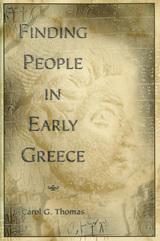 Finding People in Early Greece
Carol G. Thomas
University of Missouri Press, 2005
Progress toward a fuller understanding of preclassical Greece was steady until the 1950s, when a general crisis in all the human-centered disciplines erupted. Scholars undertook a serious reexamination of their tools and data, producing new brands of history, geography, anthropology, archaeology, economics, and sociology. Although these new approaches were widely adopted, the developments also bred a countercurrent beginning in the 1980s and 1990s. The fallout from this backlash was serious in several respects, one of the most important of which was the elimination of the human element in the products of the “new” human-centered disciplines.
In Finding People in Early Greece, Carol Thomas addresses these developments and the recent accommodation and rapprochement of the “old” and “new” that has emerged. She then offers two case studies: Jason and the voyage of the Argo, deriving from the “Age of Heroes,” and Hesiod, probably the first literate European, who lived ca. 700 BCE during the “Age of Revolution,” which catapulted Greece out of its long Dark Age into the vibrant Classical Age. With these two examples, Thomas shows that through a combination of scientific tools and historically oriented scholarship, a larger context in which individual subjects lived can be offered.
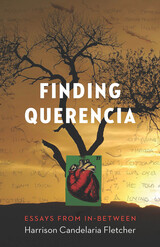 Finding Querencia: Essays from In-Between
Harrison Candelaria Fletcher
Ohio State University Press, 2022 Winner, 2022 New Mexico-Arizona Book Award (Autobiography/Memoir category)
With its roots in the Spanish verb querer—“to want, to love”—the term querencia has been called untranslatable but has come to mean a place of safety and belonging, that which we yearn for when we yearn for home. In this striking essay collection, Harrison Candelaria Fletcher shows that querencia is also a state of being: the peace that arises when we reconcile who we are. A New Mexican of mixed Latinx and white ethnicity, Candelaria Fletcher ventures into the fault lines of culture, landscape, and spirit to discover the source of his lifelong hauntings. Writing in the persona of coyote, New Mexican slang for “mixed,” he explores the hyphenated elements within himself, including his whiteness. Blending memory, imagination, form, and language, each essay spirals outward to investigate, accept, and embrace hybridity. Ultimately, Finding Querencia offers a new vocabulary of mixed-ness, a way to reconcile the crosscurrents of self and soul.
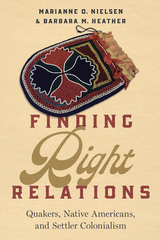 Finding Right Relations: Quakers, Native Americans, and Settler Colonialism
Marianne O. Nielsen and Barbara M. Heather
University of Arizona Press, 2022 Quakers were one of the early settler colonist groups to invade northeastern North America. William Penn set out to develop a “Holy Experiment,” or utopian colony, in what is now Pennsylvania. Here, he thought, his settler colonists would live in harmony with the Indigenous Lenape and other settler colonists.
Centering on the relationship between Quaker colonists and the Lenape people, Finding Right Relations explores the contradictory position of the Quakers as both egalitarian, pacifist people, and as settler colonists. This book explores major challenges to Quaker beliefs and resulting relations with American Indians from the mid-seventeenth century to the late nineteenth century. It shows how the Quakers not only failed to prevent settler colonial violence against American Indians but also perpetuated it. It provides historical examples such as the French and Indian War, the massacre of the Conestoga Indians, and the American Indian boarding schools to explore the power of colonialism to corrupt even those colonists with a belief system rooted in social justice.
While this truth rubs against Quaker identity as pacifists and socially conscious, justice-minded people, the authors address how facing these truths provide ways forward for achieving restitution for the harms of the past. This book offers a path to truth telling that is essential to the healing process.
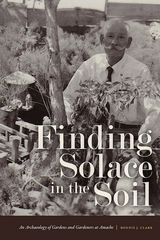 Finding Solace in the Soil: An Archaeology of Gardens and Gardeners at Amache
Bonnie J. Clark
University Press of Colorado, 2022 Finding Solace in the Soil tells the largely unknown story of the gardens of Amache, the War Relocation Authority incarceration camp in Colorado. Combining physical evidence with oral histories and archival data and enriched by the personal photographs and memories of former Amache incarcerees, the book describes how gardeners cultivated community in confinement.
Before incarceration, many at Amache had been farmers, gardeners, or nursery workers. Between 1942 and 1945, they applied their horticultural expertise to the difficult high plains landscape of southeastern Colorado. At Amache they worked to form microclimates, reduce blowing sand, grow better food, and achieve stability and preserve community at a time of dehumanizing dispossession. In this book archaeologist Bonnie J. Clark examines botanical data like seeds, garden-related artifacts, and other material evidence found at Amache, as well as oral histories from survivors and archival data including personal letters and government records, to recount how the prisoners of Amache transformed the harsh military setting of the camp into something resembling a town. She discusses the varieties of gardens found at the site, their place within Japanese and Japanese American horticultural traditions, and innovations brought about by the creative use of limited camp resources.
The gardens were regarded by the incarcerees as a gift to themselves and to each other. And they were also, it turns out, a gift to the future as repositories of generational knowledge where a philosophical stance toward nature was made manifest through innovation and horticultural skill. Framing the gardens and gardeners of Amache within the larger context of the incarceration of Japanese Americans and of recent scholarship on displacement and confinement, Finding Solace in the Soil will be of interest to gardeners, historical archaeologists, landscape archaeologists, cultural anthropologists, and scholars of Japanese American history and horticultural history.
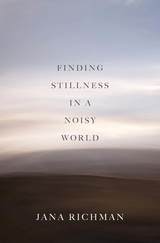 Finding Stillness in a Noisy World
Jana Richman
University of Utah Press, 2018 Moving through the settings of her life—red rock canyons, aspen forests, mountains, and cities—Jana Richman probes the depths of her internal landscape and asks how we can find stillness in our noisy world. In essays both personal and profoundly universal, Richman eschews quick and easy answers for quiet reflections on the questions: In a culture demanding that every voice be heard, how do we make sense of the resulting roar? Where do we seek solace when the last quiet places are sacrificed to human hubris? How do we shed the angst thrust upon us to create lives of peace?
In these wide-ranging personal essays, Richman travels interior roads through fear, kindness, ignorance, darkness, wildness, compassion, solitude, loneliness, and more—always asking how external geography informs our internal geography. From the monsoonal rains in the carved slot canyons of the Escalante to the eroticism of dirt on skin in a remote slice of the Grand Canyon; from the defiance of academic authority to the curled, arthritic fingers of her mother and grandmothers, Richman sinks into the realities that make us human and fallible and blessed.
Inspired by masters of the traditional personal essay such as E.B. White and M.F.K. Fisher, Richman adds a unique, deeply intimate—and often humorous—voice to the concurrence of human experience. Like a desert stream, human meaning meanders before coming to rest. Richman’s authentic voice illuminates the place where internal and external landscapes merge into meaning. Time with these genuine, inclusive pieces is time well spent.
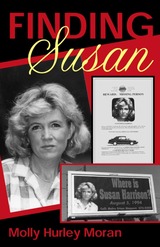 Finding Susan
Molly Hurley Moran
Southern Illinois University Press, 2006 A woman’s heartrending search for her sister Advancing with the suspense and deft reportage of the true-crime genre and fueled by the poignancy of a literary memoir, Finding Susan is Molly Hurley Moran’s pointed exploration of the disappearance of her sister and her family’s descent into the surreal world of psychics and detectives they once dismissed as the stuff of Lifetime movies. Susan Hurley Harrison disappeared from upscale Ruxton, Maryland on August 5, 1994. Her body was discovered in the woods of northern Maryland two years later and her death was ruled a homicide. Although Susan’s case drew substantial media attention—including a spot on Unsolved Mysteries—no one, to date, has ever been charged with her murder. In piecing together a mosaic of Susan’s final years, Moran grew to believe her sister was a victim of domestic violence. An academic by trade, Moran employs a scholar’s precision and razor-sharp feminist analysis in this valiant effort to come to terms with Susan’s life and death and to understand her sister in a way she did not when she was alive. “Finding” Susan refers to both the search for Susan's body and the search for the formative forces of her life. Mirroring elements of high-profile cases from Laci Peterson to Nicole Brown Simpson, Finding Susan is one woman’s chronicle of loss and remembrance that arrestingly details the helplessness experienced by families of missing persons and calls critical attention to our alarming blindness to domestic abuse. Including appendixes of domestic violence resources, Finding Susan serves as a guide for concerned family members and friends of at-risk women to help identify the warning signs of domestic abuse. Thirty-six illustrations are a powerful complement to the volume.
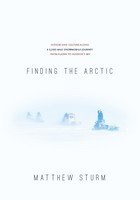 Finding the Arctic: History and Culture Along a 2,500-Mile Snowmobile Journey from Alaska to Hudson’s Bay
Matthew Sturm
University of Alaska Press, 2012 The history of the Arctic is rich, filled with fascinating and heroic stories of exploration, multicultural interactions, and humans facing nature at its most extreme. In Finding the Arctic, the accomplished arctic researcher Matthew Sturm collects some of the most memorable and moving of these stories and weaves them around his own story of a 2,500-mile snowmobile expedition across arctic Alaska and Canada. During that trip, Sturm and six companions followed a circuitous route that brought them to many of the most historic spots in the North. They stood in the footsteps of their predecessors, experienced the landscape and the weather, and gained an intimate perspective on notable historical events, all chronicled here by Sturm. Written with humor and pathos, Finding the Arctic is a classic tale of adventure travel. And throughout the book,Sturm, with his thirty-eight years of experience in the North, emerges as an excellent guide for any who wish to understand the Arctic of today and yesterday.
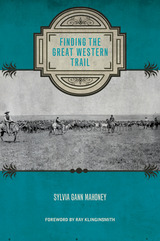 Finding the Great Western Trail
Sylvia Gann Mahoney
Texas Tech University Press, 2015 The Great Western Trail (GWT) is a nineteenth-century cattle trail that originated in northern Mexico, ran west parallel to the Chisholm Trail, traversed the United States for some two thousand miles, and terminated after crossing the Canadian border. Yet through time, misinformation, and the perpetuation of error, the historic path of this once-crucial cattle trail has been lost. Finding the Great Western Trail documents the first multi-community effort made to recover evidence and verify the route of the Great Western Trail.
The GWT had long been celebrated in two neighboring communities: Vernon, Texas, and Altus, Oklahoma. Separated by the Red River, a natural border that cattle trail drovers forded with their herds, both Vernon and Altus maintained a living trail history with exhibits at local museums, annual trail-related events, ongoing narratives from local descendants of drovers, and historical monuments and structures. So when Western Trail Historical Society members in Altus challenged the Vernon Rotary Club to mark the trail across Texas every six miles, the effort soon spread along the trail in part through Rotary networks from Mexico, across nine US states, and into Saskatchewan, Canada.
This book is the story of finding and marking the trail, and it stands as a record of each community’s efforts to uncover their own GWT history. What began as local bravado transformed into a grass-roots project that, one hopes, will bring the previously obscured history of the Great Western Trail to light.
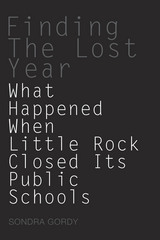 Finding the Lost Year: What Happened When Little Rock Closed Its Public Schools
Sondra Gordy
University of Arkansas Press, 2009 Much has been written about the Little Rock School Crisis of 1957, but very little has been devoted to the following year—the Lost Year, 1958–59—when Little Rock schools were closed to all students, both black and white. Finding the Lost Year is the first book to look at the unresolved elements of the school desegregation crisis and how it turned into a community crisis, when policymakers thwarted desegregation and challenged the creation of a racially integrated community and when competing groups staked out agendas that set Arkansas’s capital on a path that has played out for the past fifty years. In Little Rock in 1958, 3,665 students were locked out of a free public education. Teachers’ lives were disrupted, but students’ lives were even more confused. Some were able to attend schools outside the city, some left the state, some joined the military, some took correspondence courses, but fully 50 percent of the black students went without any schooling. Drawing on personal interviews with over sixty former teachers and students, black and white, Gordy details the long-term consequences for students affected by events and circumstances over which they had little control. “Fifty years ago segregationists trying to keep black students out of Little Rock Central High inadvertently broke up one of the country’s greatest football dynasties. . . . Wait a minute. . . . Who said you can’t have a high school football team just because you don’t have a high school? Canceling football, Faubus decreed, would be ‘a cruel and unnecessary blow to the children.’ O.K. then, everyone agreed. Play ball!”
—“Blinded by History,” Sports Illustrated
Finding the Middle Ground: Krestovskii, Tur, and the Power of Ambivalence in Nineteenth-Century Russian Women's Prose
Jehanne Gheith
Northwestern University Press, 2004 Though among the most prominent writers in Russia in the mid-nineteenth century, Evgeniia Tur (1815-92) and V. Krestovskii (1820-89) are now little known. By looking in depth at these writers, their work, and their historical and aesthetic significance, Jehanne M. Gheith shows how taking women's writings into account transforms traditional understandings of the field of nineteenth-century Russian literature. Gheith's analysis of these writers' biographies, prose, and criticism intervenes in debates about the Russian literary tradition in general, Russian women's writing in particular, and feminist criticism on female authors and authority as it has largely been developed in and for Western contexts.
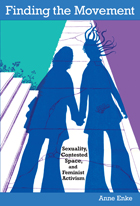 Finding the Movement: Sexuality, Contested Space, and Feminist Activism
Finn Enke
Duke University Press, 2007 In Finding the Movement, Anne Enke reveals that diverse women’s engagement with public spaces gave rise to and profoundly shaped second-wave feminism. Focusing on women’s activism in Detroit, Chicago, and Minneapolis-St. Paul during the 1960s and 1970s, Enke describes how women across race and class created a massive groundswell of feminist activism by directly intervening in the urban landscape. They secured illicit meeting spaces and gained access to public athletic fields. They fought to open bars to women and abolish gendered dress codes and prohibitions against lesbian congregation. They created alternative spaces, such as coffeehouses, where women could socialize and organize. They opened women-oriented bookstores, restaurants, cafes, and clubs, and they took it upon themselves to establish women’s shelters, health clinics, and credit unions in order to support women’s bodily autonomy. By considering the development of feminism through an analysis of public space, Enke expands and revises the historiography of second-wave feminism. She suggests that the movement was so widespread because it was built by people who did not identify themselves as feminists as well as by those who did. Her focus on claims to public space helps to explain why sexuality, lesbianism, and gender expression were so central to feminist activism. Her spatial analysis also sheds light on hierarchies within the movement. As women turned commercial, civic, and institutional spaces into sites of activism, they produced, as well as resisted, exclusionary dynamics.
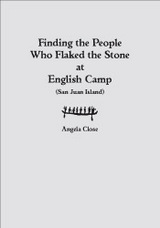 Finding the People who Flaked the Stone at English Camp
Close, Angela E
University of Utah Press, 2006 Lithic analysis in North America traditionally has focused on bifacially retouched pieces, or bifaces. Angela Close contends that such an approach has ignored cores and debitage to the detriment of analysis.
At English Camp on San Juan Island, Washington, an earlier excavation (1950) kept the bifaces and discarded everything else, unstudied. Typically, the bifaces themselves have been used as type-fossils, allowing assignment of occupation to a chronological phase but serving little other purpose. North American lithic analysis has seen a move away from this approach and toward other aspects of lithic assemblages, yet the emphasis is still on the genesis of bifaces.
In this volume, Close uses a fine-grained study to critique American approaches to lithic analysis. Her approach is based on chaîne opératoire analysis, which applied here attempts to trace the life-histories of all artifacts in an assemblage from raw material procurement to discard and entry into the archaeological record. This approach is aimed explicitly at the people behind the artifacts.
Close’s final and likely controversial analysis is that women did a great deal of the tool manufacture at this particular site.
 Finding the Public Domain: Copyright Review Management System Toolkit
Melissa Levine, Kristina Eden, Justin Bonfiglio, and Richard Adler
Michigan Publishing, 2016 Copyright is meant to do something—several things—to accomplish socially desirable ends. One of those ends is to create a space for a free exchange of ideas that allows us to build upon a universe of expression that came before.
How can I tell if something is in the public domain? This is the central question addressed daily by the Copyright Review Management System (CRMS) project. It is a special question and one essential to the social bargain that society has struck with authors and rights holders.
It is also a deceptively simple question. There should be a straightforward answer, especially for books. It should be easy to know when something is—or is not—subject to copyright. And yet, in an age of absolute fluidity of media and medium, even plain old books can be highly complex embodiments of copyright. We need to make it easier to ascertain whether a work is in the public domain. If the rights of copyright holders are to be respected and valued as part of the social bargain, the public domain as a matter of copyright law should be ascertainable and enjoyed
.
Given this complexity, consider the determination of the copyright status of a given creative work as a design problem. How do we move the copyright status of works in the collections of our libraries, museums, and archives from confusion and uncertainty to clarity and opportunity? Working over a span of nearly eight years, the University of Michigan Library received three grants from the Institute of Museum and Library Services (IMLS) to generously fund CRMS, a cooperative effort by partner research libraries to identify books in the public domain in HathiTrust. The Toolkit is a resource that aims to allow others to understand and replicate the work done by CRMS.
Finding the Right Place on the Map: Central and Eastern European Media Change in a Global Perspective
Edited by Karol Jakubowicz and Miklós Sükösd
Intellect Books, 2008 Finding the Right Place on the Map is an international comparison of the media systems and democratic performance of the media in post-communist countries. From a comparative east-west perspective, this groundbreaking volume analyzes issues of commercial media, social exclusion, and consumer capitalism. With topics ranging from the civil society approach, public service broadcasting, fandom, and the representation of poverty, each chapter considers a different aspect of the trends and problems surrounding the international media. This volume is an up-to-date overview of what media transformation has meant for post-communist countries in the past two decades.
 Finding the Right Psychiatrist: A Guide for Discerning Consumers
Robert L. Taylor, M.D.
Rutgers University Press, 2014 Choosing a psychiatrist is complicated. If a person doesn’t know what to look for and the questions to ask, finding the right psychiatrist can be daunting.The goal is to find one who, while remaining a competent physician, is as comfortable and capable working with problems of the mind as he or she is prescribing psychiatric medications. Combining over forty years of experience as a practicing psychiatrist with an insider’s perspective of current psychiatric practice, Dr. Robert Taylor provides invaluable guidance to persons considering psychiatric treatment or contemplating a change of doctor in an effort to find better treatment. Cautioning readers against settling for a psychiatrist who views psychodrugs as the treatment, Dr. Taylor provides specific suggestions for avoiding the growing number of psychiatrists who write scripts automatically. In recent decades, psychiatric care has been overly reliant on psychodrugs. Patient diagnoses are being seriously questioned. Finding the Right Psychiatrist encourages people to seek care from a complete psychiatrist—one able and willing to pursue matters of mind and brain/body, rather than settling on psychodrugs as the main treatment. Throughout the book, readers learn about the proper uses and limits of psychiatric diagnosis. Dr. Taylor carefully outlines an individualized approach to psychiatric care guided more by a patient’s particular problems and situation than by diagnoses that often mislead more than help. He provides a realistic appraisal of psychiatric medications: what they can and cannot do as well, a discussion of mind work tools, traits of effective psychiatrists, suggestions for how to deal with common insurance company obstacles, and an explanation of the confusing politics of psychiatry. An indispensable resource for anyone seeking psychiatric help or tasked with advising someone of what to look for in a doctor, Finding the Right Psychiatrist gives hope and guidance to those searching for complete and personalized care. View a three minute video of Dr. Robert L. Taylor speaking about Finding the Right Psychiatrist.
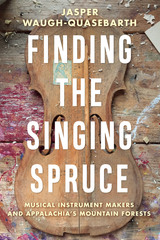 Finding the Singing Spruce: Musical Instrument Makers and Appalachia's Mountain Forests
Jasper Waugh-Quasebarth
West Virginia University Press, 2023 Environment, craft, and meaning in the work of Appalachian instrument makers.
How can the craft of musical instrument making help reconnect people to place and reenchant work in Appalachia? How does the sonic search for musical tone change relationships with trees and forests? Following three craftspeople in the mountain forests of Appalachia through their processes of making instruments, Finding the Singing Spruce considers the meanings of work, place, and creative expression in drawing music from wood. Jasper Waugh-Quasebarth explores the complexities and contradictions of instrument-making labor, which is deeply rooted in mountain forests and expressive traditions but also engaged with global processes of production and consumption. Using historical narratives and sensory ethnography, among other approaches, he finds that the craft of lutherie speaks to the past, present, and future of the region’s work and nature.
 Finding the Voice of the Church
George Dennis O'Brien
University of Notre Dame Press, 2007
O'Brien begins with the primary voice of the Church: baptism, gospel, and Eucharist. He contends that too much official teaching from the Roman magisterium to the local pulpit reverses the order of the ancient formula lex orandi, lex credendi (the law of prayer is the law of faith) and therefore misses its message. In the second part of the book, he turns to specific consideration of the papal voice as the teaching voice of the Church. O'Brien concludes with a series of practical suggestions for how the practices and institutions of the Church can again become the authentic voice of faith. This is a book all concerned Christians will want to read and discuss.
“With a grace and humor that can only be the result of hard won wisdom, O’Brien in this book illustrates the joy that rightly shapes the voice of the church. Do not be deceived by O’Brien’s modesty—this is an extremely important book about theology that only a philosopher could write. In this work O’Brien helps Christians find confident speech by helping us find our part in God’s drama of redemption.” —Stanley Hauerwas, Gilbert T. Rowe Professor of Theological Ethics, Duke Divinity School
“George Dennis O'Brien is one of the Wise Men of contemporary Catholicism, a trained philosopher, and an experienced and savvy University President. In this dazzling book he develops a unique theory of Christology of God as the author of the “World Play” who intervenes in history to confirm his story and then lays out a theory of infallibility which seems eminently sensible, an infallibility with a properly fatherly (or motherly) voice. Some conservatives won't like it, but as a layman and retired university president, they can't do anything about it! As long as there are men like O'Brien writing, the Church hasn't yet lost its voice.” —Andrew Greeley, author of The Catholic Revolution
“This important book shows us anew how to think about church directly, analytically, and even poetically. A major event.” —David Tracy, emeritus, The University of Chicago Divinity School
“What makes this book a must is that it is not only creative, it is also a new kind of theological voice in the American Catholic church. O’Brien is neither a cleric nor an academic theologian. But he is a wise and discerning Catholic layman who has much to teach both the clerics and the theologians. There is absolutely nothing else out there that is like it.” —Paul Lakeland, Aloysius P. Kelley, S.J., Professor of Catholic Studies, Fairfield University
Finding the Voice of the Church is written for a broad audience interested in the challenges facing the contemporary Catholic Church. These challenges are ones that should concern all Christians, not only Catholics. Noted scholar and commentator George Dennis O'Brien poses (and answers) three provocative questions: What is the proper voice of the church? Is there a voice of Christian faith? Can what is said about Christianity be fundamentally distorted by how it is said? Through his clear and relevant discussion of the basic content of Christianity, O'Brien concludes that the primary voice of Catholic Christianity, the papal teaching voice, must be radically "re-understood" if the Church is to be the proper medium and voice of the gospel message.
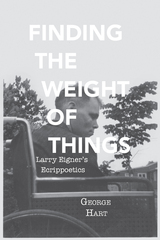 Finding the Weight of Things: Larry Eigner's Ecrippoetics
George Hart
University of Alabama Press, 2022 An innovative study of how a prescient poet imagined ecology and embodiment
Larry Eigner (1927–1996) wrote thousands of poems in his lifetime, despite profound physical limitations caused by cerebral palsy. Using only the thumb and index finger of his right hand, Eigner generated a torrent of urgent and rich language, participating in vital correspondences as well as publishing widely in literary magazines and poetry journals.
While Eigner wrote before the emergence of ecopoetics, his poetry reflected a serious engagement with scientific writing and media, including Rachel Carson’s seminal Silent Spring. Eigner was writing about environmental disasters and climate change long before such concerns took on a moral incumbency. Similarly, Eigner was ahead of his time in his exploration of disability. The field of disability studies has expanded rapidly in the new millennium. Eigner was not an overtly biographical poet, at least as far as his physical limitations were concerned, but his poetry spoke volumes on the idea of embodiment in all its forms.
Finding the Weight of Things: Larry Eigner’s Ecrippoetics is the first full-length study of Eigner’s poetry, covering his entire career from the beginning of his mature work in the 1950s to his last poems of the 1990s. George Hart charts where Eigner’s two central interests intersect, and how their interaction fueled his work as a poet-critic—one whose work has much to tell us about the ecology and embodiment of our futures. Hart sees Eigner’s overlapping concerns for disability, ecology, and poetic form as inextricable, and coins the phrase ecrippoetics here to describe Eigner’s prescient vision.
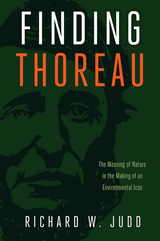 Finding Thoreau: The Meaning of Nature in the Making of an Environmental Icon
Richard W. Judd
University of Massachusetts Press, 2018 In his 1862 eulogy for Henry David Thoreau, Ralph Waldo Emerson reflected that his friend “dedicated his genius with such entire love to the fields, hills, and waters of his native town, that he made them known and interesting to all reading Americans, and to people over the sea.” Finding Thoreau traces the reception of Thoreau's work from the time of his death to his ascendancy as an environmental icon in the 1970s, revealing insights into American culture's conception of the environment.
Moving decade by decade through this period, Richard W. Judd unveils a cache of commentary from intellectuals, critics, and journalists to demonstrate the dynamism in the idea of nature, as Americans defined and redefined the organic world around them amidst shifting intellectual, creative, and political forces. This book tells the captivating story of one writer's rise from obscurity to fame through a cultural reappraisal of the work he left behind.
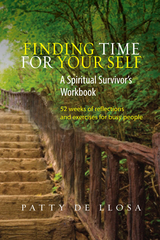 Finding Time for Your Self: A Spiritual Survivor's Workbook - 52 Weeks of Reflections & Exercises for Busy People
Patty De Llosa
Sussex Academic Press, 2022 Finding Time for Your Self invites busy women and men to connect with deeper longings for self-fulfillment as they navigate the stressful demands of daily life. Thought-provoking reflections by the author are followed by practical exercises for a weekly study over a year of many aspects of life experience. Most of us feel scattered a lot of the time. Like the dismembered Egyptian god Osiris, we are spread out all over our personal world. Finding Time for Your Self offers help to bring ourselves back together again and learn how to re-member ourselves, not by withdrawing from the world but by being engaged right in the middle of our daily life. Fifty-two reflections on familiar life situations help the reader stay inwardly alive and present to meet life's many challenges - to pause and reflect at any moment of the day. They are followed by practical exercises that offer day-by-day experiments to assist in finding a more balanced sense of ourselves in the midst of outer activity. The old Shaker song "It's a gift to be simple" tells us that the solution is in the turning, until "by turning, turning, turning we come 'round right." When we turn away for a short time from activities, goals and commitments - and toward the inner self - we discover a world that's just as active and full of surprises as the outer one. Turning our attention to the world within allows us to reconnect with that person who we essentially are, in the depths of our being.
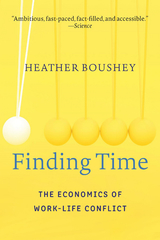 Finding Time: The Economics of Work-Life Conflict
Heather Boushey
Harvard University Press, 2016 “Ambitious, fast-paced, fact-filled, and accessible.”
—Science
“A compelling case for why achieving the right balance of time with our families…is vital to the economic success and prosperity of our nation… A must read.”
—Maria Shriver
From backyard barbecues to the blogosphere, working men and women across the country are raising the same worried question: How can I get ahead at my job while making sure my family doesn’t suffer? A visionary economist who has looked at the numbers behind the personal stories, Heather Boushey argues that resolving the work–life conflict is as vital for us personally as it is essential economically. Finding Time offers ingenious ways to help us carve out the time we need, while showing businesses that more flexible policies can actually make them more productive.
“Supply and demand curves are suddenly ‘sexy’ when Boushey uses them to prove that paid sick days, paid family leave, flexible work schedules, and affordable child care aren’t just cutesy women’s issues for families to figure out ‘on their own time and dime,’ but economic issues affecting the country at large.”
—Vogue
“Boushey argues that better family-leave policies should not only improve the lives of struggling families but also boost workers’ productivity and reduce firms’ costs.”
—The Economist
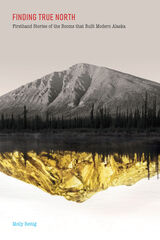 Finding True North: First-Hand Stories of the Booms that Built Modern Alaska
Molly Rettig
University of Alaska Press, 2021 Melting sea ice and rumbling volcanoes. Sled dogs racing through unnamed valleys. These were the images that came to mind when Molly Rettig moved to Fairbanks, Alaska to work as a reporter at the local newspaper. An avid environmentalist, she couldn’t wait to explore the vast, untamed spaces that had largely been paved over on the east coast. But when her 72-year-old neighbor, Clutch, invites her on a tour of his gold mine—an 800-foot tunnel blasted into the side of his house–she begins to question many of her ideas about Alaska, and about herself. In Finding True North, Rettig takes us on a gripping journey through Alaska's past that brings alive the state's magnificent country and its quirky, larger-than-life characters. She meets a trapper who harvests all she needs from the land, a bush pilot who taught himself how to fly, and an archaeologist who helped build an oil pipeline through pristine wilderness. While she learns how airplanes, mines, and oil fields have paved the way for newcomers like herself, she also stumbles upon a bigger question: what has this quest for Alaska’s natural resources actually cost, and how much more is at stake? This is a book about all the ways wild places teach us about ourselves. Rettig writes both playfully and honestly about how one place can be many things to many people—and how all of it can be true.
Finding Voice: A Visual Arts Approach to Engaging Social Change
Kim S. Berman
University of Michigan Press, 2017 In Finding Voice, Kim Berman demonstrates how she was able to use visual arts training in disenfranchised communities as a tool for political and social transformation in South Africa. Using her own fieldwork as a case study, Berman shows how hands-on work in the arts with learners of all ages and backgrounds can contribute to economic stability by developing new skills, as well as enhancing public health and gender justice within communities. Berman’s work, and the community artwork her book documents, present the visual arts as a crucial channel for citizens to find their individual voices and to become agents for change in the arenas of human rights and democracy.
 The Fine Art of Persuasion: Corporate Advertising Design, Nation, and Empire in Modern Japan
Gennifer Weisenfeld
Duke University Press, 2025 Commercial art is more than just mass-produced publicity; it constructs social and political ideologies that impact the public’s everyday life. In The Fine Art of Persuasion, Gennifer Weisenfeld examines the evolution of Japanese advertising graphic design from the early 1900s through the 1964 Tokyo Olympics, a pivotal design event that rebranded Japan on the world stage. Through richly illustrated case studies, Weisenfeld tells the story of how modern corporations and consumer capitalism transformed Japan’s visual culture and artistic production across the pre- and postwar periods, revealing how commercial art helped constitute the ideological formations of nation- and empire-building. Weisenfeld also demonstrates, how under the militarist regime of imperial Japan, national politics were effectively commodified and marketed through the same mechanisms of mass culture that were used to promote consumer goods. Using a multilayered analysis of the rhetorical intentions of design projects and the context of their production, implementation, and consumption, Weisenfeld offers an interdisciplinary framework that illuminates the importance of Japanese advertising design within twentieth-century global visual culture.
 The Fine Arts in America
Joshua C. Taylor
University of Chicago Press, 1979 "Though comparatively short, it is no once-over-lightly chronicle full of insignificant names and dates. It brilliantly achieves its principal aim: to provide readers with a compact but broad and well rounded conception of the progress of the fine arts in America from ca. 1670 to the present day. . . . It is a fascinating book, full of new vistas; it has all the earmarks of an instant classic."—American Artist
"[Taylor] describes changing definitions of art as much as he describes art itself, and he shows how the shifting forms of patronage affected the forms of art. He analyzes artists' associations . . . and he shows how museums and schools have expanded the audience for art. In short, he places artists and their work in cultural context. This treatment of the social history of art is the most original and intriguing aspect of Taylor's sketch."—Journal of American History
"This is a brilliantly subtle book. It builds with one insight after another, and suddenly the reader finds that a whole new way of looking at American art is being proposed. . . . After decades of thinking and looking and teaching, Dr. Taylor has written it all down. This work will become a classic interpretation almost overnight."—Peter Marzio, director, Corcoran Gallery of Art
"Interest in American art is unlikely to abate. . . . Mr. Taylor's short book is an invaluable guide through this activity and to its traditions."—Neil Harris, Wall Street Journal
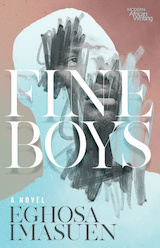 Fine Boys: A Novel
Eghosa Imasuen
Ohio University Press, 2021 A coming-of-age tale told from the perspective of Nigeria’s Generation X, caught amid the throes of a nascent pro-democracy movement, demoralizing corruption, and campus violence. Ewaen is a Nigerian teenager, bored at home in Warri and eager to flee from his parents’ unhappy marriage and incessant quarreling. When Ewaen is admitted to the University of Benin, he makes new friends who, like him, are excited about their newfound independence. They hang out in parking lots, trading gibes in pidgin and English and discovering the pleasures that freedom affords them. But when university strikes begin and ruthlessly violent confraternities unleash mayhem on their campus, Ewaen and his new friends must learn to adapt—or risk becoming the confras' next unwilling recruits. In his trademark witty, colloquial style, critically acclaimed author Eghosa Imasuen presents everyday Nigerian life against the backdrop of the pro-democracy riots of the 1980s and 1990s, the lost hopes of June 12 (Nigeria’s Democracy Day), and the terror of the Abacha years. Fine Boys is a chronicle of time, not just in Nigeria, but also for its budding post-Biafran generation.
A Fine Couple
Gert Loschütz
Seagull Books, 2023 The story of the paradoxical relationship of two parents.
As he clears out his parents’ house, Philipp, a photographer, comes across an object that has played a major role in his parents’ lives. Herta and Georg made a fine couple when they first met. Their son imagines the early days of their relationship and remembers how his father was forced to flee across the inner-German border to the West. When Herta and Philipp joined him a few days later, this could have signaled the start of a new era of happiness, but the seeds of their separation had already been sown. In gentle, probing prose, Gert Loschütz describes how Philipp gradually unravels the paradoxical nature of his parents’ relationship: it was love that destroyed their love. To his astonishment, Philipp discovers that Herta and Georg had been in contact all those years in a way they kept secret even from one another.
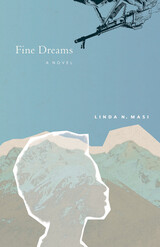 Fine Dreams
Linda N. Masi
University of Massachusetts Press, 2024 Longlisted for the 2025 Nigeria Prize for Literature A 2024 Foreword INDIES Finalist
Set in a fictional town, at a fictional school, Linda N. Masi’s debut novel, Fine Dreams, rewrites myth and history. Framed by a ghost’s first-person narrative, the book centers on four young friends, the stars of their school’s track team. While studying for exams, they are kidnapped and taken to a terrorist encampment. Two are claimed as “wives” by their captors, one is forced to wear a suicide vest, and each is subjected to appalling violence and terror. While their stories resonate with a widely publicized 2014 abduction, these four young women could have been taken in any of the many incidents that have plagued the Nigerian people for years.
Even though they are abducted and abused by men in power and forced to survive in a dark place like Persephone, Masi’s protagonists offer new endings for Persephone’s story. In Masi’s telling, these resilient young women recover their dreams and hopes to live in daylight once again. No matter where they travel or where they stay, they gain self-determination and reclaim their dreams.
The Fine Line
Eviatar Zerubavel
University of Chicago Press, 1993 Eviatar Zerubavel argues that most of the distinctions we make in our daily lives and in our culture are social constructs. He questions the notion that a clear line can be drawn to separate one time or object or concept from another, and presents witty and provocative counterexamples in defense of ambiguity and anomaly.
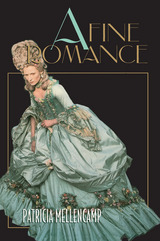 A Fine Romance: Five Ages of Film Feminism
Patricia Mellencamp
Temple University Press, 1996 "...Mellencamp...has undertaken to address the issues, and that she has done so with great thoroughness, soul searching, wit, and intelligence, will surely position this book as a must-read for film theorists and many other feminists and feminist-influenced scholars and critics."
--Elayne Rapping
"Feminist film theory will soon be a quarter of a century old. It has known the euphoria of the 1970s, experienced the contradictions of the 1980s, and glimpsed the reversals and political gains, which include women of color, of the 1990s." But, Patricia Mellencamp asks, what is the next move?
In this challenging look at twenty years of feminist film theory, Mellencamp elaborates on its rich history, drawing on her personal academic life, and offering inventive readings of a remarkable variety of films: recent Hollywood releases like Forest Gump, Pulp Fiction, Thelma and Louise, Basic Instinct, and Silence of the Lambs, and features and independent films made by women, such as The Piano, Angie, Orlando, Bedevil, Daughters of the Dust, Privilege, and Forbidden Love.
With a clever sense of irony and wit, Mellencamp poses a question from which her analysis takes off: What did Rapunzel, Cinderella and Snow White forget to tell Thelma and Louise? According to Mellencamp, they forgot what comes after "the end," after the wedding to the prince. So many women's stories, often by choice, stop after the prince whisks the princess away to live happily ever after. This book asks, what does "happily" mean for women? And what does "ever after" cost women?
This creative call to shift film feminism's infamous "gaze" from sex and bodies to money and work ascertains where film feminism has been and what it needs to progress. Rather than recycling and regaining the same ground, Mellencamp urges film feminism to explore and claim new territory.
Reviews
"Bold, brilliant, radiantly funny and just sizzling with intelligence, A Fine Romance rewrites film history as an action adventure for women. Patricia Mellencamp is one of feminism's most audaciously creative thinkers."
--Meaghan Morris, author of The Pirate's Fiancée: Feminism, Reading, Postmodernism
"This is a book of mega-energetic proportions by a brilliant cultural critic who engages the disabling fiction of romance through a double reading--of films by women from all over the globe and of feminist film theory over the past two decades. A fine romance glitters with Mellencamp's legendary wit. It is also deeply serious and wide-ranging, addressing questions of work and money, age and friendship, obsession and addiction, history and the emotions."
--Kathleen Woodward, Director, Center for Twentieth Century Studies, University of Wisconsin
Contents
Acknowledgments
To Begin with...
1. What Cinderella and Snow White Forgot to Tell Thelma and Louise
Age One: Intellectual Feminism
2. "A Fine Romance, with No Kisses": Discourse, Not Intercourse
3. "Sexual Economics": Gold Diggers of 1933
4. Romantic Delusions
5. Fatal Attractions and Obsessions
Age Two: Irascible Feminism
6. Protofeminists
7. Cryptofeminists
Age Three: Experimental Feminism
8. What I Really Want to Do Is Direct
Age Four: Empirical Feminism
9. Archival and Avant-Garde
10. Haunted History
Age Five: Economical Feminism
11. What Virginia Wolf Did Tell Sally Potter
Notes
Index
About the Author(s):
Patricia Mellencamp is Professor of Film and Cultural Theory, Department of Art History, the University of Wisconsin at Milwaukee. She has published several books, including High Anxiety: Catastrophe, Scandal, Age and Indiscretions: Avant-garde Film, Video, and Feminism.
A Fine Yellow Dust
Laura Apol
Michigan State University Press, 2021 In late April 2017, Laura Apol’s twenty-six-year-old daughter, Hanna, took her own life. Apol had long believed in the therapeutic possibilities of writing, having conducted workshops on writing-for-healing for more than a decade. Yet after Hanna’s death, she had her own therapeutic writing to do, turning her anguish, disbelief, and love into poems that map the first year of loss. This collection is the result of that writing, giving voice to grief as it is lived, moment by moment, memory by memory, event by event. While most writing about loss does so from a distance, Apol chooses instead to write from inside those days and months and seasons, allowing readers to experience alongside the poet the moments, the questions, and the deep longings that shape the first grief-year.
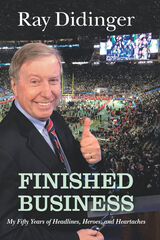 Finished Business: My Fifty Years of Headlines, Heroes, and Heartaches
Ray Didinger
Temple University Press, 2021 Ray Didinger opens his lively memoir Finished Business with the Philadelphia Eagles’ upset win in Super Bowl LII. When the Eagles finally hoist the Lombardi Trophy, Didinger does his best to straddle the emotions of a working reporter and a long-suffering Philly fan. His ability to do that is why he has built up such a loyal following. Didinger began following the Eagles as a kid, hanging out in his grandfather’s bar in Southwest Philadelphia. He spent his summers at the team's training camp in Hershey. It was there he met his idol, flanker Tommy McDonald. He would later write a play, Tommy and Me, about their friendship and his efforts to see McDonald enshrined in the Pro Football Hall of Fame. Didinger has been covering the Eagles as a newspaper columnist or TV analyst since 1970. Over the years, he wrote sports for the Philadelphia Bulletin and the Philadelphia Daily News. He later produced Emmy Award–winning documentaries for NFL Films before transitioning to sports talk radio and TV analysis. In five decades, across multiple media platforms, he has interviewed everyone from Hank Aaron, Wayne Gretzky, Muhammad Ali, Julius Erving, Jack Nicklaus, to Mike Schmidt, as well as writing film scripts for Hollywood stars such as Bruce Willis and Alec Baldwin. He went to the White House with the U.S. Olympic team and even explored the bizarre world of professional wrestling. His stories, told in his familiar, breezy style, capture his enthusiasm for sports and his affection for the fans who still mourn the pennant that eluded the Phillies in 1964. Didinger has become synonymous with Philadelphia sports, and his memoir is as passionate as an autumn Sunday at Lincoln Financial Field.
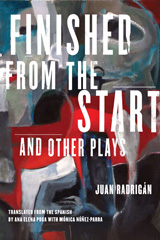 Finished from the Start and Other Plays
Juan Radrigan
Northwestern University Press, 2007 This collection of plays comes from one of Chile’s finest voices of the voiceless: Juan Radrigán. A history marked by personal and political hardship has equipped Radrigán to tell the stories of those his nation left behind. Seven years old when his father abandoned his family, he was forced to work from an early age. As an adult, he worked as a manual laborer during a very dark time for Chile: the demise of Salvador Allende and the rise of General Augusto Pinochet. In a time of torture, exile, and political “disappearances,” his plays stood as quietly powerful anti-regime statements that mourned the country’s loss. Translator Ana Elena Puga’s introduction places Radrigán’s work in its historical and cultural context and provides ample background for the six pieces. The first work, Testimonies to the Deaths of Sabina, features a fruit seller who may lose her livelihood after she is accused of some mysterious infraction; but she doesn’t know what she has done—if she has truly done anything. The Beasts tells the story of three sisters living in the wilderness who, fearing they have been completely abandoned, devise a means of ultimate escape. Funeral Drums for Lambs and Wolves comes in three parts: Isabel Banished in Isabel, a monologue of a woman left to go mad alone; Without Apparent Motive, a monologue by a murderer who laments the spread of violence; and the dialogue The Guest, a confrontational piece that speaks directly to the spectators, implicating them in their silent, passive tolerance of Pinochet. The title play, Radrigán’s 1981 masterpiece, speaks directly to the specter of the many “disappeared” victims of the military regime.
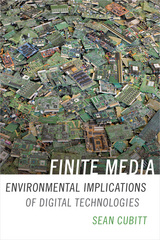 Finite Media: Environmental Implications of Digital Technologies
Sean Cubitt
Duke University Press, 2017 While digital media give us the ability to communicate with and know the world, their use comes at the expense of an immense ecological footprint and environmental degradation. In Finite Media Sean Cubitt offers a large-scale rethinking of theories of mediation by examining the environmental and human toll exacted by mining and the manufacture, use, and disposal of millions of phones, computers, and other devices. The way out is through an eco-political media aesthetics, in which people use media to shift their relationship to the environment and where public goods and spaces are available to all. Cubitt demonstrates this through case studies ranging from the 1906 film The Story of the Kelly Gang to an image of Saturn taken during NASA's Cassini-Huygens mission, suggesting that affective responses to images may generate a populist environmental politics that demands better ways of living and being. Only by reorienting our use of media, Cubitt contends, can we overcome the failures of political elites and the ravages of capital.
Finite Perfection: Reflections on Virture
Michael A. Weinstein
University of Massachusetts Press, 1985 A philosophical essay on personal virtue of self-control, artistry, and love. A contemporary account of how virtue can have significance in a world that has lost the certainty of common and collective meanings.
The Finite-Difference Time-Domain Method for Electromagnetics with MATLAB® Simulations
Atef Z. Elsherbeni
The Institution of Engineering and Technology, 2016 This book introduces the powerful Finite-Difference Time-Domain method to students and interested researchers and readers. An effective introduction is accomplished using a step-by-step process that builds competence and confidence in developing complete working codes for the design and analysis of various antennas and microwave devices. This book will serve graduate students, researchers, and those in industry and government who are using other electromagnetics tools and methods for the sake of performing independent numerical confirmation. No previous experience with finite-difference methods is assumed of readers.
Finite-State Morphology
Kenneth R. Beesley and Lauri Karttunen
CSLI, 2003 The finite-state paradigm of computer science has provided a basis for natural-language applications that are efficient, elegant, and robust. This volume is a practical guide to finite-state theory and the affiliated programming languages lexc and xfst. Readers will learn how to write tokenizers, spelling checkers, and especially morphological analyzer/generators for words in English, French, Finnish, Hungarian, and other languages.
Included are graded introductions, examples, and exercises suitable for individual study as well as formal courses. These take advantage of widely-tested lexc and xfst applications that are just becoming available for noncommercial use via the Internet.
 Finland and Europe: The Period of Autonomy and the International Crises, 1808-1914
Juhani PaasivirtaD.G. Kirby, EditorTranslated by Anthony F. Upton and Sirkka R. Upton
University of Minnesota Press, 1982 Finland and Europe was first published in 1982. Minnesota Archive Editions uses digital technology to make long-unavailable books once again accessible, and are published unaltered from the original University of Minnesota Press editions. In 1808 the Grand Duchy of Finland, part of the Swedish kingdom since the thirteenth century, was invaded and in 1809 annexed by Russia -- events which took place within the context of the Napoleonic wars but whose significance was obscure to most Finns and to the outside world as well. During the nineteenth century Finnish national identity grew and Finland began to play a role in European politics. This book traces the course of Finnish involvement in European affairs from the time when it became an autonomous Grand Duchy within the Russian Empire down to the First World War. Juhani Paasivirta's analysis is centered upon eleven international crises, including the Russian annexation of Finland, the fall of Napoleon, two revolutions in Poland, the revolutions of 1848, the Franco-Prussian War and the Paris Commune, the Russo-Turkish and Russo-Japanese wars, and the outbreak of the First World War. Paasivirta writes from two vantage points: he records the reactions to these events in Finland, across a broad social and economic spectrum, and the attitudes towards the 'Finnish situation' in Sweden, England, France, and Germany. Finland's relationship with Russia, and her necessarily realistic regard for the security of the Russian Empire were important matters faced by Finnish leaders; Paasivirta shows how this delicate relation collapsed, making way for a course that led to Finnish independence in 1917.
 Finland in the Twentieth Century: A History and an Interpretation
D.G. Kirby
University of Minnesota Press, 1980 Finland in the Twentieth Century was first published in 1980. Minnesota Archive Editions uses digital technology to make long-unavailable books once again accessible, and are published unaltered from the original University of Minnesota Press editions. Finland's search for a national identity is the underlying theme of this book. A small nation, geographically isolated and linguistically distinct from its neighbors, Finland has long maintained close ties with Sweden and also has had to come to terms with a powerful eastern neighbor, the Soviet Union. D.G. Kirby opens his history with a description of Finland at the turn of the century, when it was a Grand Duchy in the Russian Empire, and traces its emergence as an independent state with the collapse of the Empire in 1917. He examines the new republic's struggle for survival—and identity—after the civil war of 1918, which left a legacy of political instability through the interwar years. Finland's complex political history is closely tied to its external relations. Kirby describes the evolution of Finnish foreign policy from the period when Finland and the Soviet Union were distrustful and then warring neighbors down to the present policy of friendship and cooperation which grew out of the treaty of 1948. The book closes with an account of Finland's international and domestic status in the Kekkonen era. Throughout, Kirby provides a substantial socio-economic background to round out his political and diplomatic themes. He also brings to the English-language readers the results of modern Finish historical research. Since historians have played a key role in Finland as interpreters of the nation's recent past, his analysis of their debates helps clarify the ways in which Finland has developed as an independent state in the twentieth century.
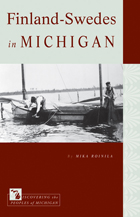 Finland-Swedes in Michigan
Mika Roinila
Michigan State University Press, 2012 Who are the Finland-Swedes? Defined as citizens of Finland with a Swedish mother tongue, many know these people as “Swede- Finns” or simply “Swedes.” This book, the first ever to focus on this ethnolinguistic minority living in Michigan, examines the origins of the Finland-Swedes and traces their immigration patterns, beginning with the arrival of hundreds in the United States in the 1860s. A growing population until the 1920s, when immigration restrictions were put in place, the Finland-Swedes brought with them unique economic, social, cultural, religious, and political institutions, explored here in groundbreaking detail. Drawing on archival, church, and congregational records, interviews, and correspondence, this book paints a vivid portrait of Finland-Swedish life in photographs and text, and also includes detailed maps that show the movement of this group over time. The latest title in the Discovering the Peoples of Michigan series even includes a sampling of traditional Finland-Swedish recipes.
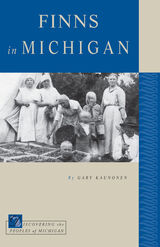 Finns in Michigan
Gary Kaunonen
Michigan State University Press, 2009 In Finns in Michigan Gary Kaunonen probes the intricacies of immigration, labor, and ideology among the members of this intriguing and historically important ethnic group. He skillfully traces the evolution of a vibrant, diverse, dramatic, and at times deeply quarrelsome people who left an indelible mark on the state's history.
Kaunonen examines the many schisms and splits that define the course of Finnish social life in Michigan. Michigan's Finns flocked to diverse cultural organizations that span a broad ideological spectrum. This book examines an extraordinarily wide range of organizations, including religious institutions, temperance societies, working-class political and labor groups, the cooperative movement, and a nationalist association of Finns.
Finns in Michigan is a study of the contributions of Michigan's Finns in the workplace, in society, and in cultural life. Unlike previous, sometimes mythologized, histories of the Finns in Michigan, Kaunonen's rendition strives to be a more accurate representation of "the good, the bad, and the other" activities of a group he calls "possibly America's most diverse family."
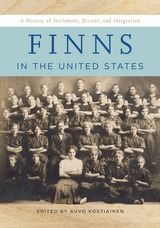 Finns in the United States: A History of Settlement, Dissent, and Integration
Auvo Kostiainen
Michigan State University Press, 2014 Late-arriving immigrants during the Great Migration, Finns were, comparatively speaking, a relatively small immigrant group, with about 350,000 immigrants arriving prior to World War II. Nevertheless, because of their geographic concentration in the Upper Midwest in particular, their impact was pronounced. They differed from many other new immigrant groups in a number of ways, including the fact that theirs is not an Indo-European language, and many old-country cultural and social features reflect their geographic location in Europe, at the juncture of East and West. A fresh and up-to-date analysis of Finnish Americans, this insightful volume lays the groundwork for exploring this unique culture through a historical context, followed by an overview of the overall composition and settlement patterns of these newcomers. The authors investigate the vivid ethnic organizations Finns created, as well as the cultural life they sought to preserve and enhance while fitting into their new homeland. Also explored are the complex dimensions of Finnish-American political and religious life, as well as the exodus of many radical leftists to Soviet Karelia in the 1930s. Through the lens of multiculturalism, transnationalism, and whiteness studies, the authors of this volume present a rich portrait of this distinctive group.
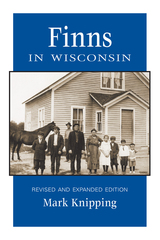 Finns in Wisconsin
Mark Knipping
Wisconsin Historical Society Press, 2008 From mining to logging to farming, Finns played an important role in the early development of Wisconsin. Although their immigration to the state came later than that of most other groups, their contributions proved just as significant. Finns pride themselves for their sisu, a Finnish term which, roughly translated, means fortitude or perseverance, especially in the face of adversity. They needed their strength of character to help them face the difficult task of building a new life in a new land. Many Finns arriving in Wisconsin, unable to own land at home, hoped to establish themselves as small independent farmers in the new land. They settled mainly in northern Wisconsin, due to jobs and land available there. This book traces the history of Finnish settlement in Wisconsin, from the large concentrations of Finns in the northern region, to the smaller "Little Finlands" created in other areas of the state. Revised and expanded, this new edition contains the richly detailed story of one Finnish woman, told in her own words, of her hardships and experiences in traveling to a new country and her resourcefulness and strength in adapting to a new culture and building a new life.
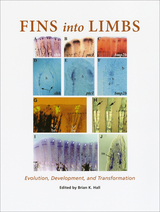 Fins into Limbs: Evolution, Development, and Transformation
Edited by Brian K. Hall
University of Chicago Press, 2006 Long ago, fish fins evolved into the limbs of land vertebrates and tetrapods. During this transition, some elements of the fin were carried over while new features developed. Lizard limbs, bird wings, and human arms and legs are therefore all evolutionary modifications of the original tetrapod limb.
A comprehensive look at the current state of research on fin and limb evolution and development, this volume addresses a wide range of subjects—including growth, structure, maintenance, function, and regeneration. Divided into sections on evolution, development, and transformations, the book begins with a historical introduction to the study of fins and limbs and goes on to consider the evolution of limbs into wings as well as adaptations associated with specialized modes of life, such as digging and burrowing. Fins into Limbs also discusses occasions when evolution appears to have been reversed—in whales, for example, whose front limbs became flippers when they reverted to the water—as well as situations in which limbs are lost, such as in snakes.
With contributions from world-renowned researchers, Fins into Limbs will be a font for further investigations in the changing field of evolutionary developmental biology.
 The Fiore and the Detto d’Amore: A Late-Thirteenth-Century Italian Translation of the Roman de la Rose Attributable to Dante Alighieri
Translated, with introduction and notes, by Santa Casciani and Christopher Kleinhenz
University of Notre Dame Press, 2000 This is the first English translation of Il Fiore, the late-thirteenth-century narrative poem in 232 sonnets based on the Old French Roman de la Rose, and the Detto d’Amore, a free-wheeling version of many Ovidian precepts of love in 240 rhymed couplets. The elaborate allegory of the Fiore presents the complex workings of love, understood primarily as carnal passion, in the human psyche through the use of personifications of a wide array of characters who engage in various social (and bellic) interactions. There are personifications of social stereotypes and attitudes, mythological figures, abstract qualities, psychological and physical states, and personality traits.
The Detto d’Amore includes features of the perennial controversy between proponents of the pleasures of erotic passion and those who counsel pursuit of the sublime joys found solely in the exercise of reason. The incomplete poem also contains a conventionalized—and idealized—description of the physical traits of the lady, as well as a portrait of the perfect courtly lover.
The importance of these two works lies in part in their possible attribution to the great Florentine poet Dante Alighieri. But even if Dante is not the author, the Fiore is a valuable witness to the literary taste and cultural concerns of medieval Italy and to matters of poetic influence and reception among different literary traditions.
 The Fiore In Context: Dante, France, Tuscany
Zygmunt G. Baranski and Patrick Boyde
University of Notre Dame Press, 1996 The second volume in the original William and Katherine Devers Series in Dante Studies, The Fiore in Context: Dante, France, Tuscany is the record of a milestone in the study of the Fiore, and perhaps in Dante studies: the international conference on the Fiore held at St. John’s College, Cambridge, in September 1994. The conference, attended by most of the world’s leading experts on the Fiore, examined many aspects of the poem, including textual questions, its cultural context, and its relations with the Roman de la Rose and the Comedy. Above all it constituted, in the judgment of the participants themselves, the most important discussion of the poem’s attribution to Dante since Contini’s pronouncement of the question in 1965. The published proceedings reproduce both the questionnaire that framed the conference, in which each participant weighs all the principal arguments for and against attributing the Fiore to Dante, as well as the lively discussion that followed each paper.
The Fire Above, the Mountain Below
Reinhard Jirgl
Seagull Books, 2020 Reinhard Jirgl’s strikingly individual novel The Fire Above, the Mountain Below demonstrates that he is not only unorthodox in his approach to language, but also difficult to pin down in terms of any genre. Weaving together elements of crime story, Cold War espionage, family tragedy, and a dystopian future, he creates a tapestry of fragile humanity and menacing inhumanity. The investigation of a series of gruesome killings takes a detective inspector into explorations of a secret intelligence programme in former East Germany and the role of a family with a tragic history. The more is uncovered, the more disorienting it becomes, and the reader is drawn into a complex web of discovery and suppression.
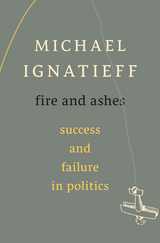 Fire and Ashes: Success and Failure in Politics
Michael Ignatieff
Harvard University Press, 2013 In 2005 Michael Ignatieff left his life as a writer and professor at Harvard University to enter the combative world of politics back home in Canada. By 2008, he was leader of the country’s Liberal Party and poised—should the governing Conservatives falter—to become Canada’s next Prime Minister. It never happened. Today, after a bruising electoral defeat, Ignatieff is back where he started, writing and teaching what he learned.
What did he take away from this crash course in political success and failure? Did a life of thinking about politics prepare him for the real thing? How did he handle it when his own history as a longtime expatriate became a major political issue? Are cynics right to despair about democratic politics? Are idealists right to hope? Ignatieff blends reflection and analysis to portray today’s democratic politics as ruthless, unpredictable, unforgiving, and hyper-adversarial.
Rough as it is, Ignatieff argues, democratic politics is a crucible for compromise, and many of the apparent vices of political life, from inconsistency to the fake smile, follow from the necessity of bridging differences in a pluralist society. A compelling account of modern politics as it really is, the book is also a celebration of the political life in all its wild, exuberant variety.
 Fire and Clay: How Bricks Reveal the Hidden History of Chicago
Will Quam
University of Chicago Press A remarkable exploration of Chicago’s architectural history through the humble brick.
By the late 1920s, at its peak of brick making and consumption, Chicago was making over a billion bricks a year for its buildings and importing almost another billion nicer face bricks for their front facades. Throughout this city’s history, brick dramatically transformed from a simple fireproof building material into an integral piece of architectural design. And no one knows the hidden details and stories of this fascinating history like Chicago’s foremost brick aficionado, Will Quam.
In Fire and Clay, Quam takes us on journeys to experience the beauty and mystery of Chicago’s buildings through his eyes. He also explores how developers, architects, and masons followed changing fashions as they designed and built the city, creating connections across disparate neighborhoods. The red bricks that make up Lincoln Park mansions, for example, are the same as those found on Pullman rowhomes and Pilsen workers’ cottages, just as Rogers Park’s colorful bricks can also be found far across the city in South Shore. Known for his popular walking tours and @brickofchicago Instagram account, Quam has built his life around the appreciation, study, and evangelizing of this most humble building block’s many wonders. Here, he pours all his knowledge into the first book of its kind, beautifully illustrated with more than one hundred of his own full-color photographs.
More than just an investigation into brick, Fire and Clay gives readers a fresh lens through which to explore the city anew and find clear connections across its different neighborhoods. By the end of this lively tour through Chicago’s history, readers will never look at a brick building the same way again.
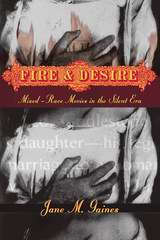 Fire and Desire: Mixed-Race Movies in the Silent Era
Jane M. Gaines
University of Chicago Press, 2001 In the silent era, American cinema was defined by two separate and parallel industries, with white and black companies producing films for their respective, segregated audiences. Jane Gaines's highly anticipated new book reconsiders the race films of this era with an ambitious historical and theoretical agenda.
Fire and Desire offers a penetrating look at the black independent film movement during the silent period. Gaines traces the profound influence that D. W. Griffith's racist epic The Birth of a Nation exerted on black filmmakers such as Oscar Micheaux, the director of the newly recovered Within Our Gates. Beginning with What Happened in the Tunnel, a movie that played with race and sex taboos by featuring the first interracial kiss in film, Gaines also explores the cinematic constitution of self and other through surprise encounters: James Baldwin sees himself in the face of Bette Davis, family resemblance is read in Richard S. Robert's portrait of an interracial family, and black film pioneer George P. Johnson looks back on Micheaux.
Given the impossibility of purity and the co-implication of white and black, Fire and Desire ultimately questions the category of "race movies" itself.
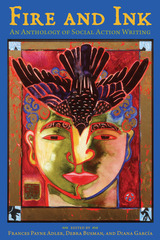 Fire and Ink: An Anthology of Social Action Writing
Edited by Frances Payne Adler, Debra Busman, and Diana García
University of Arizona Press, 2009 Fire and Ink is a powerful and impassioned anthology of stories, poems, interviews, and essays that confront some of the most pressing social issues of our day. Designed to inspire and inform, this collection embodies the concepts of “breaking silence,” “bearing witness,” resistance, and resilience. Beyond students and teachers, the book will appeal to all readers with a commitment to social justice.
Fire and Ink brings together, for the first time in one volume, politically engaged writing by poets, fiction writers, and essayists. Including many of our finest writers—Martín Espada, Adrienne Rich, June Jordan, Patricia Smith, Gloria Anzaldúa, Sharon Olds, Arundhati Roy, Sonia Sanchez, Carolyn Forche, Chitra Banerjee Divakaruni, Alice Walker, Linda Hogan, Gary Soto, Kim Blaeser, Minnie Bruce Pratt, Li-Young Lee, and Jimmy Santiago Baca, among others—this is an indispensable collection.
This groundbreaking anthology marks the emergence of social action writing as a distinct field within creative writing and literature. Featuring never-before-published pieces, as well as reprinted material, Fire and Ink is divided into ten sections focused on significant social issues, including identity, sexuality and gender, the environment, social justice, work, war, and peace. The pieces can often be gripping, such as “Frame,” in which Adrienne Rich confronts government and police brutality, or Chris Abani’s “Ode to Joy,” which documents great courage in the face of mortal danger.
Fire and Ink serves as a wonderful reader for a wide range of courses, from composition and rhetoric classes to courses in ethnic studies, gender studies, American studies, and even political science, by facing a past that was often accompanied by injustice and suffering. But beyond that, this collection teaches us that we all have the power to create a more equitable and just future.
Fire and Iron: Critical Approaches to Njáls saga
Richard F. Allen
University of Pittsburgh Press, 1971
Written in Iceland by an unknown author about 1280, Njáls saga has been called the greatest work of vernacular prose fiction from the European Middle Ages. Allen's finely written and perceptive study is one of the first in English to offer a critical examination of the text.
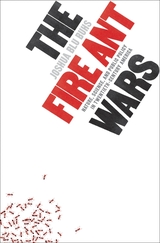 The Fire Ant Wars: Nature, Science, and Public Policy in Twentieth-Century America
Joshua Blu Buhs
University of Chicago Press, 2004 Sometime in the first half of the twentieth century, a coterie of fire ants came ashore from South American ships docked in Mobile, Alabama. Fanning out across the region, the fire ants invaded the South, damaging crops, harassing game animals, and hindering harvesting methods. Responding to a collective call from southerners to eliminate these invasive pests, the U.S. Department of Agriculture developed a campaign that not only failed to eradicate the fire ants but left a wake of dead wildlife, sickened cattle, and public protest.
With political intrigue, environmental tragedy, and such figures as Rachel Carson and E. O. Wilson, The Fire Ant Wars is a grippingly perceptive tale of changing social attitudes and scientific practices. Tracing the political and scientific eradication campaigns, Joshua Buhs's bracing study uses the saga as a means to consider twentieth-century American concepts of nature and environmental stewardship. In telling the story, Buhs explores how human concepts of nature evolve and how these ideas affect the natural and social worlds.
Spotlighting a particular issue to discuss larger questions of science, public perceptions, and public policy—from pre-environmental awareness to the activist years of the early environmental movement—The Fire Ant Wars will appeal to historians of science, environmentalists, and biologists alike.
 The Fire Ants
Walter R. Tschinkel
Harvard University Press, 2006 Walter Tschinkel's passion for fire ants has been stoked by over thirty years of exploring the rhythm and drama of Solenopsis invicta's biology. Since South American fire ants arrived in Mobile, Alabama, in the 1940s, they have spread to become one of the most reviled pests in the Sunbelt.
In Fire Ants Tschinkel provides not just an encyclopedic overview of S. invicta--how they found colonies, construct and defend their nests, forage and distribute food, struggle among themselves for primacy, and even relocate entire colonies--but a lively account of how research is done, how science establishes facts, and the pleasures and problems of a scientific career.
Between chapters detailed enough for experts but readily accessible to any educated reader, "interludes" provide vivid verbal images of the world of fire ants and the people who study them. Early chapters describe the several failed, and heavily politically influenced, eradication campaigns, and later ones the remarkable spread of S. invicta's "polygyne" form, in which nests harbor multiple queens and colonies reproduce by "budding." The reader learns much about ants, the practice of science, and humans' role in the fire ant's North American success.
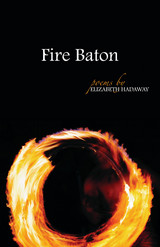 Fire Baton: Poems
Elizabeth Hadaway
University of Arkansas Press, 2006 Elizabeth Hadaway doesn’t just tell stories in her poems, she aims to delight as much as instruct, and her poems are scores for performance. Sparkling with shout-outs to Beowulf and Keats, varied meters, and surprising rhymes, she lifts centuries of hurt and anger into a contrary music. Her reach is vast, including everything from T. S. Eliot to the swans on her vinyl lace shower curtains. She warns us off from stereotypes and misconceptions about Appalachia and the South. Here are short lyrics and long narratives, poems about ballads, baton twirling, hound dogs, Shelley, and NASCAR stars. In “A Refusal to Mourn the Death, by Car, of Dale Earnhardt at Daytona,” she writes about a memorial T-shirt, “his face folded, half / in love with asphalt death.” Fire Baton announces the debut of a talented new poet of wit, vivacity, and color. And no matter how far she roams, she never lets us forget her roots, that she comes from a place “where where’s whirr.”
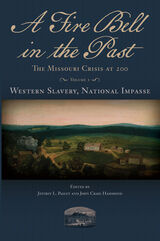 A Fire Bell in the Past: The Missouri Crisis at 200, Volume I, Western Slavery, National Impasse
Jeffrey L. Pasley
University of Missouri Press, 2021 Many new states entered the United States around 200 years ago, but only Missouri almost killed the nation it was trying to join. When the House of Representatives passed the Tallmadge Amendment banning slavery from the prospective new state in February 1819, it set off a two-year political crisis in which growing northern antislavery sentiment confronted the southern whites’ aggressive calls for slavery’s westward expansion. The Missouri Crisis divided the U.S. into slave and free states for the first time and crystallized many of the arguments and conflicts that would later be settled violently during the Civil War. The episode was, as Thomas Jefferson put it, “a fire bell in the night” that terrified him as the possible “knell of the Union.”
Drawing on the participants in two landmark conferences held at the University of Missouri and the City University of New York, this first of two volumes finds myriad new perspectives on the Missouri Crisis. Celebrating Missouri’s bicentennial the scholarly way, with fresh research and unsparing analysis, this eloquent collection of essays from distinguished historians gives the epochal struggle over Missouri statehood its due as a major turning point in American history.
Contributors include the editors, Christa Dierksheide, David N. Gellman, Sarah L. H. Gronningsater, Robert Lee, Donald Ratcliffe, Andrew Shankman, Anne Twitty, John R. Van Atta, and David Waldstreicher.
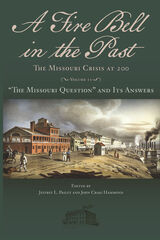 A Fire Bell in the Past: The Missouri Crisis at 200, Volume II: “The Missouri Question” and Its Answers
Jeffrey L. Pasley
University of Missouri Press, 2021 Many new states entered the United States around 200 years ago, but only Missouri almost killed the nation it was trying to join. When the House of Representatives passed the Tallmadge Amendment banning slavery from the prospective new state in February 1819, it set off a two-year political crisis in which growing northern antislavery sentiment confronted the aggressive westward expansion of the peculiar institution by southerners. The Missouri Crisis divided the U.S. into slave and free states for the first time and crystallized many of the arguments and conflicts that would later be settled violently during the Civil War. The episode was, as Thomas Jefferson put it, “a fire bell in the night” that terrified him as the possible “knell of the Union.”
Drawn from the of participants in two landmark conferences held at the University of Missouri and the City University of New York, those who contributed original essays to this second of two volumes—a group that includes young scholars and foremost authorities in the field—answer the Missouri “Question,” in bold fashion, challenging assumptions both old and new in the long historiography by approaching the event on its own terms, rather than as the inevitable sequel of the flawed founding of the republic or a prequel to its near destruction.
This second volume of A Fire Bell in the Past features a foreword by Daive Dunkley. Contributors include Dianne Mutti Burke, Christopher Childers, Edward P. Green, Zachary Dowdle, David J. Gary, Peter Kastor, Miriam Liebman, Matthew Mason, Kate Masur, Mike McManus, Richard Newman, and Nicholas Wood.
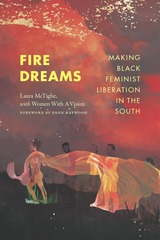 Fire Dreams: Making Black Feminist Liberation in the South
Laura McTighe, with Women With A Vision
Duke University Press, 2024 For thirty-five years, the New Orleans-based Black feminist collective Women With A Vision (WWAV) has fought for the liberation of their communities through reproductive justice, harm reduction, abolition feminism, racial justice, and sex workers' rights. In 2012, shortly after one of WWAV's biggest organizing victories, arsonists firebombed and destroyed their headquarters. Fire Dreams is an innovative collaboration between WWAV and Laura McTighe, who work in community to build a social movement ethnography of the organization’s post-arson rebirth. Rooting WWAV in the geography of the South and the living history of generations of Black feminist thinkers, McTighe and WWAV weave together stories from their founders’ pioneering work during the Black HIV/AIDS crisis in the 1980s and their groundbreaking organizing to end criminalization in the aftermath of Hurricane Katrina---with other movements for liberation as accomplices. Together, the authors refuse the logics of racial capitalism and share WWAV’s own world-building knowledges, as well as their methods for living these Black feminist futures now. Fire Dreams is a vital toolkit for grassroots organizers, activist-scholars, and all those who dream to make the world otherwise.
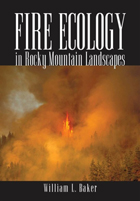 Fire Ecology in Rocky Mountain Landscapes
William L. Baker
Island Press, 2009 Fire Ecology in Rocky Mountain Landscapes brings a century of scientific research to bear on improving the relationship between people and fire. In recent years, some scientists have argued that current patterns of fire are significantly different from historical patterns, and that landscapes should be managed with an eye toward reestablishing past fire regimes. At the policy level, state and federal agencies have focused on fuel reduction and fire suppression as a means of controlling fire. Geographer William L. Baker takes a different view, making the case that the available scientific data show that infrequent episodes of large fires followed by long interludes with few fires led to naturally fluctuating landscapes, and that the best approach is not to try to change or control fire but to learn to live with it. In Fire Ecology in Rocky Mountain Landscapes, Baker reviews functional traits and responses of plants and animals to fire at the landscape scale; explains how scientists reconstruct the history of fire in landscapes; elaborates on the particulars of fire under the historical range of variability in the Rockies; and considers the role of Euro-Americans in creating the landscapes and fire situations of today. In the end, the author argues that the most effective action is to rapidly limit and redesign people-nature interfaces to withstand fire, which he believes can be done in ways that are immediately beneficial to both nature and communities.
Fire Ecology of Pacific Northwest Forests
James K. Agee
Island Press, 1993 The structure of most virgin forests in the western United States reflects a past disturbance history that includes forest fire. James K. Agee, an expert in the emergent field of fire ecology, analyzes the ecological role of fire in the creation and maintenance of natural western forests, focusing primarily on forest stand development patterns. His discussion of the natural fire environment and the environmental effects of fire is applicable to a wide range of temperate forests.
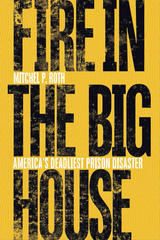 Fire in the Big House: America’s Deadliest Prison Disaster
Mitchel P. Roth
Ohio University Press, 2019 On April 21, 1930—Easter Monday—some rags caught fire under the Ohio Penitentiary’s dry and aging wooden roof, shortly after inmates had returned to their locked cells after supper. In less than an hour, 320 men who came from all corners of Prohibition-era America and from as far away as Russia had succumbed to fire and smoke in what remains the deadliest prison disaster in United States history. Within 24 hours, moviegoers were watching Pathé’s newsreel of the fire, and in less than a week, the first iteration of the weepy ballad “Ohio Prison Fire” was released. The deaths brought urgent national and international focus to the horrifying conditions of America’s prisons (at the time of the fire, the Ohio Penitentiary was at almost three times its capacity). Yet, amid darkening world politics and the first years of the Great Depression, the fire receded from public concern. In Fire in the Big House, Mitchel P. Roth does justice to the lives of convicts and guards and puts the conflagration in the context of the rise of the Big House prison model, local and state political machinations, and American penal history and reform efforts. The result is the first comprehensive account of a tragedy whose circumstances—violent unrest, overcrowding, poorly trained and underpaid guards, unsanitary conditions, inadequate food—will be familiar to prison watchdogs today.
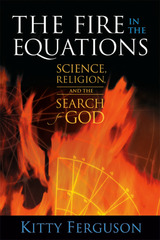 The Fire in the Equations: Science Religion & Search For God
Kitty Ferguson
Templeton Press, 2004 “ In this beautifully and intelligently written book, Ferguson not only reports on some of the intellectual tremors jolting the world of thinking women and men, but also considers the basic questions with penetrating analysis, yet at a very readable level. . . . An excellent book.” —Choice Heralded for its readability and scholarship, The Fire in the Equations offers a fascinating discussion of scientific discoveries and their impact on our beliefs. The book’s title is derived from Dr. Stephen Hawking’s pondering, “What is it that breathes fire into the equations and makes a universe for them to describe?” Originally published in the U.S. in 1995, it provides an excursion through new theories of quantum physics and cosmology, ranging from the nature of time, the big bang, the “unreasonable effectiveness” of mathematics, laws of nature, and their possible relation to God, chaos theory, black holes, Heisenberg’s uncertainty principle, particle physics, Darwin's theory of evolution, and the role of God in all these equations. It even raises such questions as “how God might answer prayers” from the point of view of physics. While she gives no absolute answers, Kitty Ferguson takes the reader through a world of paradoxes and improbabilities, explaining how believing in a pre-determined universe and free will as a theory of human behavior is possible. She concludes that what we know about science doesn't necessarily make God inevitable, but does not rule God out either.
Fire in the Hole
Sybil Downing
University Press of Colorado, 1996 The award-winning Fire in the Hole is the tale of a young widowed lawyer swept up in the violence of the famous Colorado coal strike of 1913-1914 known to history as the Ludlow Massacre. Opposed by the coal companies, the union, Wall Street, and the federal government, Alex hatches a scheme involving the president to overturn martial law and settle the strike. A gripping tale of a woman who dares to go beyond the conventions of the day to find freedom and justice amid a power struggle so terrifying it would wrench the nation's conscience for decades.
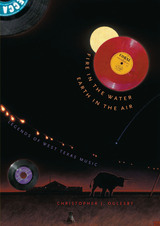 Fire in the Water, Earth in the Air: Legends of West Texas Music
By Christopher J. Oglesby
University of Texas Press, 2006 From Buddy Holly and the Crickets to the Flatlanders, Terry Allen, and Natalie Maines, Lubbock, Texas, has produced songwriters, musicians, and artists as prolifically as cotton, conservatives, and windstorms. While nobody questions where the conservatives come from in a city that a recent nonpartisan study ranked as America's second most conservative, many people wonder why Lubbock is such fertile ground for creative spirits who want to expand the boundaries of thought in music and art. Is it just that "there's nothing else to do," as some have suggested, or is there something in the character of Lubbock that encourages creativity as much as conservatism? In this book, Christopher Oglesby interviews twenty-five musicians and artists with ties to Lubbock to discover what it is about this community and West Texas in general that feeds the creative spirit. Their answers are revealing. Some speak of the need to rebel against conventional attitudes that threaten to limit their horizons. Others, such as Joe Ely, praise the freedom of mind they find on the wide open plains. "There is this empty desolation that I could fill if I picked up a pen and wrote, or picked up a guitar and played," he says. Still others express skepticism about how much Lubbock as a place contributes to the success of its musicians. Jimmie Dale Gilmore says, "I think there is a large measure of this Lubbock phenomenon that is just luck, and that is the part that you cannot explain." As a whole, the interviews create a portrait not only of Lubbock's musicians and artists, but also of the musical community that has sustained them, including venues such as the legendary Cotton Club and the original Stubb's Barbecue. This kaleidoscopic portrait of the West Texas music scene gets to the heart of what it takes to create art in an isolated, often inhospitable environment. As Oglesby says, "Necessity is the mother of creation. Lubbock needed beauty, poetry, humor, and it needed to get up and shake its communal ass a bit or go mad from loneliness and boredom; so Lubbock created the amazing likes of Jimmie Dale Gilmore, Butch Hancock, Terry Allen, and Joe Ely."
 A Fire in Their Hearts: Yiddish Socialists in New York
Tony Michels
Harvard University Press, 2009 In a compelling history of the Jewish community in New York during four decades of mass immigration, Tony Michels examines the defining role of the Yiddish socialist movement in the American Jewish experience.
The movement, founded in the 1880s, was dominated by Russian-speaking intellectuals, including Abraham Cahan, Mikhail Zametkin, and Chaim Zhitlovsky. Socialist leaders quickly found Yiddish essential to convey their message to the Jewish immigrant community, and they developed a remarkable public culture through lectures and social events, workers’ education societies, Yiddish schools, and a press that found its strongest voice in the mass-circulation newspaper Forverts.
Arguing against the view that socialism and Yiddish culture arrived as Old World holdovers, Michels demonstrates that they arose in New York in response to local conditions and thrived not despite Americanization, but because of it. And the influence of the movement swirled far beyond the Lower East Side, to a transnational culture in which individuals, ideas, and institutions crossed the Atlantic. New York Jews, in the beginning, exported Yiddish socialism to Russia, not the other way around.
The Yiddish socialist movement shaped Jewish communities across the United States well into the twentieth century and left an important political legacy that extends to the rise of neoconservatism. A story of hopeful successes and bitter disappointments, A Fire in Their Hearts brings to vivid life this formative period for American Jews and the American left.
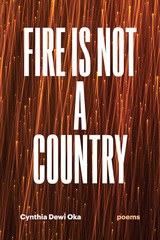 Fire Is Not a Country: Poems
Cynthia Dewi Oka
Northwestern University Press, 2022 In her third collection, Indonesian American poet Cynthia Dewi Oka dives into the implications of being parents, children, workers, and unwanted human beings under the savage reign of global capitalism and resurgent nativism. With a voice bound and wrestled apart by multiple histories, Fire Is Not a Country claims the spaces between here and there, then and now, us and not us.
As she builds a lyric portrait of her own family, Oka interrogates how migration, economic exploitation, patriarchal violence, and a legacy of political repression shape the beauties and limitations of familial love and obligation. Woven throughout are speculative experiments that intervene in the popular apocalyptic narratives of our time with the wit of an unassimilable other.
Oka’s speakers mourn, labor, argue, digress, avenge, and fail, but they do not retreat. Born of conflicts public and private, this collection is for anyone interested in what it means to engage the multitudes within ourselves.
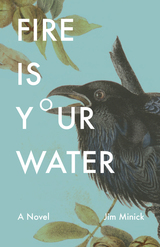 Fire Is Your Water: A Novel
Jim Minick
Ohio University Press, 2017 Sacred chants are Ada Franklin’s power and her medicine. By saying them, she can remove warts, stanch bleeding, and draw the fire from burns. At age twenty, her reputation as a faith healer defines her in her rural Pennsylvania community. But on the day in 1953 that her family’s barn is consumed by flame, her identity as a healer is upended. The heat, the roar of the blaze, and the bellows of the trapped cows change Ada. For the first time, she fears death and—for the first time—she doubts God. With her belief goes her power to heal. Then Ada meets an agnostic named Will Burk and his pet raven, Cicero. Fire Is Your Water is acclaimed memoirist Jim Minick’s first novel. Built on magical realism and social observation in equal measure, it never gives way to sentimentality and provides an insider’s glimpse into the culture of Appalachia. A jealous raven, a Greek chorus of one, punctuates the story with its judgments on the characters and their actions, until a tragic accident brings Ada and Will together in a deeper connection.
The Fire Landscape: Poems
Gary Fincke
University of Arkansas Press, 2008 The Fire Landscape is a series of poem sequences that chronicle a wide variety of coming-of-age moments from childhood in the 1950s through the beginning of the 21st century. These deeply layered, complex narrative poems are connected by close personal observation of place and time but also by the politics of the Cold War and its aftermath, including a sequence driven by the May 4, 1970, shooting of students by the National Guard at Kent State where Gary Fincke was a student at the time.
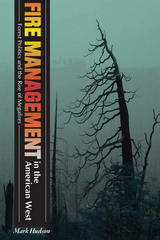 Fire Management in the American West: Forest Politics and the Rise of Megafires
Mark Hudson
University Press of Colorado, 2011 Most journalists and academics attribute the rise of wildfires in the western United States to the USDA Forest Service's successful fire-elimination policies of the twentieth century. However, in Fire Management in the American West, Mark Hudson argues that although a century of suppression did indeed increase the hazard of wildfire, the responsibility does not lie with the USFS alone. The roots are found in the Forest Service's relationships with other, more powerful elements of society--the timber industry in particular. Drawing on correspondence both between and within the Forest Service and the major timber industry associations, newspaper articles, articles from industry outlets, and policy documents from the late 1800s through the present, Hudson shows how the US forest industry, under the constraint of profitability, pushed the USFS away from private industry regulation and toward fire exclusion, eventually changing national forest policy into little more than fire policy. More recently, the USFS has attempted to move beyond the policy of complete fire suppression. Interviews with public land managers in the Pacific Northwest shed light on the sources of the agency's struggles as it attempts to change the way we understand and relate to fire in the West. Fire Management in the American West will be of great interest to environmentalists, sociologists, fire managers, scientists, and academics and students in environmental history and forestry.
Fire Muse: Poems from the Salt House
Cynthia Huntington
Dartmouth College Press, 2016 In Fire Muse, Cynthia Huntington returns to the back shore of Provincetown and the beach and dunes that inspired her 1999 memoir, The Salt House. Reflecting on place, time, and memory, Huntington’s poems display a kind of ecstasy born of love for her surroundings and a keen awareness of their sweep and details. Attentive to the outer world as well as what lies within, in these poems we find Huntington exploring her deepening bond with a familiar place.
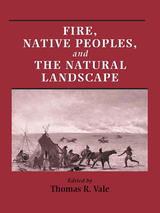 Fire, Native Peoples, and the Natural Landscape
Edited by Thomas R. Vale
Island Press, 2002 For nearly two centuries, the creation myth for the United States imagined European settlers arriving on the shores of a vast, uncharted wilderness. Over the last two decades, however, a contrary vision has emerged, one which sees the country's roots not in a state of "pristine" nature but rather in a "human-modified landscape" over which native peoples exerted vast control. Fire, Native Peoples, and the Natural Landscape seeks a middle ground between those conflicting paradigms, offering a critical, research-based assessment of the role of Native Americans in modifying the landscapes of pre-European America. Contributors focus on the western United States and look at the question of fire regimes, the single human impact which could have altered the environment at a broad, landscape scale, and which could have been important in almost any part of the West. Each of the seven chapters is written by a different author about a different subregion of the West, evaluating the question of whether the fire regimes extant at the time of European contact were the product of natural factors or whether ignitions by Native Americans fundamentally changed those regimes. An introductory essay offers context for the regional chapters, and a concluding section compares results from the various regions and highlights patterns both common to the West as a whole and distinctive for various parts of the western states. The final section also relates the findings to policy questions concerning the management of natural areas, particularly on federal lands, and of the "naturalness" of the pre-European western landscape.
A Fire of Lilies: Perspectives on Literature and Politics in Modern Iran
Ahmad Karimi-Hakkak
Leiden University Press, 2019 This book examines the role of Persian literature in politics in the tumultuous period of Iranian history from 1950 to 2000, illustrating how intellectuals used poetry, plays, novels and short stories to comment on socio-political developments. The unique aspect of the book is its strong empirical perspective, as Karimi-Hakkak has participated in the events he is writing about. It analyses how Persian intellectuals dealt with censorship, suppression, imprisonment, exile and even execution for the sake of expression of free speech.
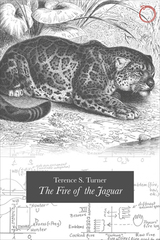 The Fire of the Jaguar
Terence S. Turner
HAU, 2017 Not since Clifford Geertz’s “Deep Play: Notes on the Balinese Cockfight” has the publication of an anthropological analysis been as eagerly awaited as this book, Terence S. Turner’s The Fire of the Jaguar. His reanalysis of the famous myth from the Kayapo people of Brazil was anticipated as an exemplar of a new, dynamic, materialist, action-oriented structuralism, one very different from the kind made famous by Claude Lévi-Strauss. But the study never fully materialized. Now, with this volume, it has arrived, bringing with it powerful new insights that challenge the way we think about structuralism, its legacy, and the reasons we have moved away from it.
In these chapters, Turner carries out one of the richest and most sustained analysis of a single myth ever conducted. Turner places the “Fire of the Jaguar” myth in the full context of Kayapo society and culture and shows how it became both an origin tale and model for the work of socialization, which is the primary form of productive labor in Kayapo society. A posthumous tribute to Turner’s theoretical erudition, ethnographic rigor, and respect for Amazonian indigenous lifeworlds, this book brings this fascinating Kayapo myth alive for new generations of anthropologists. Accompanied with some of Turner’s related pieces on Kayapo cosmology, this book is at once a richly literary work and an illuminating meditation on the process of creativity itself.
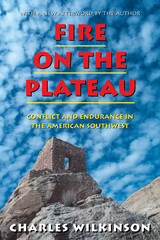 Fire on the Plateau: Conflict And Endurance In The American Southwest
Charles Wilkinson
Island Press, 1999 "This book recounts my journey through the Colorado Plateau, a journey through place and time and self.... During my explorations of more than three decades, I found a land that sears into my heart and soul, a place that has taught me and changed me. I also discovered a land of conflict and endurance, a land that has given birth to one of the great chapters in American history." --from the Introduction The Colorado Plateau, stretching across four states and covering nearly 80 million acres, is one of the most unique and spectacular landscapes in the world. Remote, rugged, and dry -- at once forlorn and glorious -- it is a separate place, a place with its own distinctive landscape, history, and future.In Fire on the Plateau, legal scholar and writer Charles Wilkinson relates the powerful story of how, over the past thirty years, he has been drawn ever more deeply into the redrock country and Indian societies of the Colorado Plateau. His work in the early 1970s as staff attorney for the newly formed Native American Rights Fund brought him into close contact with Navajo and Hopi people. His growing friendships with American Indians and increasing understanding of their cultures, along with his longstanding scholarship and experiences on federal public lands, led him to delve into the complicated history of the region.Wilkinson examines that history -- the sometimes violent conflicts between indigenous populations and more recent settlers, the political machinations by industry and the legal establishment, the contentious disputes over resources and land use -- and provides a compelling look at the epic events that have shaped the region. From centuries of habitation by native peoples to Mormon settlement, from the "Big Build-Up" of the post-World War II era to the increased environmental awareness of recent years, he explores the conquests of tribes and lands that have taken place, and the ways in which both have endured.Throughout, Wilkinson uses his own personal experiences as a lawyer working with Indian people and his heartfelt insights about a land that he grew to love to tie together the threads of the story. Fire on the Plateau is a vital and dynamic work that is sure to strike a chord with anyone interested in the past or future of the American Southwest.
Fire on the Prairie: Harold Washington, Chicago Politics, and the Roots of the Obama Presidency
Gary Rivlin
Temple University Press, 2012 Harold Washington’s historic and improbable victory over the vaunted Chicago political machine shook up American politics. The election of the enigmatic yet engaging Washington led to his serving five tumultuous years as the city’s first black mayor. He fashioned an uneasy but potent multiracial coalition that today still stands as a model for political change. In this revised edition of Fire on the Prairie, acclaimed reporter Gary Rivlin chronicles Washington’s legacy—a tale rich in character and intrigue. He reveals the cronyism of Daley’s government and Washington’s rivalry with Jesse Jackson. Rivlin also shows how Washington’s success inspired a young community organizer named Barack Obama to turn to the electoral arena as a vehicle for change. While the story of a single city, , this political biography is anything but parochial.
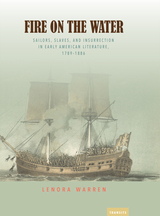 Fire on the Water: Sailors, Slaves, and Insurrection in Early American Literature, 1789-1886
Warren, Lenora
Bucknell University Press, 2019 Lenora Warren tells a new story about the troubled history of abolition and slave violence by examining representations of shipboard mutiny and insurrection in late eighteenth- and early nineteenth-century Anglo-American and American literature. Fire on the Water centers on five black sailors, whose experiences of slavery and insurrection either inspired or found resonance within fiction: Olaudah Equiano, Denmark Vesey, Joseph Cinqué, Madison Washington, and Washington Goode. These stories of sailors, both real and fictional, reveal how the history of mutiny and insurrection is both shaped by, and resistant to, the prevailing abolitionist rhetoric surrounding the efficacy of armed rebellion as a response to slavery. Pairing well-known texts with lesser-known figures (Billy Budd and Washington Goode) and well-known figures with lesser-known texts (Denmark Vesey and the work of John Howison), this book reveals the richness of literary engagement with the politics of slave violence.
Published by Bucknell University Press. Distributed worldwide by Rutgers University Press.
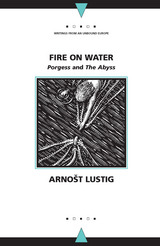 Fire on Water: Porgess and The Abyss
Arnost Lustig
Northwestern University Press, 2005 Contemplations of survival by one of the leading Czech writers of the twentieth century
It occurred to me why I was able to forgive the Italians, but never the Germans. Was it because the Italians never slept on mattresses stuffed with the hair of Luster Leibling or Weltfeind Flusser?
In this pair of short novels, Arnošt Lustig continues his lifelong project of creating a universe-at once concrete and dreamlike-to examine the horrors of the Holocaust and the impossible burden of living as a survivor.
The Abyss is the fragmented memories of David Wiesenthal, aged twenty, tortured by what he has witnessed and by the knowledge that luck-not skill, not courage, certainly not goodness-separated the survivors from the doomed. He seeks solace remembering the women he's loved or desired, even the one who represents his death.
In Porgess, the narrator recounts the life of the title character, "the most handsome boy in Jewish Prague" who was paralyzed on the last day of World War II. The two discuss their mutual fascinations-women, jazz, the significance of numbers-in sometimes bitter, sometimes sardonic voices, but always with the specters of the dead and the guilt of survival close at hand.
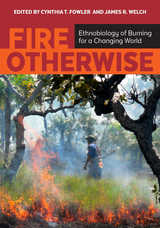 Fire Otherwise: Ethnobiology of Burning for a Changing World
Edited by Cynthia T. Fowler and James R. Welch
University of Utah Press, 2018 Fire is a daunting human ecological challenge and a major subject in science and policy debates about global trends in land conversion, climate change, and human health. Persistent environmental orthodoxies reduce complex burning traditions to overly simplistic representations of environmental destruction, degradation, and loss while reinforcing existing social inequities involving smallholders. Fire Otherwise: Ethnobiology of Burning for a Changing World advocates for a more inclusive and pluralistic fire ecology, a shift from the paradigmatic globalized version of fire science and management towards research and management that embraces anthropogenic fire regimes and broader understandings of the ways humans interact with fire. The authors present new evaluations of human interactions with fires in contexts of changing environmental conditions. Through deep description and analysis of knowledge and practices enacted by local communities who ignite, manage, and extinguish fires, this collection of case studies supports proactive local and regional efforts to adapt amidst continually changing social and ecological circumstances.
 The Fire Passage
Lisa Wells
Four Way Books, 2025 Winner of the 2025 Four Way Books Levis Prize in Poetry selected by Pulitzer Prize recipient Diane Seuss, The Fire Passage is a lyric descent in the epic tradition, traveling unto realms unmoored by extreme weather and mysterious illness before resurfacing to the light of a world remade. Recording her experience of a health crisis amid continuous natural disaster, poet Lisa Wells recontextualizes biblically scaled plagues as the entropic catastrophes of our late-stage capitalist society. “I was sick, plainly. / I had my symptoms.” Confronted with the disbelief and “skeptical pity” of medical professionals, Wells brilliantly illuminates the psychological exile of illness where patients, “turned out by the body,” find themselves on “malignancy’s forced pilgrimage.” The passage she travels is a gauntlet of flame, a path guarded by gatekeepers who acted “as if the wound were in [her] mind.” (“And it was. But it was elsewhere, too.”) This book serves as the answer to a query posed by bad-faith actors and the insightful dream-self alike: “so the wound is a window?” These pages convey grim comfort and radical optimism at once, reminding, “Friend, we die, but do not die alone.” They insist on an affirmative practice of responding to rhetorical questions, building solidarity among the weary who call out, ensuring that they—that we—are not alone with silence. “It comes for all? // It comes for all.” Despite its frank acknowledgment of fire’s lethal nature, the fortifying poetics of this book never preclude the possibility of resurrection or lose their focus on rebuilding a better world from the ashes of this one. “Do not shrink from That Which / razed the scab, will / fertilize the disturbance,” Wells commands us. She entreats us to measure up to a corrective future. “Already its great wave breaks / against the mangroves. // Let us go / and greet it.”
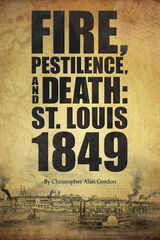 Fire, Pestilence, and Death: St. Louis, 1849
Christopher Alan Gordon
Missouri Historical Society Press, 2018 In 1849, St. Louis was little more than a frontier town, swelling under the pressure of rapid population growth, creaking under the strain of poor infrastructure, and often trapped within the confines of ignorance and prejudice. The cholera epidemic and Great Fire of 1849 were both a consequence of those problems and—despite the devastation they brought—a chance for the city to escape them. This book draws on the incomparable archives of the Missouri Historical Society, including newspaper accounts, letters, diaries, city and county records, and contemporary publications, to reveal the story of 1849 St. Louis as it was experienced by people who lived through that incredible year. The tale that emerges is as impressive as the city it depicts: full of all the drama and excitement of a great narrative and brimming with vivid accounts of momentous events whose causes and effects are still debated today. No St. Louis history buff will want to miss it.
Fire Point
John Smolens
Michigan State University Press, 2017 At nineteen, Hannah LeClaire already has a reputation in the village of Whitefish Harbor, in Michigan’s Upper Peninsula. She is given to solitary walks along the shore of Lake Superior, and on a cold April day she meets Martin Reed, who has just moved north from Chicago to renovate a dilapidated house he has inherited. Hannah immediately realizes that Martin, who is ten years her senior, is also an outcast and quite unlike anyone she has ever met.
A story of love, vengeance, and renewal, Fire Point depicts the young couple’s attempt to rebuild their lives. But when Hannah’s former boyfriend Sean Colby returns home after a mysterious early discharge from the army, he cannot accept the fact that she has a new lover and commits a series of increasingly violent acts against Hannah, Martin, and the house that has come to represent their future.
Fire Pond
Jessica Garratt
University of Utah Press, 2009 The Agha Shahid Ali Prize in Poetry was inaugurated in 2003 to honor the late poet, a nationally recognized writer and former professor at the University of Utah, and is sponsored by the University of Utah Press and the University of Utah Department of English. Fire Pond is the 2008 prize-winning volume selected by this year’s judge, Medbh McGuckian, poet, editor, and teacher from Belfast.
Fire Road
Donald Anderson
University of Iowa Press, 2001 Stephen Mann-- loyal son, war veteran, divorced father--is the subject of Donald Anderson's contemporary short-story cycle, Fire Road. In this award-winning collection, Mann negotiates life's punches through gain and loss, love and death, and the all too random dangers of being human. Woven between each personal story are poetic vignettes of isolated moments-- the headlines in a morning paper, a political murder--and the century's most violent tragedies--the bombing of Hiroshima, the firestorm at Dresden. Each vingette is a constant, powerful reminder of the human capacity to love and, ultimately, to destroy. A bruising view of one man's tumultuous journey through life, Fire Road explores the small and large crimes we all commit in the name of love and fear, despair and longing.
Fire Sale: Poems
D. G. (Greg) Geis
Tupelo Press, 2017 D. G. (Greg) Geis wades deep into the quotidian, but it’s not your everyday quotidian. He digs into those parts of our daily deeds and damage that other poets might think beneath their notice. Nothing, in fact, is beneath the notice of this cultural Inspector Hound: wry, witty, endlessly curious, and always entertaining in the way good humor is something you get now, something that gets you later. Slightly wicked, always irreverent, yet steeped in the honest working clothes of the social anthropologist, Geis finds stuff, and he lets you know about it. It’s bad-boy philosophy: part Blaise Pascal, zest of Slavoj Zizek, and a smattering of Mallarmé, and there you have Geis on the half-shell. Yet every poem has a chewy Platonic something at its center. In other words, this is the book of poetry you hide from the company, but keep on your night table, where you can find it fast in the small hours, when you need it most.
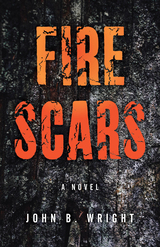 Fire Scars: A Novel
John B. Wright
University of Nevada Press, 2023 In John B. Wright’s debut environmental mystery, Matt Solberg is charged with discovering who is lighting fires in the forests that surround Missoula, Montana. A geographer with a deep personal need to bring people out of danger, Matt leads a search and rescue team whose job is to head directly into the mouth of hell, hiking into blazing backcountry to find missing residents. Matt and his team not only rely on their hard-won knowledge of Montana’s wild landscape, but also on Matt’s mentor, Dr. Bill Knight, a fire ecologist who understands the burning beast better than anyone.
When a suspicious fire destroys the mansion of a movie star, Matt must hike in to find his missing daughter and save her from the chaos. Then fires begin to explode everywhere as climate change drives temperatures over 100 degrees and rain refuses to fall, threatening thousands of homes. Who is setting these fires? Is it the Montana Tree Monkeys, an eco-radical group determined to scare off the newcomers? Or is it a retired smokejumper with an axe to grind about the encroaching mansions? Could it be Paladin, a shadowy figure leaving strange clues around the state? It’s Matt’s mission to find answers to these questions during a summer of heat, smoke, and unimaginable loss. Weaving together gripping drama and intriguing fire science, Fire Scars reveals the physical and psychological wounds we all carry—and the power we have to overcome.
Fire Season: Poems
Patrick Coleman
Tupelo Press, 2018 Occasioned by the birth of a first child and originally spoken aloud into a digital audio recorder on the poet’s long commute between the art museum where he worked and his home in a neighborhood burned in the Witch Creek Fire of 2007, each of the poems in Patrick Coleman’s first book resists the confusions of twenty-first-century parenthood, marriage, art, and commerce. By turns conversational and anxious, metaphysical and self-mocking, celebratory yet permeated by an awareness of life’s flickering ephemerality, Fire Season is a search for gratitude among reasons to be afraid—and proof that a person can pass through the fires and come out the other side alive.
 The Fire Spreads: Holiness and Pentecostalism in the American South
Randall J. Stephens
Harvard University Press, 2008 Today pentecostalism claims nearly 500 million followers worldwide. An early stronghold was the American South, where believers spoke in unknown tongues, worshipped in free-form churches, and broke down social barriers that had long divided traditional Protestants. Thriving denominations made their headquarters in the region and gathered white and black converts from the Texas plains to the Carolina low country.
Pentecostalism was, in fact, a religious import. It came to the South following the post-Civil War holiness revival, a northern-born crusade that emphasized sinlessness and religious empowerment. Adherents formed new churches in the Jim Crow South and held unconventional beliefs about authority, power, race, and gender. Such views set them at odds with other Christians in the region. By 1900 nearly all southern holiness folk abandoned mainline churches and adopted a pessimistic, apocalyptic theology. Signs of the last days, they thought, were all around them.
The faith first took root among anonymous religious zealots. It later claimed southern celebrities and innovators like televangelists Oral Roberts, Jimmy Swaggart, T. D. Jakes, and John Hagee; rock-and-roll icons Elvis Presley, Jerry Lee Lewis, and Little Richard; and, more recently, conservative political leaders such as John Ashcroft.
With the growth of southern pentecostal denominations and the rise of new, affluent congregants, the movement moved cautiously into the evangelical mainstream. By the 1980s the once-apolitical faith looked entirely different. Many still watched and waited for spectacular signs of the end. Yet a growing number did so as active political conservatives.
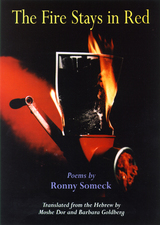 The Fire Stays in Red: Poems
Ronnie Someck
University of Wisconsin Press, 2002 "My mother dreams in Arabic, I dream in Hebrew," says Ronny Someck. Born in 1951, he was uprooted from his native Iraq when he was four. Transplanted to Israel, Someck spent his childhood in a transit camp for new immigrants. There he was surrounded by music, the great singers Umm Kulthum, Farid al Atrash, and Fairuz shouldering up against Elvis Presley and Billie Holiday. No wonder he is so beloved in Israel. In what other poet do we find Tarzan, Marilyn Monroe, and cowboys battling with Rabbi Yehuda Halevi for the hearts and souls of Israelis?
Someck’s poems are rich in slang and distinguished by staccato rhythms, quick cuts, close-ups, and disturbing segues. As in film noir, the sensations are of speed, danger, uncertainty. His distinct Sephardi voice invokes the odors of falafel and schwarma, the army with its supporting cast of recruits and commandos, the bustle of southern Tel Aviv with its small garages, shops, cheap restaurants, its gangs and its Arab workers. He is also the troubadour of the lovelorn, with poems that are hot, erotic, comic, tragic, agape at the wonders of a tear and a tattoo and a snapshot and a bra and a scarecrow.
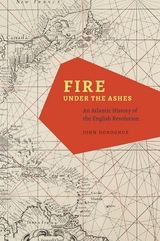 Fire under the Ashes: An Atlantic History of the English Revolution
John Donoghue
University of Chicago Press, 2013 In Fire under the Ashes, John Donoghue recovers the lasting significance of the radical ideas of the English Revolution, exploring their wider Atlantic history through a case study of Coleman Street Ward, London. Located in the crowded center of seventeenth-century London, Coleman Street Ward was a hotbed of political, social, and religious unrest. There among diverse and contentious groups of puritans a tumultuous republican underground evolved as the political means to a more perfect Protestant Reformation. But while Coleman Street has long been recognized as a crucial location of the English Revolution, its importance to events across the Atlantic has yet to be explored.
Prominent merchant revolutionaries from Coleman Street led England’s imperial expansion by investing deeply in the slave trade and projects of colonial conquest. Opposing them were other Coleman Street puritans, who having crossed and re-crossed the ocean as colonists and revolutionaries, circulated new ideas about the liberty of body and soul that they defined against England’s emergent, political economy of empire. These transatlantic radicals promoted social justice as the cornerstone of a republican liberty opposed to both political tyranny and economic slavery—and their efforts, Donoghue argues, provided the ideological foundations for the abolitionist movement that swept the Atlantic more than a century later.
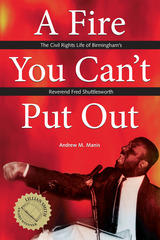 A Fire You Can't Put Out: The Civil Rights Life of Birmingham's Reverend Fred Shuttlesworth
Andrew M. Manis
University of Alabama Press, 2001 When Fred Shuttlesworth suffered only a bump on the head in the 1956 bombing of his home, members of his church called it a miracle. Shuttlesworth took it as a sign that God would protect him on the mission that had made him a target that night. Standing in front of his demolished home, Shuttlesworth vigorously renewed his commitment to integrate Birmingham's buses, lunch counters, police force, and parks. The incident transformed him, in the eyes of Birmingham's blacks, from an up-and-coming young minister to a virtual folk hero and, in the view of white Birmingham, from obscurity to rabble-rouser extraordinaire. From his 1956 founding of the Alabama Christian Movement for Human Rights through the historic demonstrations of 1963, driven by a sense of divine mission, Shuttlesworth pressured Jim Crow restrictions in Birmingham with radically confrontational acts of courage. His intensive campaign pitted him against the staunchly segregationist police commissioner Eugene "Bull" Connor and ultimately brought him to the side of Martin Luther King Jr. and to the inner chambers of the Kennedy White House. First published in 1999, Andrew Manis's award-winning biography of "one of the nation's most courageous freedom fighters" demonstrates compellingly that Shuttleworth's brand of fiery, outspoken confrontation derived from his prophetic understanding of the pastoral role. Civil rights activism was tantamount to salvation in his understanding of the role of Christian minister.
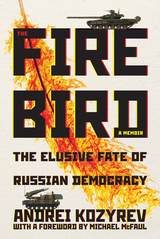 The Firebird: The Elusive Fate of Russian Democracy
Andrei Kozyrev
University of Pittsburgh Press, 2020
Andrei Kozyrev was foreign minister of Russia under President Boris Yeltsin from August 1991 to January 1996. During the August 1991 coup attempt against Mikhail Gorbachev, he was present when tanks moved in to seize the Russian White House, where Boris Yeltsin famously stood on a tank to address the crowd assembled. He then departed to Paris to muster international support and, if needed, to form a Russian government-in-exile. He participated in the negotiations at Brezhnev’s former hunting lodge in Belazheva, Belarus where the leaders of Russia, Ukraine, and Belarus agreed to secede from the Soviet Union and form a Commonwealth of Independent States. Kozyrev’s pro-Western orientation made him an increasingly unpopular figure in Russia as Russia’s spiraling economy and the emergence of ultra-wealthy oligarchs soured ordinary Russians on Western ideas of democracy and market capitalism.
The Firebird takes the reader into the corridors of power to provide a startling eyewitness account of the collapse of the Soviet Union, the struggle to create a democratic Russia in its place, and how the promise of a better future led to the tragic outcome that changed our world forever.
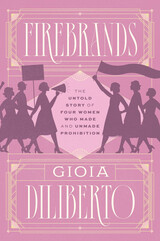 Firebrands: The Untold Story of Four Women Who Made and Unmade Prohibition
Gioia Diliberto
University of Chicago Press, 2024 Guaranteed to change how you picture Prohibition, this lively history turns the spotlight on four women in the immediate aftermath of winning the vote who played influential roles on all sides of the Eighteenth and Twenty-First Amendments.
In the popular imagination, the story of Prohibition in America is a story of men and male violence, one full of federal agents fighting gangsters over the sale of moonshine. In contrast, Firebrands is the story of four Jazz Age dynamos—all women –who were forces behind the passage, the enforcement, the defiance, and, ultimately, the repeal of the Eighteenth Amendment. They battled each other directly, and they learned to marshal clout with cowed and hypocritical legislators, almost all of them men. Their clash over Prohibition stands as the first significant exercise of women’s political power since women gained the right to vote, and their influence on the American political scene wouldn’t be equaled for decades.
In Gioia Diliberto’s fresh and timely take on this period of history, we meet Ella Boole, the stern and ambitious leader of the Woman’s Christian Temperance Union, who campaigned fiercely to introduce Prohibition and fought desperately to keep it alive. We also meet Mabel Walker Willebrandt, the most powerful woman in America at the time, who served as the top federal prosecutor charged with enforcing Prohibition. Diliberto tells the story, too, of silent film star Texas Guinan, who ran New York speakeasies backed by the mob and showed that Prohibition was not only absurd but unenforceable. And, she follows Pauline Morton Sabin, a glamorous Manhattan aristocrat who belatedly recognized the cascading evil in Prohibition and mobilized the movement to kill it.
These women led their opposing forces of “Wets” and “Drys” across a teeming landscape of bootleggers, gangsters, federal agents, temperance fanatics, and cowardly politicians, many of them secret drunks. Building on the momentum of suffrage, they forged a path for the activists who followed during the great civil rights battles of the mid-twentieth century. Yet, they have been largely lost to history. In Firebrands, Diliberto finally gives these dynamic figures their due, creating a varied and dramatic portrait of women wielding power, in politics, society, and popular culture.
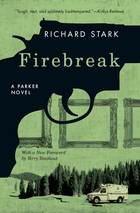 Firebreak: A Parker Novel
Richard Stark
University of Chicago Press, 2011 An action-packed crime novel starring Parker, the heister starring in the forthcoming Shane Black film Play Dirty!
Richard Stark's Parker novels are the hardest of hard-boiled, classic crime novels where the heists are huge, the body counts are high, and the bad guys usually win.
The Parker novels have been a huge influence on countless writers and filmmakers, including Quentin Tarantino, Stephen King, George Pelecanos, Colson Whitehead, Lucy Sante, John Banville, and many more. Their stripped-down language and hard-as-nails amorality create an unforgettable world where the next score could be the big one, but your next mistake could also be your last. There's nothing else like them.
Between Parker’s 1961 debut and his return in the late 1990s, the whole world of crime changed. Now fake IDs and credit cards had to be purchased from specialists; increasingly sophisticated policing made escape and evasion tougher; and, worst of all, money had gone digital—the days of cash-stuffed payroll trucks were long gone.
But cash isn’t everything: Firebreak takes Parker to a palatial Montana “hunting lodge” where a dot-com millionaire hides a gallery of stolen old masters—which will fetch Parker a pretty penny if his team can just get it past the mansion’s tight security. The forests of Montana are an inhospitable place for a heister when well-laid plans fall apart, but no matter how untamed the wilderness, Parker’s guaranteed to be the most dangerous predator around.
The Fire-Dwellers
Margaret Laurence
University of Chicago Press, 1993 Convinced that life has more to offer than the tedious routine of her days, Stacey MacAindra yearns to recover some of the passion of her early romance. In this extraordinary novel, Margaret Laurence has given us yet another unforgettable heroine: smart, witty, but overwhelmed by the responsibilities of raising four children and trying to love her overworked husband. The Fire Dwellers helps us to rediscover all the richness of the commonplace, as well as the pain, beauty—and humor—of being alive.
"Stacey's state of mind is revealed in a swift-flowing stream of dialogue, reaction, reproach, and nostalgia. . . . [Laurence] is the best fiction writer in the Dominion and one of the best in the hemisphere."—Atlantic
Firefighter and Paramedic Burnout: The Survival Guide - The Role You Play
Gerald Loren Fishkin, Ph.D.
Parkhurst Brothers, Inc. Firefighter and Paramedic Burnout was the first comprehensive book dealing with the recognition and treatment of burnout among firefighter and paramedic personnel. Today, this standard still serves to provide readers with a system of identification of early warning signs of excessive stress, its personal and social consequences, and interventions that have been proven to assist firefighters and their family members to return to a state of health and productivity.
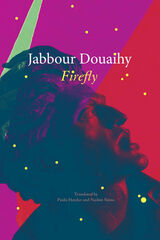 Firefly
Jabbour Douaihy
Seagull Books, 2022 A powerful novel of a young man living between Muslim and Christian worlds amid the Lebanese Civil War.
Firefly paints a searing portrait of the city of Beirut at the outbreak of the Lebanese Civil War in the early 1970s, as seen through the eyes of its simple, yet perplexing, protagonist, Nizam al-Alami. On Nizam’s national ID card, no religion is listed. Muslim by birth, he is Christian by baptism. As a young boy, he found his way into an orchard while playing, and its owners, Touma and Rakheema, instantly fell for him and agreed to raise him as their own, as a Christian, without much resistance from his Muslim parents.
When he is grown, Nizam makes his way to Beirut to study law. Unable to bear the confines of the classroom, he abandons college to explore the city as he pleases. His apartment soon becomes a meeting place for his communist comrades, and he falls in love with Janan, the tormented artist whose dark paintings prophesy the city’s bloody future. When Beirut explodes, and the city is divided into a Christian East and a Muslim West, Nizam’s apartment turns into a hideout for armed militiamen, and Burj Square is emptied of everything except the Martyrs’ Statue that bears witness to the city’s most difficult moments. Nizam, too, bears witness, as he sees the corpses of the civil war’s victims pile up.
Jabbour Douaihy takes us through Nizam’s adventures and struggles as he faces stigmatization, homelessness, and violence in a society that considers him an outsider. Like the light-producing, charismatic fireflies that captured his imagination and eluded him as a child, Nizam is the glimmer of hope epitomized by those who reject binary identities in favor of the in-between. But how long, Douaihy asks, can this glimmer of hope truly last?
Fires
Marguerite Yourcenar
University of Chicago Press, 1994 Fires consists of nine monologues and narratives based on classical Greek stories. Antigone, Clytemnestra, Phaedo, Sappho are all mythical figures whose stories are mingled with contemporary themes. Interspersed are highly personal narratives, reflecting on a time of profound inner crisis in the author's life.
"The unwritten novel among the fantasies and aphorisms of Fires is a classic tale."—Stephen Koch, New York Times Book Review
 Fires of Hatred: Ethnic Cleansing in Twentieth-Century Europe
Norman M. Naimark
Harvard University Press, 2002 Of all the horrors of the last century—perhaps the bloodiest century of the past millennium—ethnic cleansing ranks among the worst. The term burst forth in public discourse in the spring of 1992 as a way to describe Serbian attacks on the Muslims of Bosnia-Herzegovina, but as this landmark book attests, ethnic cleansing is neither new nor likely to cease in our time.
Norman Naimark, distinguished historian of Europe and Russia, provides an insightful history of ethnic cleansing and its relationship to genocide and population transfer. Focusing on five specific cases, he exposes the myths about ethnic cleansing, in particular the commonly held belief that the practice stems from ancient hatreds. Naimark shows that this face of genocide had its roots in the European nationalism of the late nineteenth century but found its most virulent expression in the twentieth century as modern states and societies began to organize themselves by ethnic criteria. The most obvious example, and one of Naimark’s cases, is the Nazi attack on the Jews that culminated in the Holocaust. Naimark also discusses the Armenian genocide of 1915 and the expulsion of Greeks from Anatolia during the Greco–Turkish War of 1921–22; the Soviet forced deportation of the Chechens-Ingush and the Crimean Tatars in 1944; the Polish and Czechoslovak expulsion of the Germans in 1944–47; and Bosnia and Kosovo.
In this harrowing history, Naimark reveals how over and over, as racism and religious hatreds picked up an ethnic name tag, war provided a cover for violence and mayhem, an evil tapestry behind which nations acted with impunity.
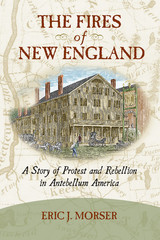 The Fires of New England: A Story of Protest and Rebellion in Antebellum America
Eric J. Morser
University of Massachusetts Press, 2017 In the winter of 1834, twenty men convened in Keene, New Hampshire, and published a fiery address condemning their state's legal system as an abomination that threatened the legacy of the American Revolution. They attacked New Hampshire's constitution as an archaic document that undermined democracy and created a system of conniving attorneys and judges. They argued that the time was right for their neighbors to rise up and return the Granite State to the glorious pathway blazed by the nation's founders.
Few people embraced the manifesto and its radical message. Nonetheless, as Eric J. Morser illustrates in this eloquently written and deeply researched book, the address matters because it reveals how commercial, cultural, political, and social changes were remaking the lives of the men who drafted and shared it in the 1830s. Using an imaginative range of sources, Morser artfully reconstructs their moving personal tales and locates them in a grander historical context. By doing so, he demonstrates that even seemingly small stories from antebellum America can help us understand the rich complexities of the era.
The Fires of Patriotism: Alaskans in the Days of the First World War 1910-1920
Preston Jones
University of Alaska Press, 2013 In the early twentieth century, Alaska was facing an exciting future as the newest US territory. Yet just five years after its official designation, the country entered World War I and citizens were called to fight. Despite the threat of a looming economic collapse, Alaska sent more people per capita to war than any other state and displayed a patriotism that rivaled that of any of the states.
The Fires of Patriotism explores Alaska’s wartime experience, bringing to light new stories and new characters from a decade that shook the world. This multifaceted book explores the era through engaging stories and rare photos, offering a fresh perspective on World War I from a marginal land that forged its place in the greater unity of the country.
 The Fires of Vesuvius: Pompeii Lost and Found
Mary Beard
Harvard University Press, 2010 Pompeii is the most famous archaeological site in the world, visited by more than two million people each year. Yet it is also one of the most puzzling, with an intriguing and sometimes violent history, from the sixth century BCE to the present day.
Destroyed by Vesuvius in 79 CE, the ruins of Pompeii offer the best evidence we have of life in the Roman Empire. But the eruptions are only part of the story. In The Fires of Vesuvius, acclaimed historian Mary Beard makes sense of the remains. She explores what kind of town it was—more like Calcutta or the Costa del Sol?—and what it can tell us about “ordinary” life there. From sex to politics, food to religion, slavery to literacy, Beard offers us the big picture even as she takes us close enough to the past to smell the bad breath and see the intestinal tapeworms of the inhabitants of the lost city. She resurrects the Temple of Isis as a testament to ancient multiculturalism. At the Suburban Baths we go from communal bathing to hygiene to erotica.
Recently, Pompeii has been a focus of pleasure and loss: from Pink Floyd’s memorable rock concert to Primo Levi’s elegy on the victims. But Pompeii still does not give up its secrets quite as easily as it may seem. This book shows us how much more and less there is to Pompeii than a city frozen in time as it went about its business on 24 August 79.
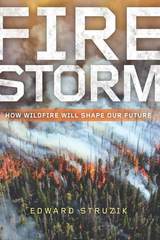 Firestorm: How Wildfire Will Shape Our Future
Edward Struzik
Island Press, 2019 "Frightening...Firestorm comes alive when Struzik discusses the work of offbeat scientists." —New York Times Book Review
"Comprehensive and compelling." —Booklist
"A powerful message." —Kirkus
"Should be required reading." —Library Journal
For two months in the spring of 2016, the world watched as wildfire ravaged the Canadian town of Fort McMurray. Firefighters named the fire “the Beast.” It acted like a mythical animal, alive with destructive energy, and they hoped never to see anything like it again. Yet it’s not a stretch to imagine we will all soon live in a world in which fires like the Beast are commonplace. A glance at international headlines shows a remarkable increase in higher temperatures, stronger winds, and drier lands– a trifecta for igniting wildfires like we’ve rarely seen before.
This change is particularly noticeable in the northern forests of the United States and Canada. These forests require fire to maintain healthy ecosystems, but as the human population grows, and as changes in climate, animal and insect species, and disease cause further destabilization, wildfires have turned into a potentially uncontrollable threat to human lives and livelihoods.
Our understanding of the role fire plays in healthy forests has come a long way in the past century. Despite this, we are not prepared to deal with an escalation of fire during periods of intense drought and shorter winters, earlier springs, potentially more lightning strikes and hotter summers. There is too much fuel on the ground, too many people and assets to protect, and no plan in place to deal with these challenges.
In Firestorm, journalist Edward Struzik visits scorched earth from Alaska to Maine, and introduces the scientists, firefighters, and resource managers making the case for a radically different approach to managing wildfire in the 21st century. Wildfires can no longer be treated as avoidable events because the risk and dangers are becoming too great and costly. Struzik weaves a heart-pumping narrative of science, economics, politics, and human determination and points to the ways that we, and the wilder inhabitants of the forests around our cities and towns, might yet flourish in an age of growing megafires.
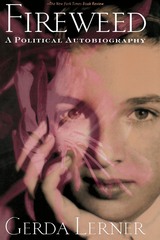 Fireweed: A Political Autobiography
Gerda Lerner
Temple University Press, 2003 In Fireweed, Gerda Lerner, a pioneer and leading scholar in women's history, tells her story of moral courage and commitment to social change with a novelist's skill and a historian's command of context. Lerner's memoir focuses on the formative experiences that made her an activist for social justice before her academic career began. The child of a well-to-do Viennese Jewish family, she was still a teenager when a fascist regime came to power in 1934, and she became involved in the underground resistance movement. The Nazi takeover of Austria cast her into prison, then forced her and her family into exile; she alone was able to leave Europe. Once in the United States, she experienced the harshness of the Depression and despair over the fate of her family. Still, she persisted in adapting to the new culture and to becoming a writer. Here she met and married her life-long partner, Carl Lerner, a film editor and director. Together they become deeply involved in left-wing activities, from struggling to unionize the film industry and resisting the blacklist in Hollywood to community organizing for peace, for an interracial civil rights movement, and for better schools in New York City. Lerner insists that her decades of grassroots organizing largely account for the theoretical insights she was later able to bring to the development of women's history. In Fireweed, Lerner presents her life in the context of the major historical events of the twentieth century and the repression of dissent. Hers is a gripping story about surviving hardship and summoning the courage to live according to one's convictions.
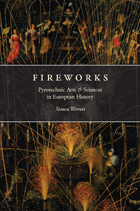 Fireworks: Pyrotechnic Arts and Sciences in European History
Simon Werrett
University of Chicago Press, 2010 Fireworks are synonymous with celebration in the twenty-first century. But pyrotechnics—in the form of rockets, crackers, wheels, and bombs—have exploded in sparks and noise to delight audiences in Europe ever since the Renaissance. Here, Simon Werrett shows that, far from being only a means of entertainment, fireworks helped foster advances in natural philosophy, chemistry, mathematics, and many other branches of the sciences. Fireworks brings to vibrant life the many artful practices of pyrotechnicians, as well as the elegant compositions of the architects, poets, painters, and musicians they inspired. At the same time, it uncovers the dynamic relationships that developed between the many artists and scientists who produced pyrotechnics. In so doing, the book demonstrates the critical role that pyrotechnics played in the development of physics, astronomy, chemistry and physiology, meteorology, and electrical science. Richly illustrated and drawing on a wide range of new sources, Fireworks takes readers back to a world where pyrotechnics were both divine and magical and reveals for the first time their vital contribution to the modernization of European ideas.
The Firm, the Market, and the Law
R. H. Coase
University of Chicago Press, 1987 A Nobel Prize winner's most important, groundbreaking work, collected in one volume
The Firm, the Market, and the Law gathers the most important and lasting works by Nobel Prize-winning economist Ronald Coase. Awarded the Nobel Prize in 1991 for his groundbreaking work on the significance of transaction costs and property rights, Coase continually urged his fellow economists to examine the real-world foundations on which their theories rest. This volume collects some of his classic articles probing those very foundations. "The Nature of the Firm" (1937) introduced the then-revolutionary concept of transaction costs into economic theory. "The Problem of Social Cost" (1960) further developed this concept, emphasizing the effect of the law on the working of the economic system. The remaining papers and new introductory essay clarify and extend Coarse's arguments and address his critics.
 The Firm, the Market, and the Law
R. H. Coase
University of Chicago Press, 1987 This is an auto-narrated audiobook version of this book.
Few other economists have been read and cited as often as R.H. Coase has been, even though, as he admits, "most economists have a different way of looking at economic problems and do not share my conception of the nature of our subject." Coase's particular interest has been that part of economic theory that deals with firms, industries, and markets—what is known as price theory or microeconomics. He has always urged his fellow economists to examine the foundations on which their theory exists, and this volume collects some of his classic articles probing those very foundations. "The Nature of the Firm" (1937) introduced the then-revolutionary concept of transaction costs into economic theory. "The Problem of Social Cost" (1960) further developed this concept, emphasizing the effect of the law on the working of the economic system. The remaining papers and new introductory essay clarify and extend Coarse's arguments and address his critics.
"These essays bear rereading. Coase's careful attention to actual institutions not only offers deep insight into economics but also provides the best argument for Coase's methodological position. The clarity of the exposition and the elegance of the style also make them a pleasure to read and a model worthy of emulation."—Lewis A. Kornhauser, Journal of Economic Literature
Ronald H. Coase was awarded the Nobel Prize in Economic Science in 1991.
 The First 50 Years of the Department of Industrial and Operations Engineering at the University of Michigan: 1955–2005
Don Chaffin
Michigan Publishing, 2016 Why does someone commit to writing a history about anything? Hopefully, by doing so both the writer and readers will realize that good things don’t simply happen; they result from the creative and hard work of many different people who shared a common vision and goals, often for many years. The Industrial and Operations Engineering Department has been a highly ranked leader in several different aspects of the field over its lifetime. Part of its success may lie in the fact that its faculty members have come from diverse fields, including mathematics, computer science, statistics, physiology, psychology, organizational psychology, mechanical engineering, and economics. In addition, many faculty members worked in or with a variety of industries before joining the department. These people appear to have used their diverse backgrounds in the belief that they could accomplish a larger impact by actively collaborating with others to solve a variety of major societal problems.
 The First Amendment and LGBT Equality: A Contentious History
Carlos A. Ball
Harvard University Press, 2017 Conservative opponents of LGBT equality in the United States often couch their opposition in claims of free speech, free association, and religious liberty. It is no surprise, then, that many LGBT supporters equate First Amendment arguments with resistance to their cause. The First Amendment and LGBT Equality tells another story, about the First Amendment’s crucial yet largely forgotten role in the first few decades of the gay rights movement.
Between the 1950s and 1980s, when many courts were still openly hostile to sexual minorities, they nonetheless recognized the freedom of gay and lesbian people to express themselves and associate with one another. Successful First Amendment cases protected LGBT publications and organizations, protests and parades, and individuals’ right to come out. The amendment was wielded by the other side only after it had laid the groundwork for major LGBT equality victories.
Carlos A. Ball illuminates the full trajectory of this legal and cultural history. He argues that, in accommodating those who dissent from LGBT equality on grounds of conscience, it is neither necessary nor appropriate to depart from the established ways in which American antidiscrimination law has, for decades, accommodated equality dissenters. But he also argues that as progressives fight the First Amendment claims of religious conservatives and other LGBT opponents today, they should take care not to erode the very safeguards of liberty that allowed LGBT rights to exist in the first place.
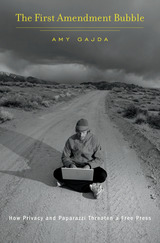 The First Amendment Bubble: How Privacy and Paparazzi Threaten a Free Press
Amy Gajda
Harvard University Press, 2015 In determining the news that’s fit to print, U.S. courts have traditionally declined to second-guess professional journalists. But in an age when news, entertainment, and new media outlets are constantly pushing the envelope of acceptable content, the consensus over press freedoms is eroding. The First Amendment Bubble examines how unbridled media are endangering the constitutional privileges journalists gained in the past century.
For decades, judges have generally affirmed that individual privacy takes a back seat to the public’s right to know. But the growth of the Internet and the resulting market pressures on traditional journalism have made it ever harder to distinguish public from private, news from titillation, journalists from provocateurs. Is a television program that outs criminals or a website that posts salacious videos entitled to First Amendment protections based on newsworthiness? U.S. courts are increasingly inclined to answer no, demonstrating new resolve in protecting individuals from invasive media scrutiny and enforcing their own sense of the proper boundaries of news.
This judicial backlash now extends beyond ethically dubious purveyors of infotainment, to mainstream journalists, who are seeing their ability to investigate crime and corruption curtailed. Yet many—heedless of judicial demands for accountability—continue to push for ever broader constitutional privileges. In so doing, Amy Gajda warns, they may be creating a First Amendment bubble that will rupture in the courts, with disastrous consequences for conventional news.
 The First Amendment, Democracy, and Romance
Steven Shiffrin
Harvard University Press, 1990 Ralph Waldo Emerson celebrated the individualism, rebelliousness, anti-authoritarianism, and the spirit of nonconformity within all of us. In The First Amendment, Democracy, and Romance, Steven Shiffrin argues that romantics like Emerson have more to teach us about freedom of speech and democracy than does Justice Oliver Wendell Holmes: if the first amendment is to have a single organizing symbol, let it be the image of the dissenter. A major purpose of the first amendment, says Shiffrin, is to protect those who would break out of orthodox forms.
Although the Emersonian ideal of freedom of speech has deep roots in the nation's culture, it has been subtly denigrated in recent first-amendment theory and seriously abused in practice. Yet Shiffrin believes that the first amendment can provide a sensible accommodation among a host of conflicting values in a changing world, and can also stand as a national symbol—in short, it can allow for both social construction and romance.
Blending insights from literature, philosophy, political science, history, rhetoric, and law, Shiffrin maintains that the romantic tradition sheds light not only on a range of free-speech issues, such as libel, flag burning, and the commercialization of the mass media, but also on subjects of broader theoretical controversy, including liberalism, pragmatism, and the republican revival. In addition to its original approach to the law, this book brings new observations and fresh insights to its discussions of the role of the first amendment in American culture. It will interest a general audience as well as lawyers, journalists, and scholars in a variety of academic fields.
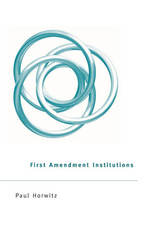 First Amendment Institutions
Paul Horwitz
Harvard University Press, 2012 Addressing a host of hot-button issues, from the barring of Christian student groups and military recruiters from law schools and universities to churches’ immunity from civil rights legislation in hiring and firing ministers, Paul Horwitz proposes a radical reformation of First Amendment law. Arguing that rigidly doctrinal approaches can’t account for messy, real-world situations, he suggests that the courts loosen their reins and let those institutions with a stake in First Amendment freedoms do more of the work of enforcing them.
Universities, the press, libraries, churches, and various other institutions and associations are a fundamental part of the infrastructure of public discourse. Rather than subject them to ill-fitting, top-down rules and legal categories, courts should make them partners in shaping public discourse and First Amendment law, giving these institutions substantial autonomy to regulate their own affairs. Self-regulation and public criticism should be the key restraints on these institutions, not judicial fiat. Horwitz suggests that this approach would help the law enhance the contribution of our “First Amendment institutions” to social and political life. It would also move us toward a conception of the state as a participating member of our social framework, rather than a reigning and often overbearing sovereign.
First Amendment Institutions offers a new vantage point from which to evaluate ongoing debates over topics ranging from campaign finance reform to campus hate speech and affirmative action in higher education. This book promises to promote—and provoke—important new discussions about the shape and future of the First Amendment.
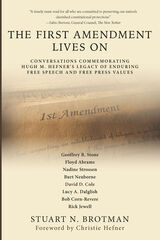 The First Amendment Lives On: Conversations Commemorating Hugh M. Hefner's Legacy of Enduring Free Speech and Free Press Values
Stuart N. Brotman
University of Missouri Press, 2022 Hugh M. Hefner’s legacy of enduring free speech and free press values is embodied in the Hugh M. Hefner First Amendment Awards, established in 1979, which honor leading First Amendment scholars and advocates. Hefner also had a lifelong interest in film censorship issues and supported teaching about them at the University of Southern California for 20 years. His deep commitment to these values was confirmed when the author was granted unrestricted access to over 3,000 personal scrapbooks, which Hefner had kept in order to track free speech and press issues during his lifetime.
The format of the book is an homage to the in-depth conversational interviews Hefner pioneered as the editor and publisher of Playboy magazine. Stuart Brotman conducted in-person conversations with eight persons who in their lifetimes have come to represent a “greatest generation” of free speech and free press scholars and advocates. Notably, these conversations include:
Geoffrey R. Stone
Floyd Abrams
Nadine Strossen
Burt Neuborne
David D. Cole
Lucy A. Dalglish
Bob Corn-Revere
Rick Jewell
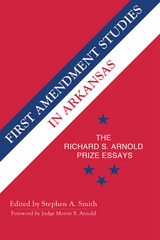 First Amendment Studies in Arkansas: The Richard S. Arnold Prize Essays
Stephen Smith
University of Arkansas Press, 2016 This collection of fourteen essays written by young communication scholars at the University of Arkansas presents unique insights into how First Amendment issues have played out in the state. Rather than exploring the particular legal issues and the constitutional principles enunciated by the courts, First Amendment Studies tells the stories of actual people expressing challenged or unpopular points of view and reveals the ways that constitutional controversies arise from the actions of local officials and individual citizens. Drawing on public documents as well as extensive interviews with participants, these essays demonstrate the dynamics of democratic dissent—on college campuses, in public schools, in churches, on the streets, in the forests and on the farms, and in legislative chambers and courtrooms. Each essay was selected for the Richard S. Arnold Prize in First Amendment Studies, an endowed fund established in 1999 to encourage University of Arkansas graduate students in communication and the liberal arts to explore and examine questions about freedom of speech and freedom of religion.
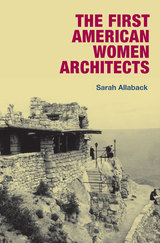 The First American Women Architects
Sarah Allaback
University of Illinois Press, 2007 By 1920, there were over two hundred women practicing architecture in the United States, actively working on major design and building projects before they were even given the right to vote. These women designed thousands of buildings nationwide: apartments in Kansas City, hotels in the nation's national parks, churches in Michigan, and mansions on the coast of California, to name a few. In The First American Women Architects, Sarah Allaback chronicles the lives and careers of more than seventy pioneering female architects practicing in the United States in the late nineteenth and early twentieth centuries, nearly all of whom have been forgotten--until now. Organized alphabetically as a reference guide, this volume provides a biographical sketch of each architect's life, education, and professional career, and a list of known works and sources for further research. Many of these remarkable women have never before appeared in any other history, making The First American Women Architects a unique and invaluable reference for students and scholars interested in women's history and architecture. As an instructive record of the legacy of women in architectural history, this book will also serve as a stimulating indicator of the broadening potential for women and other minorities within the field of architecture.
First among Abbots: The Career of Abbo of Fleury
Elizabeth Dachowski
Catholic University of America Press, 2008 Presents a coherent picture of this multifaceted man with an emphasis on his political alliances and the political considerations that colored his earliest biographical treatment.
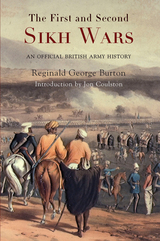 The First and Second Sikh Wars
Reginald George Burton
Westholme Publishing, 2008 The Wars That Gave Great Britain Control of India
The First and Second Sikh Wars of the 1840s were the final battles that secured British domination of the Indian subcontinent for the next century. Noted for both their brutality and sophistication in tactics—with large-scale cavalry clashes, sieges, and artillery and infantry engagements—the wars against the Sikh principalities not only handed control of India to Great Britain, but the defeated Sikh armies ended up becoming some of the most loyal and ablest soldiers of the British Empire. The lessons from these wars also influenced changes in British military policy and strategies, particularly against indigenous peoples. In 1911, the British Army command asked its historical branch in India to prepare a military history of the Sikh Wars. The result, The First and Second Sikh Wars, is a publication rich in detail and analysis and a treasure trove of background information about the British Army in India, Sikh culture at the time, and the battles of Ferozeshah, Aliwal, Chillianwala, and Gujrat. Despite the importance of these wars in the history of both the nineteenth century and the modern era, there are no similar complete narrative accounts of these conflicts available that rely on official records of the period. This facsimile is enhanced by historian Jon Coulston's new introduction and suggestions for further reading.
The First and Second United States Empires
Jack Ericson Eblen
University of Pittsburgh Press, 1968 In the late eighteenth century the fledgling republic of the United States was faced with the problem of devising a form of government to oversee its vast land possessions north and west of the Ohio River. To fill this need, Thomas Jefferson drafted the Ordinance of 1784, which evolved into the Northwest Ordinance of 1787. Deliberately modeled on the British colonial system, it granted territorial governors broad autocratic powers. It defined government in the Northwest, and all other subsequent territories in the public domain. Eblen defines two historical periods (empires): 1787-1848; and 1849-1912; based on government land acquisition. This book describes the nature of government in all the contiguous territories of the United States, offering an original and comprehensive view of the role and meaning of territorial government, and the administration of the Western territories.
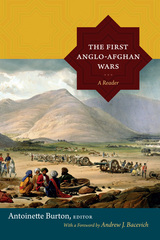 The First Anglo-Afghan Wars: A Reader
Antoinette Burton, ed.
Duke University Press, 2014 Designed for classroom use, The First Anglo-Afghan Wars gathers in one volume primary source materials related to the first two wars that Great Britain launched against native leaders of the Afghan region. From 1839 to 1842, and again from 1878 to 1880, Britain fought to expand its empire and prevent Russian expansion into the region's northwest frontier, which was considered the gateway to India, the jewel in Victorian Britain's imperial crown. Spanning from 1817 to 1919, the selections reflect the complex national, international, and anticolonial interests entangled in Central Asia at the time. The documents, each of which is preceded by a brief introduction, bring the nineteenth-century wars alive through the opinions of those who participated in or lived through the conflicts. They portray the struggle for control of the region from the perspectives of women and non-Westerners, as well as well-known figures including Kipling and Churchill. Filled with military and civilian voices, the collection clearly demonstrates the challenges that Central Asia posed to powers attempting to secure and claim the region. It is a cautionary tale, unheeded by Western powers in the post–9/11 era.
 The First Asians in the Americas: A Transpacific History
Diego Javier Luis
Harvard University Press, 2023 “Essential reading.” —Erika Lee, author of The Making of Asian America
“A broadly thought-provoking book.” —Asian Review of Books
“Fascinating…[this book] indicates new avenues of research…[and] stands as a bellwether for shifting trajectories of analysis that invite micro-historical follow-up.” —H-Net Reviews
“[This book] offers an invaluable perspective… [it] not only intellectually satisfies the reader with a necessary and innovative view . . . but also makes us want to learn more about this essential and still insufficiently explored topic...will become a fundamental pillar within the discipline.” —Colonial Latin American Review
Between 1565 and 1815, the so-called Manila galleons monopolized trade between Spain’s Asian and American colonies. Sailing from the Philippines to Mexico and back, these Spanish ships also facilitated the earliest migrations and displacements of Asian peoples to the Americas. Hailing from Gujarat, Nagasaki, and many places in between, both free and enslaved Asians made the treacherous transpacific journey each year.
Diego Javier Luis chronicles this first sustained wave of Asian mobility to the Americas, shedding new light on the daily lives of those who disembarked at Acapulco. There, diverse ethnolinguistic populations officially became “chinos,” racialized as members of a single caste under colonial control. Luis shows how Asians resisted legal strictures, forging new connections across ethnic groups and continually adapting to adverse conditions.
Detailing an important era in the construction of race, The First Asians in the Americas vividly unfolds what it meant to be “chino” in the early modern Spanish empire and reveals the significance of colonial Latin America to Asian diasporic history.
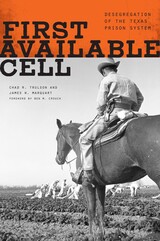 First Available Cell: Desegregation of the Texas Prison System
By Chad R. Trulson and James W. Marquart
University of Texas Press, 2009 Decades after the U.S. Supreme Court and certain governmental actions struck down racial segregation in the larger society, American prison administrators still boldly adhered to discriminatory practices. Not until 1975 did legislation prohibit racial segregation and discrimination in Texas prisons. However, vestiges of this practice endured behind prison walls. Charting the transformation from segregation to desegregation in Texas prisons—which resulted in Texas prisons becoming one of the most desegregated places in America—First Available Cell chronicles the pivotal steps in the process, including prison director George J. Beto's 1965 decision to allow inmates of different races to co-exist in the same prison setting, defying Southern norms. The authors also clarify the significant impetus for change that emerged in 1972, when a Texas inmate filed a lawsuit alleging racial segregation and discrimination in the Texas Department of Corrections. Perhaps surprisingly, a multiracial group of prisoners sided with the TDC, fearing that desegregated housing would unleash racial violence. Members of the security staff also feared and predicted severe racial violence. Nearly two decades after the 1972 lawsuit, one vestige of segregation remained in place: the double cell. Revealing the aftermath of racial desegregation within that 9 x 5 foot space, First Available Cell tells the story of one of the greatest social experiments with racial desegregation in American history.
The First Biography of Joan of Arc: Translated and Annotated by Daniel Rankin and Claire Quintal
Daniel Rankin
University of Pittsburgh Press, 1964 Father Daniel Rankin and Claire Quintal have translated the original French manuscript biography of Joan of Arc, adding as well the first English translation of a brief chronicle of great moments in Joan's career. The original authors of both documents remain anonymous, although the author of the manuscript biography gives a clue to the time it was written. He explains that he compiled the work “By order of the King, Louis XII of that name.” That places the writing before 1515, the year Louis XII died.
This edition includes not only the fully translated manuscript of the biography and chronicle of Joan of Arc, but expert commentary and explanation by Rankin and Quintal, who have also retained the literary tone of the sixteenth-century text. An appendix offers the first text in English about Joan's close friend, Ambrose de Loré.
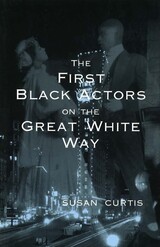 The First Black Actors on the Great White Way
Susan Curtis
University of Missouri Press, 1998 On April 5, 1917, Three Plays for a Negro Theater by Ridgely Torrence opened at the Garden Theatre in New York City. This performance was a monumental event in American stage history. Not only was this the first dramatic production to portray African American life beyond the cliché, it was also the first production on Broadway to feature an all-black cast. The morning after the three plays were performed, newspapers were filled with praise for the cast, crew, and playwright. Audience member W. E. B. Du Bois declared the show "epoch making." Despite such early critical acclaim, Three Plays for a Negro Theater closed before the end of the month and received little attention thereafter. Why was a nation, so fascinated with firsts, able to forget these black actors and this production so quickly? It is this question that Susan Curtis addresses in The First Black Actors on the Great White Way. Set against the backdrop of transforming theater conventions in the early 1900s and the war in 1917, this important study relates the stories of the actors, stage artists, critics, and many others—black and white—involved in this groundbreaking production. Curtis explores in great depth both the progress in race relations that led to this production and the multifaceted reasons for its quick demise. Three Plays for a Negro Theater opened on the eve of the United States' entrance into World War I. Curtis attributes the early closure of the three plays to this coincidence, but she does not settle for so simple an explanation. Rather, she investigates the heightened national self-consciousness that followed the United States' entry into the war. America was ready to "make the world safe for democracy," but it was not fully ready to accept democracy and equality in its own culture. The First Black Actors on the Great White Way is not simply a study of African American theater and its entrance into American culture. By focusing on a single event at a critical moment in history, Curtis offers a unique glimpse into race relations in early-twentieth-century American society. The experience of these pioneering artists reveals an unexplored aspect of the painfully slow evolution of racial equality. A remarkable story about people who waged an extraordinary campaign against racism, The First Black Actors on the Great White Way will be of special interest to scholars of American studies, race relations, and cultural history, as well as the general reader.
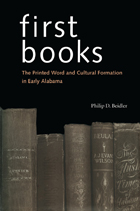 First Books: The Printed Word and Cultural Formation in Early Alabama
Philip D. Beidler
University of Alabama Press, 1999 This case study in cultural mythmaking shows how antebellum Alabama created itself out of its own printed texts, from treatises on law and history to satire, poetry, and domestic novels. Early 19th-century Alabama was a society still in the making. Now Philip Beidler tells how the first books written and published in the state influenced the formation of Alabama's literary and political culture. As Beidler shows, virtually overnight early Alabama found itself in possession of the social, political, and economic conditions required to jump start a traditional literary culture in the old Anglo-European model: property-based class relationships, large concentrations of personal wealth, and professional and merchant classes of similar social, political, educational, and literary views. Beidler examines the work of well-known writers such as humorist Johnson J. Hooper and novelist Caroline Lee Hentz, and takes on other classic pieces like Albert J. Pickett's History of Alabama and Alexander Beaufort Meek's epic poem The Red Eagle. Beidler also considers lesser-known works like Lewis B. Sewall's verse satire The Adventures of Sir John Falstaff the II, Henry Hitchcock's groundbreaking legal volume Alabama Justice of the Peace, and Octavia Walton Levert's Souvenirs of Travel. Most of these works were written by and for society's elite, and although many celebrate the establishment of an ordered way of life, they also preserve the biases of authors who refused to write about slavery yet continually focused on the extermination of Native Americans. First Books returns us to the world of early Alabama that these texts not only recorded but helped create. Written with flair and a strong individual voice, it will appeal not only to scholars of Alabama history and literature but also to anyone interested in the antebellum South.
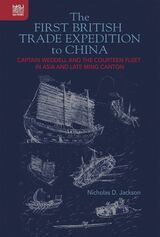 The First British Trade Expedition to China: Captain Weddell and the Courteen Fleet in Asia and Late Ming Canton
Nicholas D. Jackson
Hong Kong University Press, 2022 A groundbreaking study of early modern British enterprise in south China.
In The First British Trade Expedition to China, Nicholas D. Jackson explores the pioneering British trade expedition to China launched in the late Ming period by Charles I and the Courteen Association. Utilizing the vivid perspective of its commander Captain John Weddell, this study concentrates on the fleet’s adventures in south China between Portuguese Macao and the provincial capital, Guangzhou. Tracing the obscure origins of Sino-British diplomatic and commercial relations back to the late Ming era, Jackson examines the first episodes of Sino-British interaction, exchange, and collision in the seventeenth century. His analysis constitutes a groundbreaking study of early modern British initiatives and enterprises in the coastal areas of south China.
The First Chouteaus: RIVER BARONS OF EARLY ST. LOUIS
William E. Foley and C. David Rice
University of Illinois Press, 1983
For more than half a century, Auguste and Pierre Chouteau dominated trade and enterprise in the Mississippi Valley. In their various roles as merchants, Indian traders, bankers, land speculators, governmental advisors, public officials, and community leaders, the Chouteau brothers exerted a tremendous influence on westward expansion. This is the first full account of their lives and illustrious careers.
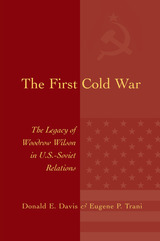 The First Cold War: The Legacy of Woodrow Wilson in U.S. - Soviet Relations
Donald E. Davis & Eugene P. Trani
University of Missouri Press, 2002 In The First Cold War, Donald E. Davis and Eugene P. Trani review the Wilson administration’s attitudes toward Russia before, during, and after the Bolshevik seizure of power. They argue that before the Russian Revolution, Woodrow Wilson had little understanding of Russia and made poor appointments that cost the United States Russian goodwill. Wilson later reversed those negative impressions by being the first to recognize Russia’s Provisional Government, resulting in positive U.S.–Russian relations until Lenin gained power in 1917. Wilson at first seemed unsure whether to recognize or repudiate Lenin and the Bolsheviks. His vacillation finally ended in a firm repudiation when he opted for a diplomatic quarantine having almost all of the ingredients of the later Cold War. Davis and Trani argue that Wilson deserves mild criticism for his early indecision and inability to form a coherent policy toward what would become the Soviet Union. But they believe Wilson rightly came to the conclusion that until the regime became more moderate, it was useless for America to engage it diplomatically. The authors see in Wilson’s approach the foundations for the “first Cold War”—meaning not simply a refusal to recognize the Soviet Union, but a strong belief that its influence was harmful and would spread if not contained or quarantined. Wilson’s Soviet policy in essence lasted until Roosevelt extended diplomatic recognition in the 1930s. But The First Cold War suggests that Wilson’s impact extended beyond Roosevelt to Truman, showing that the policies of Wilson and Truman closely resemble each other with the exception of an arms race. Wilson’s intellectual reputation lent credibility to U.S. Cold War policy from Truman to Reagan, and the reader can draw a direct connection from Wilson to the collapse of the USSR. Wilsonians were the first Cold War warriors, and in the era of President Woodrow Wilson, the first Cold War began.
 First Contact: Speculative Visions of the Conquest of the Americas
Zac Zimmer
Northwestern University Press, 2025 Examining the power of speculative fiction to reimagine historical accounts of the conquest of the Americas The historical conquest of the Americas resides at the core of all first-contact narratives, which stage colonization and resistance in the generic guise of speculative fiction. Starting from this axiom, First Contact: Speculative Visions of the Conquest of the Americas moves through a corpus of Mexican novels, Andean visual arts practices, and other cultural artifacts that have dramatized counterfactual narratives. Reimagining the early colonial period’s historiography from a south-to-north directionality while inventing parallel realities, these texts, which are concerned with limit cases, alterities, and alternative temporalities, refuse any reliance on the imperial ontologies of European expansion. Zac Zimmer examines these works to explore the slippage that exists between science fiction as the exemplary genre of the modern, colonial reality and literary speculation as an aesthetic tool that can be used to imagine other possible worlds. First Contact thus poses a foundational question: Can we understand the conquest as an originary world-historical event without eclipsing the other cosmologies that existed, and continue to exist, within the contact zone? Can we decolonize the speculative imagination itself?
First Course In Turbulence
Dean Young
University of Pittsburgh Press, 1999 Finalist for ForeWord Magazine 1999 Poetry Book of the Year
With rapid shifts between subject and tone, sometimes within single poems, Dean Young’s latest book explores the kaleidoscopic welter of art and life. Here parody does not exclude the cri de coeur any more than seriousness excludes the joke. With surrealist volatility, these poems are the result of experiments that continue for the reader during each reading. Young moves from reworkings of creation myths, the index of the Norton Anthology of Poetry, pseudo reports and memos, collaged biographies, talking clouds, and worms, to memory, mourning, sexual playfulness, and deep sadness in the course of this turbulent book.
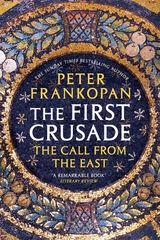 The First Crusade: The Call from the East
Peter Frankopan
Harvard University Press, 2012 “The most significant contribution to rethinking the origins and course of the First Crusade for a generation.”
—Mark Whittow, Times Literary Supplement
“Filled with Byzantine intrigue, in every sense this book is important, compellingly revisionist and impressive. It refocuses the familiar western story through the eyes of the emperor of the east and fills in the missing piece of the puzzle of the Crusades.”
—Simon Sebag Montefiore, author of Jerusalem: The Biography
“Highly readable…its presentation of political machinations, compromises, and betrayals seems utterly convincing.”
—Michael Dirda, Washington Post
“A dazzling book, perfectly combining deep scholarship and easy readability. The most important addition to Crusading literature since Steven Runciman.”
—John Julius Norwich, author of Byzantium
“Fluent and dramatic…Frankopan rightly places the Emperor Alexios at the heart of the First Crusade, skillfully adding a dimension frequently missing from our understanding of this seminal event.”
—Jonathan Phillips, author of Holy Warriors
In 1096, an expedition of extraordinary scale and ambition set off from western Europe on a mass pilgrimage to Jerusalem. Three years later, after a journey that saw acute hardship, the most severe dangers, and thousands of casualties, the knights of the First Crusade found themselves storming the fortifications and capturing the Holy City. Against all odds, the expedition had returned Jerusalem to Christian hands.
In this groundbreaking book, Peter Frankopan paints a vivid picture of this infamous confrontation between Christianity and Islam. Basing his account on long-ignored eastern sources, he gives a provocative and highly original explanation of the world-changing events that followed. The Vatican’s victory cemented papal power, while Constantinople, the heart of the still-vital Byzantine Empire, never recovered. Frankopan’s revolutionary work shows how the taking of Jerusalem set the stage for western Europe’s dominance and shaped the modern world.
First Day at Gettysburg: Crisis at the Crossroads
Warren W. Hassler Jr
University of Alabama Press, 1970 “Hassler’s history will survive as our most detailed narrative of the first day’s battle, examining the day’s action so minutely that no succeeding historian of Gettysburg will be able to ignore it. Hassler’s book has solid virtues in addition to its thoroughness of detail: it offers a persuasive argument that the first day’s events largely determined the eventual outcome of the battle; Hassler displays uncommonly complete knowledge of the battlefield terrain [and] makes uniquely good use of the information that can be gleaned from the monuments and markers on the battlefield.” – American Historical Review
First Day to Final Grade, Third Edition: A Graduate Student's Guide to Teaching
Anne Curzan and Lisa Damour
University of Michigan Press, 2011 The third edition of First Day to Final Grade: A Graduate Student’s Guide to Teaching is designed to help new graduate student teaching assistants navigate the challenges of teaching undergraduates. Both a quick reference tool and a fluid read, the book focuses on the “how tos” of teaching, such as setting up a lesson plan, running a discussion, and grading, as well as issues specific to the teaching assistant’s unique role as both student and teacher.
This new edition incorporates newer teaching and learning pedagogy. The book has been updated to reflect the role of technology both inside and outside the classroom. In addition, a new chapter has been added that discusses successfully transitioning from being a teaching assistant to being hired as a full-time instructor.
 First Do No Harm: Humanitarian Intervention and the Destruction of Yugoslavia
David N. Gibbs
Vanderbilt University Press, 2009 In First Do No Harm, David Gibbs raises basic questions about the humanitarian interventions that have played a key role in U.S. foreign policy for the past twenty years. Using a wide range of sources, including government documents, transcripts of international war crimes trials, and memoirs, Gibbs shows how these interventions often heightened violence and increased human suffering.
The book focuses on the 1991-99 breakup of Yugoslavia, which helped forge the idea that the United States and its allies could stage humanitarian interventions that would end ethnic strife. It is widely believed that NATO bombing campaigns in Bosnia and Kosovo played a vital role in stopping Serb-directed aggression, and thus resolving the conflict.
Gibbs challenges this view, offering an extended critique of Samantha Power's Pulitzer Prize-winning book, A Problem from Hell: America in the Age of Genocide. He shows that intervention contributed to the initial breakup of Yugoslavia, and then helped spread the violence and destruction. Gibbs also explains how the motives for U.S. intervention were rooted in its struggle for continued hegemony in Europe.
First Do No Harm argues for a new, noninterventionist model for U.S. foreign policy, one that deploys nonmilitary methods for addressing ethnic violence.
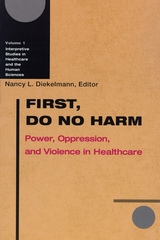 First, Do No Harm: Power, Oppression, and Violence in Healthcare
Edited by Nancy L. Diekelmann
University of Wisconsin Press, 2002 First, Do No Harm shows how health care professionals, with the best intentions of providing excellent, holistic health care, can nonetheless perpetuate violence against vulnerable patients. The essays investigate the need to rethink contemporary healthcare practices in ways that can bring the art and science of medicine back into sorely needed balance.
These ground-breaking studies by noted scholars question commonly held assumptions in contemporary healthcare that underlie oppressive power dynamics and even violence for patients and their families. The contributors discuss such topics as women and violence, life-support technologies, and healthcare professionals’ own experiences as patients. First, Do No Harm opens the discourse for reaching new understandings, from reassessing the meaning of "quality of life" to questioning the appropriateness of the very language used by healthcare professionals. It will be welcomed by healthcare workers and by scholars in nursing, medicine, and the allied health sciences.
First Electronic Computer: The Atanasoff Story
Alice R. Burks and Arthur W. Burks
University of Michigan Press, 1989 This is the story of the electronic computer that launched the computer revolution, a machine completed in 1942 by John Atanasoff but one he left behind in Iowa for war research in Washington. Drawing on their direct knowledge and on the proceedings of a multimillion-dollar patent trial, the authors upset the commonly held view that the ENIAC was the world's first electronic computer. They detail the Atanasoff computer and its influence on the ENIAC and computers of today. This book supplements the court's strong findings with a much-needed technical foundation as well as a narrative that is rich in human interest.
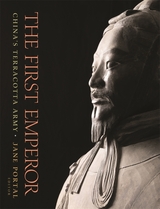 The First Emperor: China's Terracotta Army
Jane Portal
Harvard University Press, 2007 Standing guard around the tomb of Qin Shihuangdi, the ranks of a terracotta army bear silent witness to the vast power of the First Emperor of the Qin Dynasty, who unified China in 221 BCE. Six thousand warriors and horses make up the army, while chariots, a military guard, and a command post complete the host. A new look at one of the most spectacular finds in the annals of archaeology, this book also considers the historical and archaeological context of the Terracotta Army, as well as the extensive research and excavation carried out since its discovery in 1974.
In richly illustrated chapters, experts in the field describe the Qin's rise and military conquest, the empire's ideology and practices, and the emperor's achievements and legacy. The authors examine the site itself, including new discoveries such as terracotta bureaucrats, acrobats, and strongmen, life-size bronze birds, hundreds of suits of stone armor, and terracotta warriors with colored faces preserved with new technology.
From explorations of the massive mausoleum and the rituals that surrounded it, to explanations of the actual manufacture of the Terracotta Army, the book offers a detailed and authoritative tour of one of ancient history's most eloquent memorials, with all it says of China's long and coherent cultural past--and future potential.
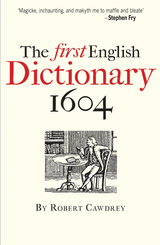 The First English Dictionary 1604: Robert Cawdrey's A Table Alphabeticall
Robert Cawdrey
Bodleian Library Publishing, 2007 English is one of the most complicated languages to learn, and its constantly evolving vocabulary certainly doesn’t help matters. For centuries, men and women have striven to chronicle and categorize the expressions of the English language, and Samuel Johnson is usually thought to be their original predecessor. But that lineage is wrong: Robert Cawdrey published his Table Alphabeticall in 1604, 149 years before Johnson’s tome, and it is now republished here for the first time in over 350 years. This edition, prepared from the sole surviving copy of the first printing, documents Cawdrey’s fascinating selection of 2,543 words and their first-ever definitions. Cawdrey subtitled his dictionary “for the benefit of Ladies, Gentlewomen, and other unskilled folk,” for his aim was not to create a comprehensive catalog, but rather an in-depth guide for the lesser educated who might not know the “hard usual English wordes, borrowed from the Hebrew, Greeke, Latine, or French.” Each entry reveals an intriguing facet of early modern life and the cultural mores of the time. There are familiar terms—“geometrie” was defined as “the art of measuring the earth,” and a “concubine” was described as a “harlot, or light huswife”—and amusingly idiomatic definitions: "prodigall" is "too riotous in spending," while "hecticke" is "inflaming the hart, and soundest parts of the bodie.” John Simpson, chief editor of the Oxford English Dictionary, contributes an insightful introduction that recounts the eventful life of Robert Cawdrey and his mission to become the first English lexicographer. A treasure-trove of linguistic oddity and history for the bibliophile, budding lexicographer, or obsessive Scrabble player, The First English Dictionary, 1604 reveals the roots of our language in all its eccentric glory.
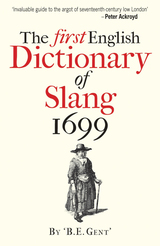 The First English Dictionary of Slang, 1699
B. E. Gent
Bodleian Library Publishing, 2010 It’s a shame that so many very apt words fall out of common use over time, like “blobber-lippd,” which means having lips that are very thick, hanging down, or turning over; and “chounter”, which is to talk pertly, and sometimes angrily. Both words can be found in The First English Dictionary of Slang, originally published in 1699 as A New Dictionary of Terms, Ancient and Modern, of the Canting Crew by B. E. Gentleman. Though a number of early texts, beginning in the sixteenth century, codified forms of cant—the slang language of the criminal underworld—in word lists which appeared as appendices or parts of larger volumes, the dictionary of 1699 was the first work dedicated to slang words and their meanings. It aimed to educate the more polite classes in the language and, consequently, the methods of thieves and vagabonds, protecting the innocent from cant speakers and their activities. This dictionary is also the first that attempts to show the overlap and integration between canting words and common slang words. Refusing to distinguish between criminal vocabulary and the more ordinary everyday English of the period, it sets canting words side by side with terms used in domestic culture and those used by sailors and laborers. With such a democratic attitude toward words, this text is genuinely a modern dictionary, as well as the first attempt by dictionary makers to catalog the ever-changing world of English slang. Reproduced here with an introduction by John Simpson, chief editor of the Oxford English Dictionary, describing the history and culture of canting in the seventeenth and eighteenth centuries, as well as the evolution of English slang, this is a fascinating volume for all who marvel at words and may wish to reclaim a few—say, to dabble in the parlance of a seventeenth-century sailor one day and that of a vagabond the next.
|
|



